opioid epidemic / opioid crisis
description: a public health crisis involving the excessive use and abuse of opioid drugs
130 results
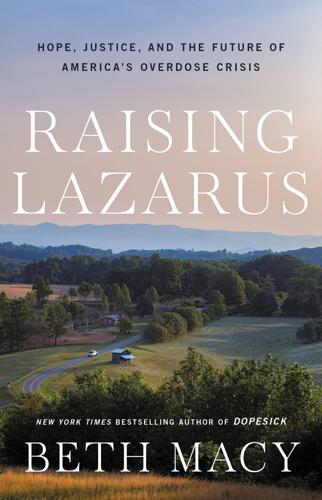
Raising Lazarus: Hope, Justice, and the Future of America’s Overdose Crisis
by
Beth Macy
Published 15 Aug 2022
“public outrage”: Nan Goldin, author interview, July 24, 2020. on a par with Sally Mann: See: Thessaly La Force, “Nan Goldin Survived Overdose to Fight the Opioid Epidemic,” New York Times Style Magazine, June 11, 2018, https://www.nytimes.com/2018/06/11/t-magazine/a-heroin-chic-photographers-new-project-tackling-the-opioid-epidemic.html; and Janna Malamud Smith, “Art, Drugs and Money: How to View the Complicated Legacy of Arthur M. Sackler,” WBUR Cognoscenti, March 29, 2019, https://www.wbur.org/cognoscenti/2019/03/29/sackler-oxycontin-opioid-crisis-art-janna-malamud-smith. bad-boy hijinks: Mike Quinn, author interview, July 20, 2020. “make Nan stop”: PAIN meeting, author interviews, December 4, 2019.
…
No. 1 tool: Nicole Kravitz-Wirtz et al., “Association of Medicaid Expansion with Opioid Overdose Mortality in the United States,” JAMA Network (January 10, 2020), https://jamanetwork.com/journals/jamanetworkopen/fullarticle/2758476; and Kendal Orgera and Jennifer Tolbert, “The Opioid Epidemic and Medicaid’s Role in Facilitating Access to Treatment,” KFF, May 24, 2019, https://www.kff.org/medicaid/issue-brief/the-opioid-epidemic-and-medicaids-role-in-facilitating-access-to-treatment/. last or next to last: “2018 Annual Report,” America’s Health Rankings, United Health Foundation, 2022, https://www.americashealthrankings.org/learn/reports/2018-annual-report/findings-state-rankings. cumbersome access barriers: “Spotlight on Mississippi: Best Practices and Next Steps in the Opioid Epidemic,” American Medical Association, May 2019, https://www.end-opioid-epidemic.org/wp-content/uploads/2019/05/AMA-Paper-Spotlight-on-Mississippi-May-2019_FOR-WEB.pdf.
…
all-time record: “Overdose Deaths Accelerating During COVID-19,” press release, Centers for Disease Control and Prevention, December 17, 2020, https://www.cdc.gov/media/releases/2020/p1218-overdose-deaths-covid-19.html. $26 billion: Amanda Bronstad, “Lawyers Suing Over Opioid Crisis Announce $26 B Proposed Settlement,” Law.com, November 5, 2020. food fight: Mike Moore, e-mail to author, February 18, 2021. (died at age 70): Emily Langer, “Paul J. Hanly Jr., key lawyer in opioid litigation, dies at 70,” Washington Post, May 24, 2021. “we are screwed”: Barry Meier, Pain Killer: An Empire of Deceit and the Origin of America’s Opioid Epidemic, 2d ed. (New York: Penguin Random House, 2018), 163, footnoting a secret prosecution memo from the 2007 federal case.
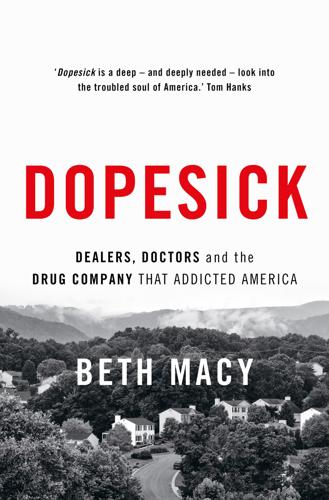
Dopesick: Dealers, Doctors and the Drug Company That Addicted America
by
Beth Macy
Published 4 Mar 2019
Princeton economist Alan B. Krueger’s 2017 study also backs Monnat’s thesis: “The opioid crisis and depressed labor force participation are now intertwined in many parts of the U.S.,” he said, in the Brookings Institution paper “Where Have All the Workers Gone? An Inquiring into the Decline of the U.S. Labor Force Participation Rate,” Sept. 7, 2017, found here: https://www.brookings.edu/bpea-articles/where-have-all-the-workers-gone-an-inquiry-into-the-decline-of-the-u-s-labor-force-participation-rate/. Related: Fred Dews, “How the Opioid Epidemic Has Affected the U.S. Labor Force, County-by-County,” Brookings Institution, Sept. 7, 2017.
…
financial toll of $1 trillion: As reported in Altarum, “Economic Toll of Opioid Crisis in U.S. Exceeded $1 Trillion Since 2001,” Feb. 13, 2018. “An additional $500 billion is estimated through 2020 if current conditions persist,” the health care firm estimated. The White House Council of Economic Advisers calculated the costs at $504 billion in 2015 alone, according to “Council of Economic Advisers Report: The Underestimated Cost of the Opioid Crisis,” Nov. 20, 2017, https://www.whitehouse.gov/briefings-statements/cea-report-underestimated-cost-opioid-crisis/. only a few voices of dissent: Seddon R. Savage, “Long-Term Opioid Therapy: Assessment of Consequences and Risks,” Journal of Pain and Symptom Management, May 1996: 274.
…
“really bad for you”: Aubrey Whelan and Don Sapatkin, “Advisers: Trump Won’t Declare Opioid Crisis a National Emergency,” Philadelphia Inquirer, Aug. 9, 2017. A few days later, he seemed to change his mind: Brianna Ehley, “Trump Says He Will Declare Opioid Crisis a ‘National Emergency,’” Politico, Aug. 10, 2017. the so-called emergency was retrumpeted: In ninety-day increments, federal agencies could more freely use existing money to mitigate the crisis, and Trump’s aides pledged that eventually Trump would release more money for treatment: Julie Hirschfeld Davis, “Trump Declares Opioid Crisis a ‘Health Emergency’ But Requests No Funds,” New York Times, Oct. 26, 2017.
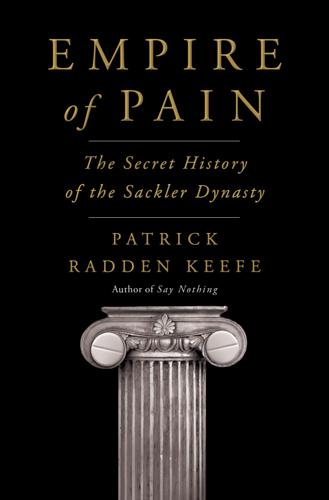
Empire of Pain: The Secret History of the Sackler Dynasty
by
Patrick Radden Keefe
Published 12 Apr 2021
“The Role of Purdue Pharma”: Memorandum re. Hearing on “The Role of Purdue Pharma and the Sackler Family in the Opioid Epidemic,” Committee on Oversight and Reform, U.S. House of Representatives, Dec. 14, 2020. “deep sadness about the opioid crisis”: “The Role of Purdue Pharma and the Sackler Family in the Opioid Epidemic,” Hearing before the House Oversight And Reform Committee of the U.S. House of Representatives, Dec. 17, 2020. intensified the opioid crisis: “The Opioid Crisis, Already Serious, Has Intensified During Coronavirus Pandemic,” Wall Street Journal, Sept. 8, 2020; “ ‘The Drug Became His Friend’: Pandemic Drives Hike in Opioid Deaths,” New York Times, Sept. 29, 2020.
…
In fact, more Americans had lost their lives from opioid overdoses than had died in all of the wars the country had fought since World War II. * * * Mary Jo White sometimes observed that one thing she loved about the law is the way it forces you “to distill things down to their essence.” The opioid epidemic was an enormously complex public health crisis. But, as Paul Hanly questioned Kathe Sackler, he was trying to distill this epic human tragedy down to its root causes. Prior to the introduction of OxyContin, America did not have an opioid crisis. After the introduction of OxyContin, it did. The Sacklers and their company were now defendants in more than twenty-five hundred lawsuits that were being brought by cities, states, counties, Native American tribes, hospitals, school districts, and a host of other litigants.
…
Whatever White might say about the law getting to “the essence” of things, when your client is in the hot seat in a deposition, the whole point is to avoid the essence. “Dr. Sackler, does Purdue bear any responsibility for the opioid crisis?” Hanly asked. “Objection!” one of the lawyers interjected. “Objection!” another chimed in. “I don’t believe Purdue has a legal responsibility,” Kathe replied. That’s not what I asked, Hanly pointed out. What I want to know “is whether Purdue’s conduct was a cause of the opioid epidemic.” “Objection!” “I think it’s a very complex set of factors and confluence of different circumstances and societal issues and problems and medical issues and regulatory gaps in different states across the country,” she replied.
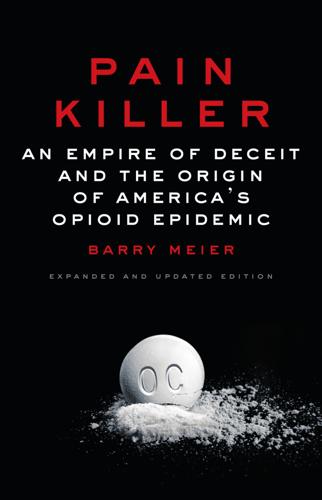
Pain Killer: An Empire of Deceit and the Origins of America’s Opioid Epidemic
by
Barry Meier
Published 29 Oct 2020
As the case played out in the Abingdon courthouse, witnesses would have testified and internal Purdue documents would have been entered as evidence. Whatever rebuttals defense lawyers offered, a bright light, both shocking and clarifying, would have shone on the actions of Purdue. That light would have illuminated the origins of the opioid epidemic and likely altered its course, sparing thousands of lives that would soon be lost. ELEVEN Empire of Deceit In 2018, an opioid epidemic that began two decades earlier with OxyContin finally seized the nation’s attention. Over 250,000 Americans had died from overdoses involving prescription painkillers. Every day, hospital emergency rooms nationwide treated 1,000 people for abusing or misusing these drugs.
…
But counterfeit versions of fentanyl were rapidly driving up the overall numbers of overdose deaths. President Donald J. Trump, pointing to the death toll, officially declared the opioid crisis a national emergency. In early 2018, he announced a plan that included increasing addiction treatment and reducing the medical use of opioids. In that same speech, Trump called for a tougher approach to drug dealers, including using the death penalty. It wasn’t clear how his administration planned to fund its proposals to deal with the opioid crisis, but experts acknowledged that government officials had failed to stem an epidemic when they had had the chance. “We didn’t get ahead of it; nobody got ahead of it,” said Dr.
…
Originally published in the United States in hardcover and in significantly different form by Rodale, an imprint of the Crown Publishing Group, a division of Penguin Random House LLC, in 2003. Library of Congress Cataloging-in-Publication Data Names: Meier, Barry, author. Title: Pain killer : an empire of deceit and the origin of America’s opioid epidemic / Barry Meier. Description: 2nd edition. | New York : Random House, 2018. | Includes bibliographical references and index. Identifiers: LCCN 2018010496 | ISBN 9780525511106 (hardback : alk. paper) | ISBN 9780525511090 (ebook) Subjects: | MESH: Opioid-Related Disorders—epidemiology | Socioeconomic Factors | Oxycodone—history | Opioid-Related Disorders—history | Drug Overdose—epidemiology | History, 20th Century | History, 21st Century | United States Classification: LCC HV5822.O99 | NLM WM 286 | DDC 362.29/9—dc23 LC record available at lccn.loc.gov/2018010496 Ebook ISBN 9780525511090 randomhousebooks.com Book design by Virginia Norey, adapted for ebook Cover design: Ben Wiseman Cover images: Tim Hawley/Photographer’s Choice/Getty Images (pill), Imagospot/iStock (powder) v5.2 ep Contents Cover Title Page Copyright Prologue: Book of the Dead Chapter One: Pill Hill Chapter Two: The War Against Pain Chapter Three: Secrets of Dendur Chapter Four: A Pot of Gold Chapter Five: Senior Night Chapter Six: Hot Spots Chapter Seven: Kiddie Dope Chapter Eight: Purple Peelers Chapter Nine: The Body Count Chapter Ten: A Reckoning Chapter Eleven: Empire of Deceit Epilogue: The War Against Pain Revisited Acknowledgments Notes and Sources By Barry Meier About the Author PROLOGUE Book of the Dead Within a span of thirty-six hours in Philadelphia, nine bodies had been found just blocks away from one another.
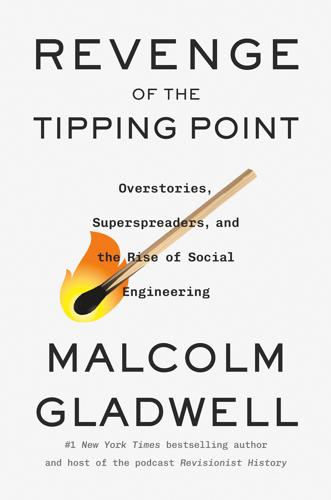
Revenge of the Tipping Point: Overstories, Superspreaders, and the Rise of Social Engineering
by
Malcolm Gladwell
Published 1 Oct 2024
We look at Miami and convince ourselves that it is no different from any other city, and look in surprise at the about-face of the American public on the subject of gay marriage. But in each instance it turns out we are wrong. So let us return to where we started, the opioid crisis. And let’s use the lessons from Poplar Grove and Miami and the Lawrence Tract and Harvard and Holocaust and Will & Grace—the lessons of superspreaders, group proportions, and overstories—to try to make sense of the chaos unleashed by OxyContin. Can we now understand the decisions and circumstances that led to the opioid epidemic? I think we can. 2. In the March 2019 edition of the academic journal Population and Development Review, there is an article by a demographer named Jessica Y.
…
Why does Indiana have twice the problem Illinois does? The opioid epidemic is commonly described as the result of a combination of social and economic crises afflicting the American working classes: the loss of manufacturing jobs, the hollowing out of communities, the breakdown of families, and the confluence of soaring rates of depression, mental illness, and despair. All those problems are important. But none of them explain Ho’s chart. Italy is much poorer than the United States, and it has much more unemployment. Where is their opioid crisis? The United Kingdom has more than its share of social problems.
…
Overdose Death Rates Involving Opioids, by Type, United States, 1999–2010 (Deaths per 100,000 people) Year Commonly Prescribed Opioids (Natural & Semi-Synthetic Opioids and Methadone) Heroin Synthetic Opioid Analgesics Excluding Methadone 1999 1.3 0.7 0.3 2000 1.4 0.7 0.3 2001 1.7 0.6 0.3 2002 2.3 0.7 0.4 2003 2.7 0.7 0.5 2004 3.1 0.6 0.6 2005 3.4 0.7 0.6 2006 4.1 0.7 0.9 2007 4.5 0.8 0.7 2008 4.6 1.0 0.8 2009 4.6 1.1 1.0 2010 5 1.0 1.0 These are the group proportions for the opioid crisis up until the point of OxyContin’s reformulation. As you can see, more than five times as many people were dying from drugs like OxyContin than were dying from heroin and fentanyl. As strange as it is to say this, if you must have an opioid epidemic, these are the group proportions you want: You want the majority of users to be dependent on prescription drugs. A prescription-drug epidemic is powered by a company operating within the law, answerable to shareholders, and regulated by a government agency.
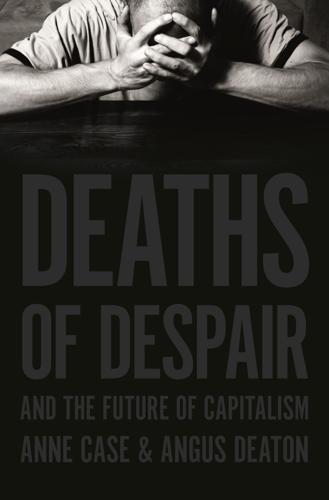
Deaths of Despair and the Future of Capitalism
by
Anne Case
and
Angus Deaton
Published 17 Mar 2020
,” 60 Minutes Overtime, February 24, https://www.cbsnews.com/news/the-opioid-epidemic-who-is-to-blame-60-minutes/; Scott Higham and Lenny Bernstein, 2017, “The drug industry’s triumph over the DEA,” Washington Post, October 15. 34. Peter Andrey Smith, 2019, “How an island in the antipodes became the world’s leading supplier of licit opioids,” Pacific Standard, July 11, updated July 24, https://psmag.com/ideas/opioids-limiting-the-legal-supply-wont-stop-the-overdose-crisis. 35. Katie Thomas and Tiffany Hsu, 2019, “Johnson and Johnson’s brand falters over its role in the opioid crisis,” New York Times, August 27. 36. District of Massachusetts, US Attorney’s Office, Department of Justice, 2019, “Founder and four executives of Insys Therapeutics convicted of racketeering conspiracy,” May 2, https://www.justice.gov/usao-ma/pr/founder-and-four-executives-insys-therapeutics-convicted-racketeering-conspiracy. 37.
…
Morden, and Ellen Meara, 2019, “Medicaid expansion and prescription trends: Opioids, addiction therapies, and other drugs,” Medical Care, 57(3), 208–12, https://www.ncbi.nlm.nih.gov/pmc/articles/PMC6375792/; Andrew Goodman-Bacon and Emma Sandoe, 2017, “Did Medicaid expansion cause the opioid epidemic? There is little evidence that it did,” Health Affairs, August 23, https://www.healthaffairs.org/do/10.1377/hblog20170823.061640/full. 32. Energy and Commerce Committee, US Congress, 2018, Red flags and warning signs ignored: Opioid distribution and enforcement concerns in West Virginia, December 19, 4, https://republicans-energycommerce.house.gov/wp-content/uploads/2018/12/Opioid-Distribution-Report-FinalREV.pdf. 33. Brit McCandless Farmer, 2019, “The opioid epidemic: Who is to blame?,” 60 Minutes Overtime, February 24, https://www.cbsnews.com/news/the-opioid-epidemic-who-is-to-blame-60-minutes/; Scott Higham and Lenny Bernstein, 2017, “The drug industry’s triumph over the DEA,” Washington Post, October 15. 34.
…
Lauderdale, 2007, “Underperformance in affluence: The remarkable relative decline in U.S. heights in the second half of the 20th century,” Social Science Quarterly, 88, 283–305, https://doi.org/10.1111/j.1540-6237.2007.00458.x. Chapter 2: Things Come Apart 1. Brookings Institution, 2017, Policy approaches to the opioid crisis, featuring remarks by Sir Angus Deaton, Rep. Ann McLane Kuster, and Professor Bertha K. Madras: An event from the USC-Brookings Schaeffer Initiative for Health Policy, Washington, DC, November 3, https://www.brookings.edu/wp-content/uploads/2017/11/es_20171103_opioid_crisis_transcript.pdf. 2. Unless otherwise noted, throughout the book, we will refer to white non-Hispanics as “whites,” black non-Hispanics as “blacks,” and Hispanics of all races as “Hispanics.” 3.
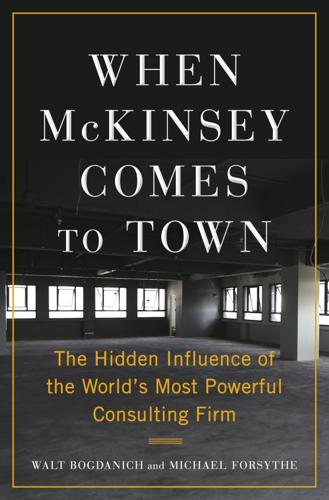
When McKinsey Comes to Town: The Hidden Influence of the World's Most Powerful Consulting Firm
by
Walt Bogdanich
and
Michael Forsythe
Published 3 Oct 2022
A McKinsey lawyer said at a federal court hearing in California that the firm was facing fifty additional lawsuits filed by cities, counties, Native American tribes, union health benefit plans, and schools, among others. McKinsey also set out to mitigate the problems it helped to create. In 2018, Tom Latkovic, a senior partner in Cleveland, co-authored an article titled “Why We Need Bolder Action to Combat the Opioid Epidemic.” Latkovic also co-authored a McKinsey article that offered ten “insights” into the opioid crisis. One warned that opioids are frequently prescribed to patients “with known or potential risk factors for abuse.” McKinsey also supported a nonprofit group, Shatterproof, dedicated to ending the stigma of drug addiction. Its founder, Gary Mendell, whose son killed himself after struggling with addiction, gives emotional speeches, including one at a McKinsey health-care conference, about how the stigma of opioid addiction delayed the quest to defeat the epidemic.
…
The firm wrote, “We have honored that mission by serving our clients effectively and investing in issues deeply relevant to society, such as social determinants of health, rural health, maternal health and behavioral health—including mental health, substance use and the opioid crisis.” * * * — Purdue is not solely to blame for the opioid epidemic. Doctors overprescribed OxyContin, pharmacists collected bonuses for filling prescriptions they shouldn’t have, the FDA and DEA allowed the epidemic to take shape, and lawmakers failed to enact laws to safeguard the public. “We didn’t get ahead of it.
…
GO TO NOTE REFERENCE IN TEXT A McKinsey lawyer said: Jeff Overley, “McKinsey Opioid MDL Has a Need for Speed, Judge Say,” Law 360 Legal News, July 29, 2021. GO TO NOTE REFERENCE IN TEXT In 2018, Tom Latkovic: Sarun Charumilind et al., “Why We Need Bolder Action to Combat the Opioid Epidemic,” McKinsey & Company, Sept. 6, 2018. GO TO NOTE REFERENCE IN TEXT “with known or potential risk factors”: Sarun Charumilind, Elena Mendez-Escobar, and Tom Latkovic, “Ten Insights on the US Opioid Crisis from Claims Data Analysis,” McKinsey & Company, June 5, 2018. GO TO NOTE REFERENCE IN TEXT Gary Mendell: Franklin Crawford, “Man on a Mission,” Cornell Alumni Magazine, Sept.

The Survival of the City: Human Flourishing in an Age of Isolation
by
Edward Glaeser
and
David Cutler
Published 14 Sep 2021
Reducing Deceit through Better Incentives There are many culprits in the opioid epidemic. The federal government not only permitted the prescribing of OxyContin after 1995 but actually subsidized its use through public health insurance programs, including Medicare and Medicaid, that did not restrict utilization. Environmental conditions mattered too. Physical pain, which is disproportionately rural, and low levels of life satisfaction, which are more common in some cities, predict opioid use. However, it is hard not to put much of the blame for the opioid crisis on Purdue Pharma itself and the companies that imitated it, for their misleading campaign of deceit and addiction.
…
laws between 2006 and 2012: Meara et al., “State Legal Restrictions and Prescription-Opioid Use among Disabled Adults.” Lawsuits began: Kornfield et al., “Purdue Pharma Agrees to Plead Guilty to Federal Criminal Charges in Settlement over Opioid Crisis.” In August 2010: Zhu et al., “Initial Opioid Prescriptions among U.S. Commercially Insured Patients, 2012–2017.” fell by 27 percent: Bonnie et al., Pain Management and the Opioid Epidemic: Balancing Societal and Individual Benefits and Risks of Prescription Opioid Use. One third of opioid users: Cicero and Ellis, “Abuse-Deterrent Formulations and the Prescription Opioid Abuse Epidemic in the United States.”
…
Accessed January 18, 2021. www.oecd.org/health/obesity-update.htm. ———. PISA 2012 Results in Focus: What 15-Year-Olds Know and What They Can Do with What They Know. 2014. http://www.oecd.org/pisa/keyfindings/pisa-2012-results-overview.pdf. “Origins of the Opioid Epidemic: Purdue Pharma Knew of OxyContin Abuse in 1996 but Covered It Up.” Democracy Now!, June 1, 2018. www.democracynow.org/2018/6/1/origins_of_the_opioid_epidemic_purdue. “Out-Producing the Enemy”: American Production During WWII. New Orleans: The National WWII Museum. www.nationalww2museum.org/sites/default/files/2017-07/mv-education-package.pdf. Overberg, Paul, Jon Kamp, and Daniel Michaels.
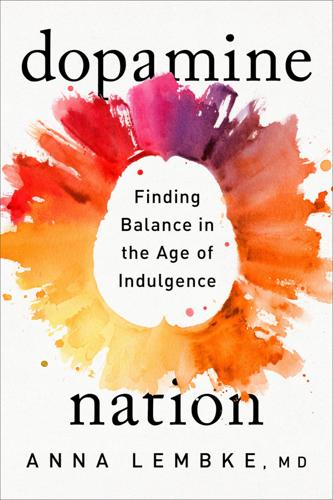
Dopamine Nation: Finding Balance in the Age of Indulgence
by
Anna Lembke
Published 24 Aug 2021
This is a wonderful theological and philosophical treatise on addiction and faith. US opioid epidemic: Anna Lembke, Drug Dealer, MD: How Doctors Were Duped, Patients Got Hooked, and Why It’s So Hard to Stop, 1st ed. (Baltimore: Johns Hopkins University Press, 2016). There are many excellent books on this topic, including Pain Killer: An Empire of Deceit and the Origin of America’s Opioid Epidemic, by Barry Meier; Dreamland: The True Tale of America’s Opiate Epidemic, by Sam Quinones; and Dopesick: Dealers, Doctors and the Drug Company That Addicted America, by Beth Macy. Each of these books, including my own, explores the origins of the opioid epidemic through a slightly different lens.
…
Each of these books, including my own, explores the origins of the opioid epidemic through a slightly different lens. “tremendous expansion of the supply”: ASPPH Task Force on Public Health Initiatives to Address the Opioid Crisis, Bringing Science to Bear on Opioids: Report and Recommendations, November 2019. “repeated exposure to opioids”: ASPPH Task Force on Public Health Initiatives to Address the Opioid Crisis, Bringing Science to Bear on Opioids: Report and Recommendations, November 2019. Prohibition led to a sharp decrease: Wayne Hall, “What Are the Policy Lessons of National Alcohol Prohibition in the United States, 1920–1933?,” Addiction 105, no. 7 (2010): 1164–73, https://pubmed.ncbi.nlm.nih.gov/20331549/.
…
I walk to the balcony and look down. Four stories . . . that would be enough.” * * * — One of the biggest risk factors for getting addicted to any drug is easy access to that drug. When it’s easier to get a drug, we’re more likely to try it. In trying it, we’re more likely to get addicted to it. The current US opioid epidemic is a tragic and compelling example of this fact. The quadrupling of opioid prescribing (OxyContin, Vicodin, Duragesic fentanyl) in the United States between 1999 and 2012, combined with widespread distribution of those opioids to every corner of America, led to rising rates of opioid addiction and related deaths.
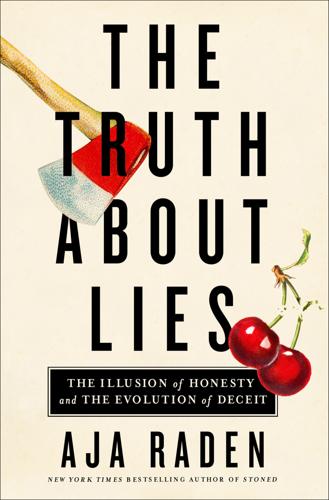
The Truth About Lies: The Illusion of Honesty and the Evolution of Deceit
by
Aja Raden
Published 10 May 2021
See opiates natural born liars nature, of lying novelty, delusion of obedience experiment, of Milgram opiates and narcotics, in patent medicines opioid crisis pharmaceutical marketing and Victorian Osteen, Joel Parker, George C. Parmeggiani, Luigi. See Marcy, Louis patent medicines dangerous drugs in opiates and narcotics in Penn and Teller magicians perceptual cognition, Shell Game on flaws in persistence of vision pharmaceutical companies placebo effect and pure research absence by pharmaceutical marketing of cocaine direct-to-consumer opioid crisis and to physicians physical perception, Shell Game and physicians opiates and narcotics prescriptions by pharmaceutical marketing to placebo effect anticipatory response Beecher and CNS regulating drugs ineffectiveness and confirmation bias and dental surgery study expectation in pharmaceutical companies and science of in Snake Oil Con specific lies and Trivers on Valium and pollination, in nature Ponzi, Charles Ponzi scheme Poyais MacGregor investment capital from MacGregor land sale of MacGregor made up country of MacGregor paradise claim of MacGregor Paris scam Praise the Lord (PTL) Club, of Bakker Premack, David priming behavioral lies told using proof, in Bait and Switch PTL.
…
It seems that to the right crowd (and we’re all the right crowd), hope is a commodity you can sell for almost any price. Next, in chapter five, we’ll look at the expansive history of the selling of Snake Oil, which started as a railroad hustle in the Wild West, launched the craze for so-called patent medicines, and ended in a Victorian opioid epidemic. The newly minted FDA and its subsequent crackdown was intended to protect us but, instead, led us in a blindfolded circle through the “wellness” industry, new-age medicine, and finally right back into the opium den of prescription drugs. Is the story of Snake Oil really about gullibility, or does the strange science of placebos tell us more about the biology of belief than we realize?
…
But it didn’t matter that what was in the bottle had nothing to do with what was on the label, or that what was on the label was almost always crazy, patent medicines like Stanley’s Snake Oil were the first really effective experiments in pharmaceutical marketing—a practice that would both be to blame for at least two American opioid epidemics and numerous other mass illnesses, casualties, and deaths; and also be responsible for the wild success of Stanley’s Snake Oil and almost every other ineffective or dangerous pharmaceutical in the last 150 years. While we’re on the subject of ineffective or dangerous products, did Stanley’s Snake Oil work?
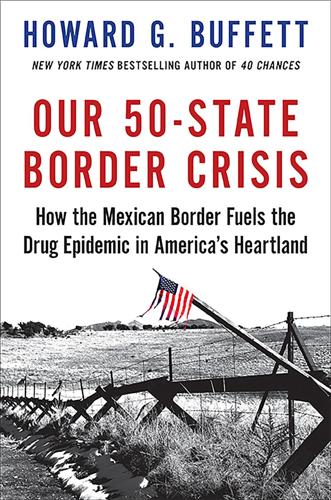
Our 50-State Border Crisis: How the Mexican Border Fuels the Drug Epidemic Across America
by
Howard G. Buffett
Published 2 Apr 2018
Retrieved January 13, 2018, from https://www.wvgazettemail.com/news/cops_and_courts/drug-firms-poured-m-painkillers-into-wv-amid-rise-of/article_99026dad-8ed5-5075-90fa-adb906a36214.html. 9 Whalen, J. (2017, May 31). Ohio Sues Five Drugmakers, Saying They Fueled Opioid Crisis. Wall Street Journal. Retrieved October 14, 2017, from https://www.wsj.com/articles/ohio-sues-five-drug-firms-saying-they-fueled-opioid-crisis-1496248317. 10 City of Everett. (2017, September 25). City of Everett’s Lawsuit against Purdue Pharma, Everett, WA, official website. Retrieved October 14, 2017, from https://everettwa.gov/1681/Purdue-Lawsuit. 11 Le, P. (2017, March 14).
…
A little girl in a supermarket trying to shake her mother awake after she collapses in an aisle. These leaders relayed how the extent of the drug addiction problem, particularly heroin and other opioids, was overwhelming their resources. I attended the conference and heard the concerns among senior law enforcement leaders about what lies ahead in the opioid epidemic. PERF produced a report from the meeting featuring the comments of many attendees. The sheriff of Hennepin County, Minnesota, Richard Stanek, said, “In my county, we had a 39 percent increase in 2016 opioid-related deaths, which generally matches the national trend of opioid deaths being about three times the homicide rate.”
…
From my experience in law enforcement, I feel the evidence is so clear that drug use both directly and indirectly is doing serious harm to our country. Framing these legalization campaigns as if we’re just voting to approve a new golf course or a theme park seems wrong and self-defeating. Pill mills and suspicious pharmacies If you think regulating drugs ensures fewer negative impacts, pay attention to the skyrocketing opioid epidemic. Many experts have documented that patients who started with legal, prescribed, regulated opioid painkillers and became addicted, then switched to heroin when their doctors cut them off or they could no longer afford the pills. Some addicts originally were workers injured on the job, victims of auto accidents, or even young athletes with sports injuries who started taking opioid-based pain medication like Vicodin or OxyContin for a legitimate pain condition and end up addicted.7 Regulators, among others, dropped the ball.
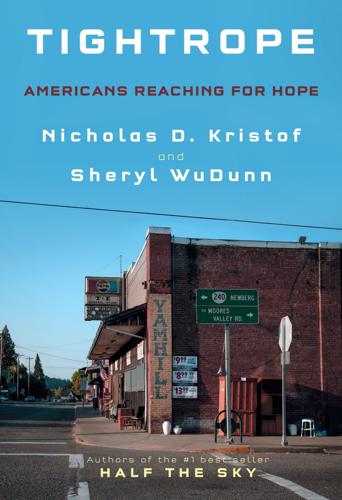
Tightrope: Americans Reaching for Hope
by
Nicholas D. Kristof
and
Sheryl Wudunn
Published 14 Jan 2020
McKesson Corporation, another giant pharmaceutical company: “Combating the Opioid Epidemic: Examining Concerns About Distribution and Diversion,” House of Representatives, Subcommittee on Oversight and Investigations, Committee on Energy and Commerce, May 8, 2018. See also Stephanie Armour and Thomas M. Burton, “Opioid Shipments to Small Towns Come Under Spotlight at Hearing,” The Wall Street Journal, May 8, 2018. The government eventually fined McKesson: Erika Fry, “Big McKesson Shareholder, Governance Experts Say the Opioid Crisis Should Have Cost the CEO Some Bonus Pay,” Fortune, July 10, 2017. “The biggest drug dealers wear white lab coats”: Jonathan Caulkins and Keith Humphreys, “Drug Dealers Among Us: Look for Those Wearing Lab Coats or Pinstripe Suits,” The Hill, February 6, 2018. 7.
…
The Globe described “an epidemic of untapped potential,” which seems about right whether one is talking about black neighborhoods in Boston or rural white communities in Oregon, not to mention Latino parts of Texas or Native American country across the West. Some Americans assume that the grim difficulties affect only those on the bottom rung of the ladder, but that’s incorrect. The economic and social fabric for much of America has been ripped apart, and this is expensive for everyone: the White House estimates that the opioid epidemic costs the United States half a trillion dollars a year—more than $4,000 per American household annually. One mechanism by which pain on the bottom is transmitted throughout the nation is the political system. Some 60 million Americans live in a rural America that is suffering, and the U.S. political architecture gives the frustrations of these rural Americans disproportionate political influence.
…
Some 80 percent of Americans addicted to opioids began with prescription painkillers, not with illegal street drugs. Essentially, pharmaceutical executives acted like Colombian drug lords, with legal approval. Many cities and states, including Baltimore, are now suing Purdue and other pharmaceutical companies to recover some of the costs of treating the opioid epidemic, but no one can ever give Daniel back what he lost. “The biggest drug dealers wear white lab coats or pinstripe suits, not hoodies or the gang garb of street-level dealers,” Jonathan Caulkins of Carnegie Mellon University and Keith Humphreys of Stanford University have noted. The failure to imprison any of the Purdue executives shouldn’t surprise us.
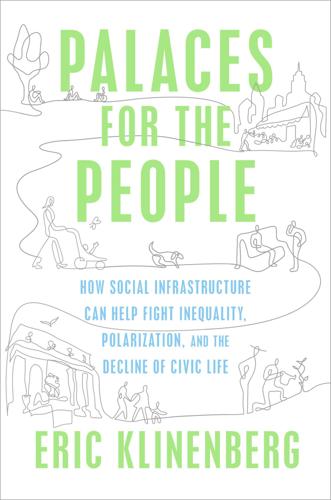
Palaces for the People: How Social Infrastructure Can Help Fight Inequality, Polarization, and the Decline of Civic Life
by
Eric Klinenberg
Published 10 Sep 2018
The results have been devastating. Hundreds of thousands of people have died and countless communities, particularly in small towns and rural areas, have been ravaged. The addiction crisis has taken a financial toll as well. One 2016 study estimated that the opioid epidemic had already cost the US economy almost $80 billion. The most serious consequence of the opioid crisis is an alarming rise in overdose deaths. In 2016, sixty-four thousand Americans were killed by overdoses—triple the number of 2000—with the vast majority of deaths linked to opioid abuse. To put this in perspective, it means more Americans died of overdoses in a single year than during the entirety of the Vietnam War.
…
The thick concentration of services has attracted opioid addicts from all over New England, including some who are looking for treatment and others who just want a safer place to shoot up. The city is struggling to keep up with the demand, but recently it opened what the journalist Susan Zalkind, in an article on the “infrastructure of the opioid epidemic,” calls a “no questions asked ‘engagement space’ ” that operates like a library, without requiring names or identification from its patrons. The clinic aims at getting addicts and drug abusers off the streets and into therapeutic programs, as does its neighbor, the Supportive Place for Observation and Treatment (SPOT), which monitors drug users to prevent overdoses and protect them, particularly women, from assault.
…
almost $80 billion: Curtis Florence, Chao Zhou, Feijun Luo, and Likang Xu, “The Economic Burden of Prescription Opioid Overdose, Abuse, and Dependence in the United States, 2013,” Medical Care 54, no. 10 (2016): 901–6. linked to opioid abuse: German Lopez, “How to Stop the Deadliest Drug Overdose Crisis in American History,” Vox, August 1, 2017, https://www.vox.com/science-and-health/2017/8/1/15746780/opioid-epidemic-end. the entirety of the Vietnam War: Josh Katz, “Drug Deaths in America Are Rising Faster Than Ever,” New York Times, June 5, 2017. the next decade alone: Max Blau, “STAT Forecast: Opioids Could Kill Nearly 500,000 Americans in the Next Decade,” STAT, June 27, 2017, https://www.statnews.com/2017/06/27/opioid-deaths-forecast.
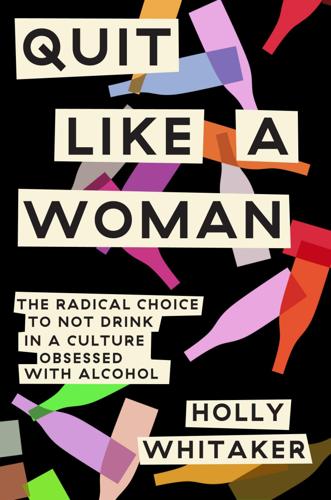
Quit Like a Woman: The Radical Choice to Not Drink in a Culture Obsessed With Alcohol
by
Holly Glenn Whitaker
Published 9 Jan 2020
Instead of looking at how insane it is that we consume the amounts of alcohol we do in this country (the beer industry alone makes up 2 percent of our GDP), we’ve systematically labeled anyone who can’t hang as having the problem and washed our national hands of any responsibility. Alcoholism is a you problem, a them problem, a thing that happens to people with shitty self-control and bad genes. Alcoholism is not a we problem. (In contrast, the opioid epidemic, which claims about half as many American lives as of this writing, is a we problem.) The label alcoholic and the disease alcoholism keep us focused on a construct and distract us from the real problem at hand, which is our cultural and individual relationship with alcohol and addiction. We should be able to ask ourselves these simple questions and answer honestly: Does alcohol negatively impact my life?
…
How Language Affects Public Health: Research Shows Word Choices Can Influence Well-being, Treatment,” Nation’s Health, April 2018, http://thenationshealth.aphapublications.org/content/48/2/1.1. 802 percent of our GDP: J. Kendall, “Study: U.S. Beer Industry Creates More Than 2 Million Jobs,” Brewbound, May 24, 2017, https://www.brewbound.com/news/study-u-s-beer-industry-creates-2-million-jobs. 80the opioid epidemic, which claims: L. Scholl et al., “Drug and Opioid-Involved Overdose Deaths—United States, 2013–2017,” Morbidity and Mortality Weekly Report 67 (2019): 1419–27, http://dx.doi.org/10.15585/mmwr.mm675152e1external icon. 81Ninety percent of: M. Esser et al.,“Prevalence of Alcohol Dependence Among US Adult Drinkers, 2009–2011,” Preventing Chronic Disease 11 (2014): 140329, http://dx.doi.org/10.5888/pcd11.140329. 85“I believe the person”: Koch quoted in Thomas Szasz, Ceremonial Chemistry: The Ritual Persecution of Drugs, Addicts, and Pushers (New York: Anchor Press, 1974), 231. 85Today around 20 percent: W.
…
Let’s Stop Sending Them There,” ACLU Blog, October 17, 2014, https://www.aclu.org/blog/smart-justice/mass-incarceration/jail-doesnt-help-addicts-lets-stop-sending-them-there; “Incarceration, Substance Abuse, and Addiction,” Center for Prisoner Health and Human Rights, n.d., https://www.prisonerhealth.org/educational-resources/factsheets-2/incarceration-substance-abuse-and-addiction/. 119medical doctors go to: Jan Hoffman, “Most Doctors Are Ill-Equipped to Deal with the Opioid Epidemic. Few Medical Schools Teach Addiction,” New York Times, September 10, 2018. CHAPTER 7: QUITTING LIKE A WOMAN 121“We know what”: Glennon Doyle-Melton, Love Warrior (New York: Flatiron Books, 2016), 10. 122So I left: Tempest, www.jointempest.com. 129John, a therapist: John Dupuy, Integral Recovery: A Revolutionary Approach to the Treatment of Alcoholism and Addiction (Albany: State University of New York Press, 2013). 129Ken Wilber’s Integral Theory: Ken Wilber, The Integral Vision: A Very Short Introduction to the Revolutionary Integral Approach to Life, God, the Universe, and Everything (Boston: Shambala, 2007). 136People are kicked: W.
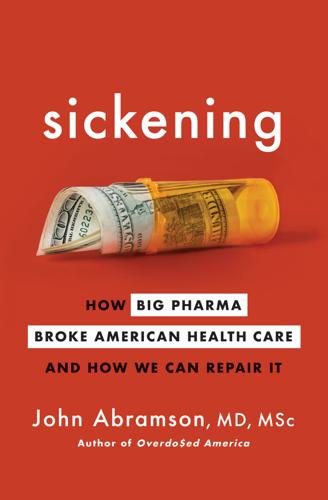
Sickening: How Big Pharma Broke American Health Care and How We Can Repair It
by
John Abramson
Published 15 Dec 2022
more than 36,000 in 2019: “Opioids: Fentanyl,” Centers for Disease Control and Prevention, https://www.cdc.gov/opioids/basics/fentanyl.html. between 1999 and 2018: “Understanding the Epidemic,” CDC, cdc.gov/drugoverdose, https://www.cdc.gov/drugoverdose/epidemic/index.html. “massive amounts of money”: Chris McGreal, “Big Pharma’s Response to the Opioid Epidemic: Pay but Deny,” New York Review, November 11, 2019, https://www.nybooks.com/daily/2019/11/11/big-pharmas-response-to-the-opioid-epidemic-pay-but-deny/. tenfold increase in prescriptions: McGreal, “Big Pharma’s Response.” “I think that the vast amounts”: McGreal, “Big Pharma’s Response.” 8. MARKET FAILURE IN GENERAL KNOWLEDGE “Information issues”: John Cassidy, How Markets Fail: The Logic of Economic Calamities (New York: Farrar, Straus and Giroux), 163 (Kindle edition).
…
Underlying Stacey’s death was the sad truth that the very sources doctors now rely on to inform their clinical decisions have become profit-driven rather than science-driven, the facts manipulated to maximally benefit the pharmaceutical companies and their investors rather than the people taking their drugs. Until the recent drug-company-fueled opioid crisis, Vioxx was the biggest drug debacle in U.S. history. The financial costs to Merck were significant. In 2007 the company agreed to pay $4.85 billion to settle civil litigation involving almost twenty-seven thousand plaintiffs who alleged Vioxx caused their heart attacks and strokes. And in 2011, the U.S.
…
The economic and social conditions that fostered the increasing “deaths of despair” described in chapter 5 combined with Purdue’s success at enlisting physicians to normalize the widespread use of prescription opioids and the introduction of inexpensive fentanyl into street drugs to create a full-blown disaster. According to the CDC, prescription and illegal opioids claimed more than 450,000 American lives between 1999 and 2018. The President’s Commission on Combating Drug Addiction and the Opioid Crisis was formed in 2017. Professor Bertha Madras of Harvard Medical School, the commission report’s principal author, said the drug companies invested “massive amounts of money” to influence doctors’ prescribing of narcotics: “Using that money they literally bought off, and I don’t use that phrase lightly, they bought off the Joint Commission (which accredits hospitals and sets medical policies), they bought off the Federation of State Medical Boards, they bought off several American pain associations.”
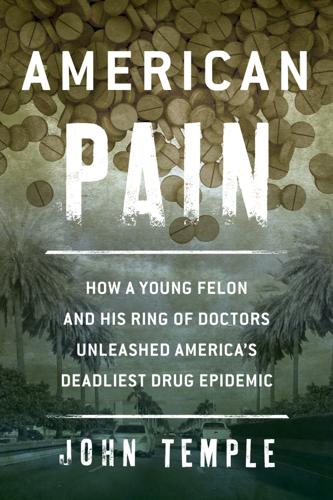
American Pain: How a Young Felon and His Ring of Doctors Unleashed America’s Deadliest Drug Epidemic
by
John Temple
Published 28 Sep 2015
He grew looser. Funnier. He stopped channeling the style of other talk radio hosts, stopped shouting. His stomach no longer hurt before shows. He stopped writing out scripts to read aloud. Instead, he went into the studio with a loose outline and a guest lined up. He knew what he believed about the opioid epidemic, and he knew what he wanted to say. Behind the mic, the words just came. And there was plenty to talk about. The fact that drug deaths had overtaken traffic fatalities as the leading cause of death in the United States, a trend driven by prescription narcotics overdoses. The new Florida law, signed in June 2010, that barred drug felons from operating pain clinics, required pain clinic doctors to undergo special training and allowed them to dispense only three days’ worth of medication to patients who paid by cash, check, or credit card, instead of insurance.
…
I researched and visited most of the sites described in the book. I also read numerous books and hundreds of newspaper and magazine articles, as well as dozens upon dozens of scholarly articles and government reports. I attended the 2013 National RX Drug Abuse Summit in Orlando, Florida, where I met many people on the front lines of the prescription opioid epidemic and heard numerous experts speak. I spent two weeks in West Palm Beach observing the federal trial of Dr. Cynthia Cadet. I also reviewed hundreds of court transcripts, pleadings, and investigative documents. While I did not use a great deal of specific data from the following books and articles, they were key sources nonetheless: •Barry Meier’s books—Pain Killer: A “Wonder” Drug’s Trail of Addiction and Death from 2003 and A World of Hurt: Fixing Pain Medicine’s Biggest Mistake from 2013—and his years of coverage in the New York Times provided a foundational understanding of the resurgence of opioid narcotics.
…
•The article “How Florida Brothers’ ‘Pill Mill’ Operation Fueled Painkiller Abuse Epidemic,” by Thomas Francis, published on msnbc.com on May 7, 2012, introduced me to the story of American Pain. •The article “American Pain: The Largest U.S. Pill Mill’s Rise and Fall,” by Felix Gillette, published in Businessweek in June 2012, helped me understand the pharmaceutical opioid manufacturing and sales process. I read numerous academic journal articles about the opioid epidemic. The following were particularly useful to me: •“The Prescription Drug Epidemic in the United States: A Perfect Storm,” by J. C. Maxwell, Drug and Alcohol Review, 2011. •“Black Beauties, Gorilla Pills, Footballs, and Hillbilly Heroin: Some Reflections on Prescription Drug Abuse and Diversion Research Over the Past 40 Years,” by James A.
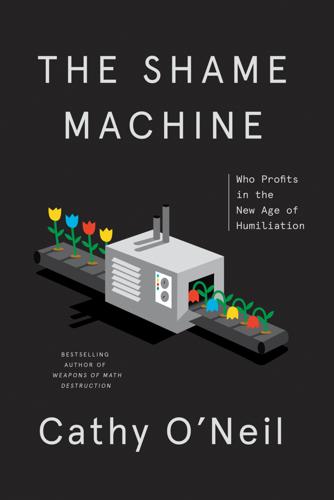
The Shame Machine: Who Profits in the New Age of Humiliation
by
Cathy O'Neil
Published 15 Mar 2022
But they navigate a delicate balance. If the host dies, that source of livelihood vanishes. This brings me, sadly, to the story of Jeff Pleus. The experience of Jeff, a white college graduate in Binghamton, New York, shows the differences—from cultural diversity to geographic span—between the opioid epidemic and the crack epidemic. But it also shows how much hasn’t changed. Like victims of the crack crisis, including Blossom, Jeff suffered under layer upon layer of shame. This silenced and punished him, while creating new corporate revenue streams. In high school, Jeff got solid grades. Like many of his classmates, he dabbled in drugs, smoked a bit of pot.
…
As his dependency grew, so did his shame. Naturally, he followed shame’s central mandate and cloaked his addiction. He had reason to. People with a substance use disorder, after all, were widely deemed losers. And Purdue, the manufacturer of the addictive drug, made sure to reinforce this stigma. Across the country, the opioid epidemic was spreading. It would kill some four hundred thousand in the United States over the following two decades, and the public, from health officials to plaintiff’s attorneys, was starting to raise questions about OxyContin’s role in the crisis. The company’s strategy was to blame the victims. In a 2001 internal email, Richard Sackler, the chairman and former president of the firm, wrote: “We have to hammer on the abusers in every way possible.
…
One man suggested “having round the clock militias shooting these assholes.” One woman posting on the group, a sixty-year-old, seemed to fit the bleeding-heart liberal stereotype of the Upper West Side. (To avoid shaming her by name, I’ll call her Roberta.) She served on the board of Community in Crisis, a New Jersey–based nonprofit that fights the opioid epidemic and is dedicated to reducing the taboo around addiction. As she wrote in a Facebook fundraising post, her organization works to remove that stigma, to treat people with addictions simply as worthy human beings who are struggling with a serious medical issue, and to help them. Yet on the Upper West Side Facebook page, where neighbors were discussing how to keep the homeless at bay, she wrote: “Forget pepper spray or mace.
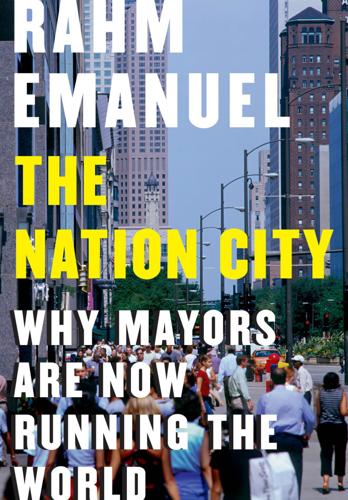
The Nation City: Why Mayors Are Now Running the World
by
Rahm Emanuel
Published 25 Feb 2020
When former New York City mayor Michael Bloomberg created a technology hub with partnerships among universities, businesses, and the local government, scores of other cities—including Chicago—decided to do the same thing. Our idea to sue big pharmaceutical companies for deceptive marketing when no one else was really addressing the opioid epidemic caught on quickly. More than seven hundred other cities are now involved in lawsuits. The Riverwalk project we built on the Chicago River was informed by what we saw happening concurrently on the waterfronts of Paris and Berlin and Dallas and Buenos Aires. This idea of repurposing old industrial waterfronts in cities has since spread across the world.
…
* * * A few decades ago, our federal government would have been the primary actor in nearly everything I talk about above. They would have spearheaded the mass transit funding, the help needed for disadvantaged city neighborhoods, the protection of the environment, the task of confronting gun violence, mentoring youth, and the opioid epidemic. That’s no longer the case. These problems, in some combination or another, exist in all of our cities. The solutions—and the hope—reside there, too. I told you earlier about the three sets of lists I kept while I was mayor—one with the daily tasks, one with the weekly ones, and one with my biggest goals.
…
“To have business support for this in the state of Ohio was unheard of,” says Whaley. “But our community knew if we are serious about the future, we have to pay serious attention to our future workforce.” The remaking of Dayton is well under way. Whaley has also been a very effective leader when it comes to our nation’s opioid crisis. The federal government has (finally) taken some steps to address the issue, but it is still dragging its feet to a large degree. Whaley studied the issue when she was first elected, in 2014. What she discovered was that the opioid problem had become a full-fledged emergency in her region of Ohio.
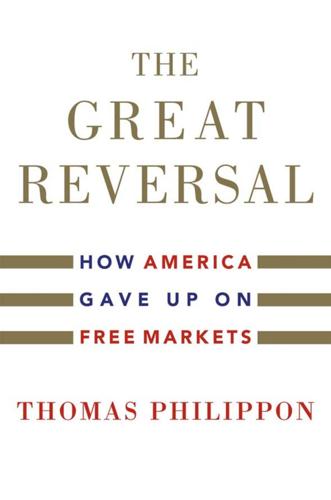
The Great Reversal: How America Gave Up on Free Markets
by
Thomas Philippon
Published 29 Oct 2019
It may come as no surprise that she ruled in the insurance firm’s favor—a decision that held up for two years before the courts intervened, overturning the ruling because of the “appearance of impropriety.” By that time, though, Bowman had left her position to take a job at—you guessed it—United Healthcare. The Opioid Epidemic Regulatory capture can have more sinister consequences. Some of the worst have manifested during the opioid epidemic, which has been spreading rapidly through the US since the early 2000s. The opioid epidemic is the worst overdose epidemic in US history. Overdose deaths from prescription opioid pain relievers nearly quadrupled between 1999 and 2010, exceeding the death rate during the crack epidemic of the 1980s.
…
Mortality due to opioids is ten per hundred thousand and has reached forty per hundred thousand in West Virginia. The opioid epidemic has a demand side and a supply side. The demand side has been attributed to social and economic conditions in the US and thus cannot be blamed on deficiencies in the health-care system. But the supply side has been strengthened by failures within the health-care system. The evidence suggests that incentives and regulatory capture were aligned to foster overprescription. Both supply and demand matter. The “deaths of despair,” to quote Case and Deaton, existed long before OxyContin, but overprescription certainly made them worse. Even in the midst of the opioid crisis, drug makers were busy lobbying against prescription limits.
…
“The drug industry, the manufacturers, wholesalers, distributors and chain drugstores, have an influence over Congress that has never been seen before,” Joseph T. Rannazzisi, head of the DEA’s drug regulation division until 2015, noted in the Wall Street Journal. “I mean, to get Congress to pass a bill to protect their interests in the height of an opioid epidemic just shows me how much influence they have” (Higham and Bernstein, 2017). And once the spread of opioids was underway, it was difficult to reverse. US authorities tried to limit access, but abuse had become so pervasive that restrictions led to widespread substitution of other drugs, such as heroin.
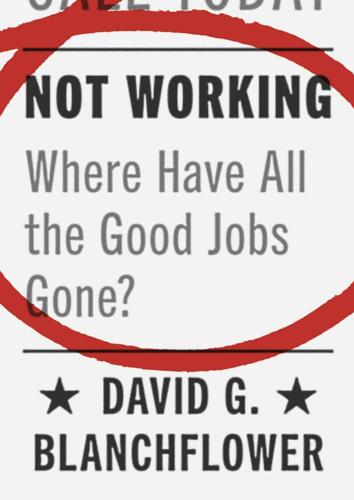
Not Working: Where Have All the Good Jobs Gone?
by
David G. Blanchflower
Published 12 Apr 2021
Physicians are the gatekeepers of medication for a reason: They are supposed to protect their patients from the harm that could come from unregulated use of those medications. Physicians, public health officials, and even the Centers for Disease Control and Prevention tell us that we are in the midst of an “opioid epidemic,” due to the incredible addictive power of these drugs. Yet when people become addicted to painkillers after suffering a trauma, the best advice they might get from physicians when coping with withdrawal is to go back on it to feel better. Can we really do no better than that? (Rieder 2017) In private communication with me, Travis Rieder noted that the United States has 5 percent of the global population and 80 percent of its opioid use.
…
Singleton. 2017. “Real Wages and Hours in the Great Recession: Evidence from Firms and Their Entry-Level Jobs.” CESIFO Working Paper No. 6766. Schmitt, J., and K. Warner. 2010. “Ex-Offenders and the Labor Market.” Journal of Labor and Society 14: 87–109. Schnell, M., and J. Currie. 2017. “Addressing the Opioid Epidemic: Is There a Role for Physician Education?” NBER Working Paper #23645. Schwandt, H. 2016. “Unmet Aspirations as an Explanation for the Age U-Shape in Wellbeing.” Journal of Economic Behavior and Organization 122 (February): 75–87. Schwarz, M. 2016. “The IMF and the Crises in Greece, Spain and Portugal.”
…
Pain, Immigration, and Politics Recessions, slow recoveries, and policy mistakes have consequences. Pain is up, depression and stress are up, binge drinking is up, obesity is up, and drug addiction is up. Hopelessness is up; anxiety is up. Deaths of despair—from alcohol and drug poisoning and suicide—are up. America now has a massive opioid crisis, with 72,000 dying of opioid drug overdoses in 2017, up nearly 7 percent from 2016.9 The death toll is higher than the peak yearly death totals from HIV, car crashes, or firearms.10 Low earnings and the loss of high-paying jobs have led to feelings of instability, insecurity, and helplessness, especially for the less educated.

Rule of the Robots: How Artificial Intelligence Will Transform Everything
by
Martin Ford
Published 13 Sep 2021
Sam Fleming and Brooke Fox, “US states that voted for Trump most vulnerable to job automation,” Financial Times, January 23, 2019, www.ft.com/content/cbf2a01e-1f41-11e9-b126-46fc3ad87c65. 3. Carol Graham, “Understanding the role of despair in America’s opioid crisis,” Brookings Institution, October 15, 2019, www.brookings.edu/policy2020/votervital/how-can-policy-address-the-opioid-crisis-and-despair-in-america/. 4. See, for example: Carl Benedikt Frey and Michael A. Osborne, “The future of employment: How susceptible are jobs to computerisation?,” Oxford Martin School Programme on Technology and Employment, Working Paper, September 17, 2013, www.oxfordmartin.ox.ac.uk/downloads/academic/future-of-employment.pdf, p. 38. 5.
…
Studies, for example, have shown a direct correlation between regions in the United States most vulnerable to job automation and voters who strongly supported Donald Trump in the 2016 presidential election.2 Before the coronavirus pandemic upended our lives, there was more focus on another health crisis that has been devastating the United States, and areas that experienced substantial middle class job loss also tended to be on the front lines of the opioid epidemic.3 If the changes we’ve seen so far pale in comparison with what might come, there is a real risk of future social and economic disruption on an unprecedented scale—as well as the rise of even more dangerous political demagogues who will thrive on the fear that is certain to accompany such a rapidly shifting landscape.
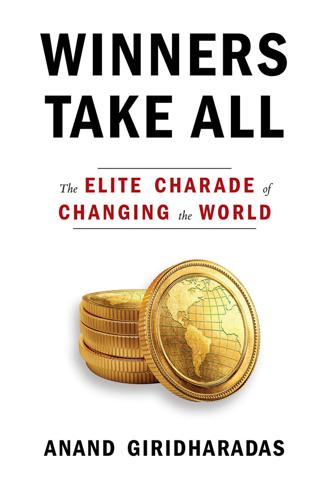
Winners Take All: The Elite Charade of Changing the World
by
Anand Giridharadas
Published 27 Aug 2018
But, the Times wrote, “both experienced drug abusers and novices, including teenagers, soon discovered that chewing an OxyContin tablet or crushing one and then snorting the powder or injecting it with a needle produced a high as powerful as heroin.” And so OxyContin began to be implicated in a growing number of overdoses and deaths, concentrated in rural areas down on their luck. These deaths around the turn of the millennium turned out to be early signs of what years later would come to be called a national “opioid epidemic.” As the New Yorker reports, “though many fatal overdoses have resulted from opioids other than OxyContin, the crisis was initially precipitated by a shift in the culture of prescribing—a shift carefully engineered by Purdue.” Eventually, the Centers for Disease Control and Prevention would report that overdose deaths from prescription opioids quadrupled between 1999 and 2014, claiming fourteen thousand lives in that last year.
…
Jonathan Levy’s quotes are from his chapter in the Philanthropy in Democratic Societies book mentioned in the text. Walker’s letter, “Toward a New Gospel of Wealth,” can be found at the Ford Foundation website: www.fordfoundation.org/ideas/equals-change-blog/posts/toward-a-new-gospel-of-wealth (accessed September 2017). The section on the Sacklers, Purdue Pharma, and the opioid epidemic is, unlike most of the book, a work of historical synthesis built entirely on the primary reporting of others. The publications are quoted in the text, but let me record my gratitude for the reporting of, among others, Bruce Weber and Barry Meier at the New York Times, Katherine Eban at Fortune, and David Armstrong for his sustained and heroic work at STAT.
…
Still, according to motions filed by the state’s lawyers: Contrary to the picture of helpfulness and cooperation Purdue attempts to paint, Purdue’s employees were actively and secretly trying to prevent West Virginia from imposing any control on the sale of OxyContin. McDowell County, West Virginia, turned out to be “a proverbial canary in a coal mine when it came to the emerging national opioid crisis,” STAT noted. Back in 2001, when officials at the insurer first spoke up, the state as a whole was still at 6 deaths per 100,000 residents from opioid overdoses. McDowell was already at 38 per 100,000, however, and its fate foreshadowed West Virginia’s, which would see its death rate more than triple in the ensuing decade, giving it the country’s highest rate of deaths from overdoses and of painkiller prescriptions in general.
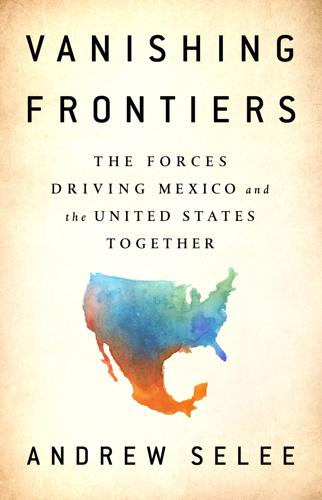
Vanishing Frontiers: The Forces Driving Mexico and the United States Together
by
Andrew Selee
Published 4 Jun 2018
This worked well in some of the largest cities, where the reforms stuck, but far less so in many other parts of the country where police, prosecutors, and courts remained underdeveloped and easily susceptible to corruption or coercion by well-financed and heavily armed crime groups, even smaller ones. Starting in 2015 homicide rates began to rise again in Mexico, just as Americans started to become aware of the opioid epidemic in the United States. This was no coincidence. Although the opioid crisis began with the misuse of painkillers, it soon led to an increasing demand for heroin and synthetic opioids. Deaths from heroin overdoses in the United States quadrupled between 2010 and 2016, according to the Centers for Disease Control and Prevention. Heroin and other opiates had once comprised a fairly small part of the drug trade between Mexico and the United States—so much so that smaller groups with only loose affiliations with the larger transnational crime organizations generally controlled the business.
…
See film industry nail industry, 5, 73, 74, 75, 89, 117–118 Naranjo, Gerardo, 242 Narcos (TV show), 234 NASCAR, 227, 248–249, 250 National Association of Latino Elected Officials, 266 National Basketball Association (NBA), 250, 272 National Council of Science and Technology (Conacyt), 108 National Development Bank (Nafinsa), 108 National Entrepreneurship Institute (INADEM), 108–109 National Football League (NFL), 246–248, 252, 272 national identity, building, 210, 211, 235 National Park Service, 280–281 National Security Council, 146 natural gas industry and energy reform, 116–117, 121 exports, 6, 117, 271 oil and, 113–114, 114–115, 119, 271 pipelines for, 117, 119–120, 122 prices in, 114, 118, 119, 120, 124 ties in, 6 trade in, 120 naturalized status, issue of, 210–211 Navarro, Adela, 135–136, 139, 140 Navarro, Guillermo, 232 nearshoring, benefit of, in IT sector, 94, 95 Negrete, Layda, 161–162, 243 Nelson, Jonathan, 105–106 Nemak, 57 Netflix, 234, 241 Network for Oral Trials, 161, 163 Nevada Hispanic Legislative Caucus, 265 9/11, 144, 145 Nissan, 56 Nochistlán, Mexico, 188–189, 201, 202 Nortec, 90 North American Aerospace Defense Command (NORAD), 170 North American Development Bank, 52 North American Free Trade Agreement (NAFTA) controversy over, 52 elements of, 52 expanded relationship under, 59 impact of, 50, 55, 72, 76, 77, 78 López Obrador’s position on, 279 modernizing textbooks and, 212 negotiations leading to, 51–52 renegotiating, 53–54, 60, 270, 271, 272 root of opposition to, 21 Trump’s position on, 3, 21, 53, 269 withdrawal from, complexities and effects of, 53, 60–61, 282 North Korea, 269 Nuño, José Luis, 102 Obama, Barack, 21, 149–150, 166, 195–196, 199, 200 Odell, Ben, 223, 224, 226, 227–228, 249 Office of Management and Budget, 148 offshoring, impact of, 60 O’Grady, Frank, 203–204, 205 O’Grady, Katie, 203–205, 207 oil industry decline in, 115, 129 and energy reform, 114, 115–116, 121 exploration in, 115, 116, 129, 130–131 nationalization of, 115, 130 natural gas and, 113–114, 114–115, 119, 271 organized crime and, 129, 171 prices in, 117, 130 production in, 113, 114, 128–129 supply in, 115, 118, 124, 128, 129 ties in, 6 trade in, 120, 131 Oldenski, Lindsay, 90 Olvera, Enrique, 256, 257, 258, 259, 263–264 Olympics, 47–48 omnibus bill, 148 online services, 101, 102–103 Ooyala, 97, 99 open economy, 18, 63, 66, 77, 78, 196–197 opiates, 178, 179 opinion polls, 3, 21–22, 44, 186, 274, 275–276 opioid crisis, 178 Oracle, 99 organized crime breaking up of, 176–177, 179 citizens responding to, 165–166, 167–169 and corruption, 136, 139, 144, 145, 155–156, 178, 180 documentary film involving, 241 exposing, to the public, 163 growth of, 136–137, 142 homicides attributed to, 19, 31, 136, 138, 139, 142, 150, 165, 166, 168, 172, 177, 180 intelligence on, information lacking in, 175–176 journalists investigating, security issues facing, 135, 136 law enforcement coordination in tackling, 19, 23, 153–154, 155, 156–158 mapping, 170, 172 oil industry and, 129, 171 security cooperation on, 143–147, 149, 150–151, 157–158 strategic operations against, 170, 171, 172–174 Ortiz Mena, Tania, 124 Oxxo, 86, 102–103 Pablos, David, 242 Pantelion, 226, 227 Paris Accords on Climate Change, 123, 125 Pascual, Carlos, 166–167, 168–169, 215 passports, 221, 281 Pastor, Robert, 211–212 Pati’s Mexican Table (TV show), 260 Pemex, 115, 128, 129 PEN International, 213, 214 Peña Nieto, Enrique, 115–116, 174, 177 Pence, Mike, 200 PepsiCo, 95 Pérez, Ashley, 217–219, 221–222 Pérez, Hanna, 217–219, 221–222 Perry, Rick, 131 Pew Center, 194, 207 philanthropy, 14, 21, 80 Pilcher, Jeffrey, 259, 261 Pinzón, Alejandra, 192–194, 194–195, 196, 198, 207 Pioneer Natural Resources, 114–115 pipelines, 119–120, 122, 129, 171 Pittsburgh, Pennsylvania, 7, 76, 89 Pittsburgh Glass Works, 76 Plan Colombia, 145 Plantronics, 37–38 Plascencia, Javier, 31, 32, 33, 34, 39–40, 41, 43 Plastics Institute, 96 poetic bridge, 217 polarization, 22, 275–276 political prospects, 276–280 politics, involvement in, 264–268 pop culture, biculturalism and, 218–219 Poplar Bluff, Missouri, 7, 73–75, 77, 89, 90, 118 population shifts/figures, 8, 9, 12–13, 24, 185, 187, 190, 191, 196, 206, 207, 210, 266, 267 portfolio investments, 76 ports, 5 poverty as a driver of immigration, 2, 15, 189, 198 factors leading back to, 64 López Obrador’s position on, 277 persistent, 65, 274 reduction in, 191 Prayers for the Stolen (Clement), 214 Premier Oil, 130 Presumed Guilty (documentary film), 162, 243 Prieto, Rodrigo, 232 procurement rules, 148, 149 production key players in, industries with, 5 offshoring of, 60 rise in, 5, 57–58, 75 shared, 5–6, 18, 23, 29, 51, 52–53, 54–59, 61–62, 72, 74, 75, 89, 90, 270, 282 productivity disparity in, among business size, 65–66 efficiencies impacting, 59 programming, 98, 99 Prosecutor’s Office for Corruption, 164 Puebla, Mexico, 58, 95 Puerto Rico, emigration from, 4, 9 Puig, Claudia, 226, 231 Pujol restaurant, 256–257, 258, 263 Purdue, Sonny, 53 racial tensions, 10, 11 racism, 210 radio, 206, 247 Ramírez, Alejandro, 225, 240–241 Rassini, 55–56, 71 Reagan, Ronald, 51, 265 recession, 79, 187, 195 refugees, 184, 209 regulations, 84 Reid, Harry, 265 religious-based immigration, 208 relocation business, 205 remittances, 16, 188–190, 191–192, 202 renewable resources, 6, 117, 122, 123 See also solar power; wind power repatriating Mexicans.
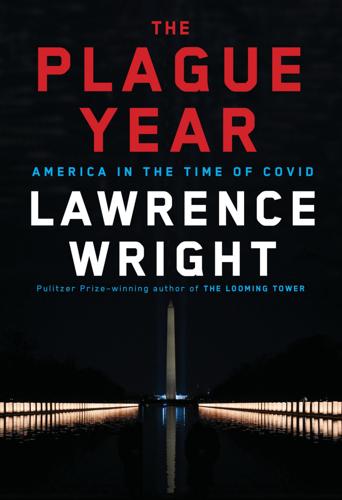
The Plague Year: America in the Time of Covid
by
Lawrence Wright
Published 7 Jun 2021
The question is why it was close, when the New York Times had forecast Clinton was on the verge of having an “unbreakable lead.” One could argue that a major factor in Clinton’s loss was a public health crisis that particularly affected working-class white men, who voted two to one for Trump. That is, the opioid epidemic. Drug overdoses had become the leading cause of death for Americans under fifty; about two-thirds of those deaths were caused by opioids. The epidemic actually lowered the life expectancy of less-educated white men, and yet it remains largely unaddressed. Over 300,000 Americans died from opioid-related deaths from 1999 to 2015, a rate that reached about 115 opioid deaths a day in 2016.
…
seventeen-year-old Trump supporter: John Fritz, Kevin Johnson, and David Jackson, “Trump defends Kyle Rittenhouse on eve of visit to Kenosha,” USA Today, Aug. 31, 2020. widest margin: Alec Tyson and Shiva Maniam, “Behind Trump’s victory: Divisions by race, gender, education,” Pew Research Center, Nov. 9, 2016. “unbreakable lead”: Nate Silver, “The Comey Letter Probably Cost Clinton The Election,” FiveThirtyEight, May 3, 2016. opioid epidemic: Dean Reynolds, “Overdoses now leading cause of death of Americans under 50,” CBS News, June 6, 2017; Adam Dean and Simeon Kimmel, “Free trade and opioid overdose death in the United States,” SSM Population Health, Aug. 8, 2019. likely to vote for Trump: James S. Goodwin, et al. “Association of Chronic Opioid Use with Presidential Voting Patterns in US Counties in 2016,” JAMA Network, June 1, 2018; Wasfy, Jason H., Charles Stewart III, and Vijeta Bhambhani.
…
Now, four years later, as the Trump supporters emerged from the subway—most of them older, working-class people who believed the president’s lies about the stolen election—Pottinger felt that the country had come full circle, and neither party had remedied the social blight of the working class, the loss of jobs to China, the opioid crisis that followed, and the endless, futile foreign wars. The country was even more divided now than it had been then. He got off at Farragut West Station and walked down 17th Street to the White House. There were larger crowds now. He made eye contact with a couple of middle-aged women wearing red, white, and blue.
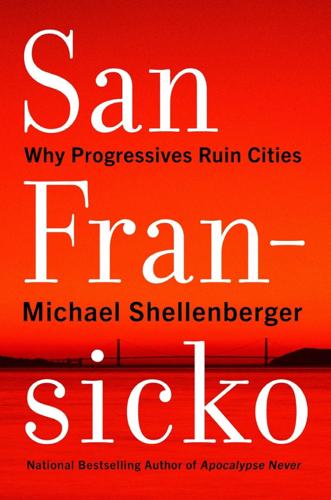
San Fransicko: Why Progressives Ruin Cities
by
Michael Shellenberger
Published 11 Oct 2021
Ohio reported heroin deaths had increased approximately 400 percent from 2010 to 2016, before falling to 146 percent of the 2010 heroin death rate in 2019.119 While many rightly blamed greed on the part of pharmaceutical companies, and laziness and corruption on the part of government regulators, the overprescription of opioids was equally due to naïve or unskeptical compassion on the part of doctors and the wider society. Harm reduction advocates didn’t create the opioid epidemic, but they were part of the same movement starting in the 1990s urging the softening of restrictions on drugs, including hard ones. In addition to his funding agreement with Soros, Ethan Nadelmann raised money from other wealthy Americans including Laurance Rockefeller; John Sperling, the creator of the for-profit University of Phoenix; and Peter Lewis, the founder of Progressive Insurance.
…
But they’ve never actually worked outside of a pretty sheltered context.”49 Now, with the rise of remote work and delivery apps, many of us do not even need to go into the office and can live like only the superrich a generation ago could live, with workers delivering groceries, meals, and consumer products to our doorstep. The culture of coddling contributed to the opioid epidemic, some believe. Patients suffering pain felt more confidence demanding opioids while refusing to accept responsibility. Noted one author, “patients were getting used to demanding drugs for treatment. They did not, however, have to accept the idea that they might, say, eat better and exercise more, and that this might help them lose weight and feel better.
…
Thomas Wolf, interview by the author, November 19, 2020. 47. Teresa Gowan, Hobos, Hustlers, and Backsliders: Homeless in San Francisco (Minneapolis: University of Minnesota Press, 2010), 72. 48. Ibid., 93. 49. Ibid., xvi. 50. Ibid., 25. 51. Ibid., 18. 52. “Homeless man talks openly about being addicted to heroin. We have an opioid crisis in America,” interview by Mark Horvath, Invisible People, June 19, 2011, YouTube video, 6:14, www.youtube.com. 53. Timothy Busby, “Opinion: With a New Nuts-to-Bolts Drop-in Center, Dorothy Day House Is Truly Helping the Homeless,” Berkeleyside, November 4, 2019, www.berkeleyside.com. 54.
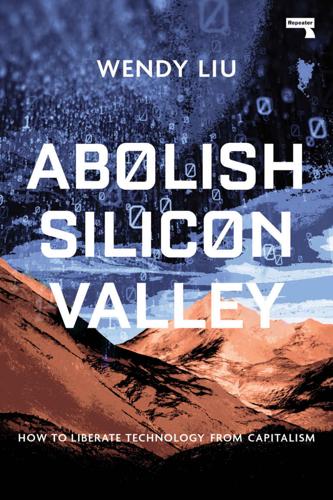
Abolish Silicon Valley: How to Liberate Technology From Capitalism
by
Wendy Liu
Published 22 Mar 2020
For a first-person account of Yale University’s attempts to prevent graduate students from unionising, see “Spadework” by Alyssa Battistoni in the Spring 2019 issue of n+1, published at https://nplusonemag.com/issue-34/politics/spadework/. 9 See, for example, “Purdue Pharma, maker of OxyContin, files for bankruptcy” by German Lopez for Vox, published September 16, 2019 at https://www.vox.com/policy-and-politics/2019/9/16/20868487/purdue-pharma-oxycontin-bankruptcy-opioid-epidemic. 10 See, for example, Emily Guendelsberger’s book On the Clock: What Low-Wage Work Did to Me and How It Drives America Insane (Little, Brown and Co., 2019). 11 For commentary on corporation expansion in the era of digital Capitalism, see “Landlord 2.0: Tech’s New Rentier Capitalism” by Jathan Sadowski for OneZero, published April 4, 2019, at https://onezero.medium.com/landlord-2-0-techs-new-rentier-capitalism-a0bfe491b463. 12 There’s a concept called “elite projection” that neatly summarises this phenomenon.
…
But the measurements we use for the health of the economy — GDP growth, unemployment rates, stock market capitalisations — are not themselves infused with ethical values, and it’s becoming increasingly clear that they are a poor proxy for tracking societal wellbeing. Purdue Pharma earning billions from selling the drugs that fuelled the US opioid crisis?9 That’s entirely reasonable by market logic. Clothing manufacturers and food producers destroying excess goods in order to preserve the scarcity needed to maintain high prices? They have to protect the value of their brand, after all. Low-wage employers subjecting their workers to unnecessary stress and injury in order to shore up corporate profits?

Fire and Fury: Inside the Trump White House
by
Michael Wolff
Published 5 Jan 2018
Its stated mission was to reduce federal bureaucracy—that is, to reduce it by creating more of it, a committee to end committees. In addition, Kushner’s new outfit would study the government’s internal technology, focus on job creation, encourage and suggest policies about apprenticeships, enlist business in a partnership with government, and help with the opioid epidemic. It was, in other words, business as usual, albeit with a new burst of enthusiasm for the administrative state. But its real import was that it gave Kushner his own internal White House staff, a team of people working not just on Kushner-supported projects—all largely antithetical to Bannon projects—but, more broadly, as Kushner explained to one staffer, “on expanding my footprint.”
…
* * * At lunch on August 8, in the Clubhouse at Bedminster—amid Trumpish chandeliers, golf trophies, and tournament plaques—the president was flanked by Tom Price, the secretary of health and human services, and his wife, Melania. Kellyanne Conway was at the lunch; so were Kushner and several others. This was one of the “make-work” events—over lunch, there was a discussion of the opioid crisis, which was then followed by a statement from the president and a brief round of questions from reporters. While reading the statement in a monotone, Trump kept his head down, propping it on his elbows. After taking some humdrum questions about opioids, he was suddenly asked about North Korea, and, quite as though in stop-action animation, he seemed to come alive.
…
Universe contest, 38–39 Mueller, Robert, 220–21, 223, 229–30, 232–33, 238–41, 243, 256, 258, 261–62, 277–80, 306, 308 Mulvaney, Mick, 116, 171, 185, 285 Murdoch, Chloe, 156 Murdoch, Grace, 156 Murdoch, Rupert, 2, 8, 19–20, 32, 36, 60–61, 73–74, 80–81, 93, 121, 147, 156–57, 178–79, 195–98, 223, 289, 298 Murdoch, Wendi, 19, 80, 156 Murphy, Mike, 56 Musk, Elon, 35, 78, 88, 238 National Economic Council, 89, 143–44 National Environment Policy Act (1970), 182 National Football League, 303–4 nationalists, 133–34, 138, 174, 276, 293, 301–2 National Policy Institute, 127 National Republican Senatorial Committee, 112 National Security Advisor Brzezinski as, 66 Flynn as, 4, 17, 95, 101–7, 191 McMaster as, 176, 188–89 Rice as, 6, 41 National Security Agency (NSA), 102, 223 National Security Council (NSC), 42, 103, 105, 176, 185–86, 190–91, 193, 265, 267 Navarro, Peter, 133 Nazi Germany, 7 NBC, 66, 92 neoconservatives, 4, 128, 227 neo-Nazis, 137, 292–95 Netanyahu, Benjamin, 6, 142, 231 New Republic, 98, 297 Newsom, Gavin, 272 New Yorker, 37, 56, 151, 154, 215, 284–85 New York magazine, 74 New York Observer, 72–76, 141 New York Post, 15, 74, 113, 207 New York Times, 37, 51, 90–92, 96, 151–53, 196, 205, 207, 211, 236, 237, 257, 259–60, 266, 271, 277 Nixon, Richard M., 2, 8, 26–27, 41, 54, 90, 93, 212–13, 222 Nooyi, Indra, 88–89 North American Free Trade Agreement (NAFTA), 77 North Atlantic Treaty Organization (NATO), 99 North Korea, 291–93, 297 Nunberg, Sam, 11, 13, 16, 22, 144, 237–38, 248, 282, 291, 300 Nunes, Devin, 170 Obama, Barack, 27, 35–36, 41–45, 54, 61–63, 67, 90, 101, 104, 128, 164, 187, 215, 250, 269, 295 birth certificate and, 62, 295 DOJ and, 94–96, 210, 279 executive orders and, 61 farewell speech, 36 Flynn and, 101 immigration and, 63 Middle East and, 6–7, 42, 183, 190, 225, 227, 231, 263–66 Russia and, 95, 151–54, 156 Trump inauguration and, 43–44 White House Correspondents’ Dinner and, 198 wiretapping and, 157–60 Obamacare repeal and replace, 72, 116–17, 164–67, 170–71, 175, 224, 283, 285, 290 Office of American Innovation, 180–81, 207 Office of Management and Budget (OMB), 116, 185, 285 O’Neill, Tip, 167 opioid crisis, 291 O’Reilly, Bill, 195–96, 222 Organization for Economic Co-Operation and Development, 271 Oscar insurance company, 72 Osnos, Evan, 154 Page, Carter, 101 Palestinians, 227, 230–32 Panetta, Leon, 27 Paris Climate Accord, 182, 238–39, 301 PayPal, 21 Pelosi, Nancy, 78 Peña Nieto, Enrique, 77–78, 228 Pence, Karen, 124, 209 Pence, Mike, 92, 95, 106–7, 123–24, 171, 209, 218, 240 Pentagon, 7, 55 Perelman, Ronald, 73, 141 Perlmutter, Ike, 141 Petraeus, David, 263–64 Pierce, Brock, 56–57 Planned Parenthood, 117 Playbook, 171 Podesta, John, 27 Politico, 171 Pompeo, Mike, 49, 51, 157, 306 populists, 6, 24, 31, 100, 113, 118, 142, 174–75, 177, 276, 301 Powell, Dina, 81–82, 145–46, 176–77, 184–88, 190, 192–94, 229, 235–36, 258, 261, 265–67, 276, 279, 285, 296, 306 Preate, Alexandra, 1, 32, 130, 207–8, 238, 249, 275, 278–79, 299 Pre-Election Presidential Transition Act (2010), 24 Price, Tom, 165–66, 171, 291 Priebus, Reince, 77, 86, 144, 146, 150, 166, 171–73, 176, 203, 205, 207, 209, 229, 238, 257, 296, 304 business councils and, 89 campaign and, 9–10, 13, 18, 112–13 chief of staff appointment and, 26, 32–34, 60, 64–65, 67–70, 109–10, 117–24, 243–44, 305 CPAC and, 127, 130–34 Flynn and, 95, 106 inauguration and, 45, 52 Obama wiretapping story and, 159–60 resignation of, 282–85, 307 Russia investigation and, 171, 211–14, 216–17, 232–34, 261–62 Scaramucci and, 270–72, 282–85 Prince, Erik, 265, 267 Private Eye magazine, 74 Producers, The (film), 15–16 Pruitt, Scott, 21 Putin, Vladimir, 7, 8, 24, 37–38, 99–102, 153, 155 Qatar, 230–31 Raffel, Josh, 142, 207, 258–59, 279 Reagan, Ronald, 26, 27, 34, 58, 90, 126–27, 144, 201, 222 Remnick, David, 154 Renaissance Technologies, 58 Republican National Committee (RNC), 10–11, 13, 26, 28, 30, 32–33, 52, 112, 119, 172, 205 Republican National Convention, 21, 26, 28, 253 Republican Party, 2, 18, 30, 40–41, 81, 86, 98, 111–12, 117–21, 128, 161–67, 171–72, 201, 290, 303 fracturing of, 179–80, 253, 283, 306, 309–10 Rhodes, Ben, 41, 154, 159, 185, 215 Rice, Susan, 7, 41, 153 Rometty, Ginni, 88 Rose, Charlie, 309 Rosen, Hillary, 78 Rosenstein, Rod, 212, 214, 216–21, 279 Ross, Wilbur, 78, 133, 229–30 Roth, Steven, 27, 141 Rove, Karl, 57, 238 Rumsfeld, Donald, 27 Russia, 24, 37–39, 92, 151–56, 160, 190–91, 236–46, 273, 303, 307–8 Bannon on, 6–7, 238–40, 278–83 Comey and, 168–70, 210–20, 242, 244–45 Don Jr.
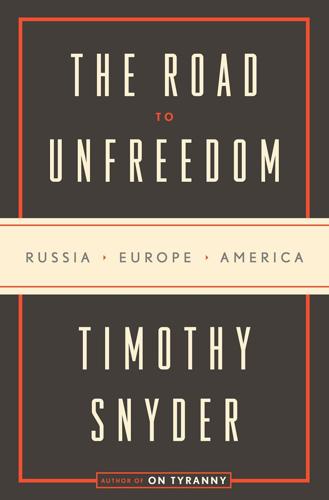
The Road to Unfreedom: Russia, Europe, America
by
Timothy Snyder
Published 2 Apr 2018
Every Pennsylvania county that Obama won in 2012 but Trump won in 2016 was in opioid crisis. Mingo County, West Virginia, was one of the places in America most touched by opioids. A town in Mingo County with a population of 3,200 was shipped about two million opioid pills per year. Mingo County went Republican in 2012, but in 2016 Trump took 19% more votes than did Mitt Romney four years earlier. With one exception, every Ohio county in opioid crisis posted significant gains for Trump in 2016 over Romney in 2012, which helped him to win a state that he had to take to win the election. In Scioto County, Ohio, ground zero of the American opioid epidemic, Trump took a spectacular 33% more votes than Romney had.
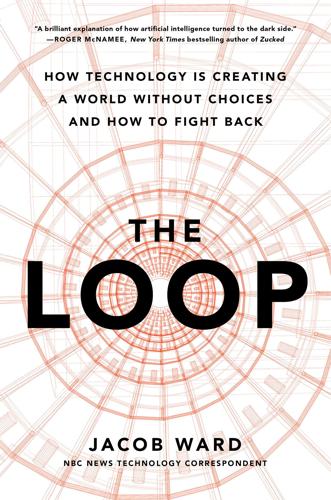
The Loop: How Technology Is Creating a World Without Choices and How to Fight Back
by
Jacob Ward
Published 25 Jan 2022
It’s a wonderfully useful set of traits to possess, or at least it once was. But it gets us in trouble now. It means we have a sort of built-in immunity to accurately recognizing and analyzing our modern habits and cravings—our inability to put down the phone and get a good night’s sleep, our opioid epidemic, our shared difficulties and vulnerabilities—and how they define our modern selves. In the 1970s, psychologists began experimenting with the implications of our highly evolved feeling of self-confidence. The psychologist Richard Nesbitt identified, for instance, an “actor-observer asymmetry”: a difference between how we explain our own behavior to ourselves versus how we explain the behavior of other people.
…
This was the first of roughly a dozen conversations I went on to have with people addicted to heroin over the next few weeks, but that first conversation with Patrick thoroughly dented my instincts about the kind of person that gets hooked. It helped, of course, that he reminded me of myself. He was white, male, neutral accent, like me. (And harm-reduction experts have long complained, and rightly, that journalists only recognized the depth of the opioid crisis when it began to kill people that resembled them. I’m caught in The Loop just like anyone.) But beyond that, he also talked about heroin in a way that I’ve come to understand is the most accurate picture of its power: as an irresistible force, like a storm front or a tide. In years of speaking with people in its grip, their feelings and their language on the subject are the same.
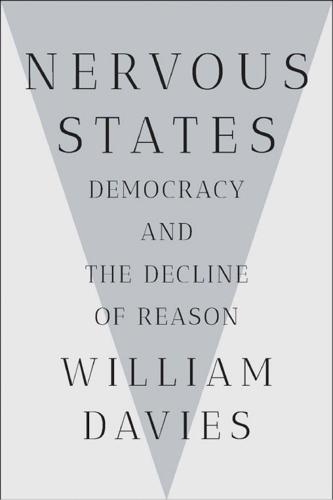
Nervous States: Democracy and the Decline of Reason
by
William Davies
Published 26 Feb 2019
Millard (2015), A History of Self-Harm in Britain: A Genealogy of Cutting and Overdosing, Springer. 46J. Watts (2017), “Why do people self-harm? You asked Google—here’s the answer,” Guardian, 6 September 2017. 47“The family that built an empire of pain,” New Yorker, 30 October 2017. 48“How the opioid epidemic has affected the US labor force, county-by-county,” Brookings, 7 September 2017. 49Quinones (2015). 50See N. D. Schull (2012), Addiction by Design: Machine Gambling in Las Vegas, Princeton University Press. Chapter 5: Knowledge for War 1Around 1 million people died over the course of the Napoleonic Wars, compared to 600,000 in the American Civil War of 1861–5 or around 8 million in the Thirty Years War—Hobsbawm (2010), pp. 92–3. 2Quoted in D.
…
Descartes (1995 [1641]), Meditations on First Philosophy: With Selections from the Objections and Replies, Cambridge University Press. 6“Trump succeeds where health is failing,” Economist, 21 November 2016. 7A. Case & A. Deaton (2015), “Rising morbidity and mortality in midlife among white non-Hispanic Americans in the 21st century,” PNAS, 112 (49). 8“Mortality in the United States, 2015,” NCHS Data Brief, No. 267, December 2016; “Life expectancy in US down for second year in a row as opioid crisis deepens,” Guardian, 21 December 2017. 9“A new divide in American death,” Washington Post, 10 April 2016. 10C. Becker et al. (1998), “The Demographic Crisis in the Former Soviet Union,” World Development, Vol. 26, No. 11. 11“Rise in life expectancy has stalled since 2010, research shows,” Guardian, 18 July 2017. 12L.
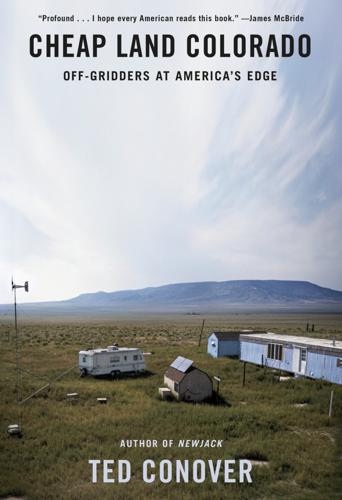
Cheap Land Colorado: Off-Gridders at America's Edge
by
Ted Conover
Published 1 Nov 2022
But since finding each other and starting a family, they said (and I observed), they used nothing but weed and tobacco; neither of them ever drank. Illegal drugs, however, were all around the valley—particularly opioids and heroin. The very month I had this visit with the Grubers, 60 Minutes ran a report on how the country’s largest drug distributor, the McKesson Corporation, had fueled the opioid epidemic by turning a blind eye to massive orders from small pharmacies in the San Luis Valley. “DEA investigators discovered that McKesson was shipping the same quantities of opioid pills to small-town pharmacies in Colorado’s San Luis Valley as it would typically ship to large drugstores next to big city medical centers.”
…
See also Costilla County; La Puente; and specific individuals and towns abandoned structures in, 28, 205–6 accessing owners of land in, 131–33 appeal of, 11, 13–14, 24–25, 50, 70, 107, 142–45, 184–86, 195, 253–55 basics of life in, 41 beauty of, 68, 174, 259 counties in, 29 county services strained by, 28–29 county tax sales and, 132–33 Covid-19 and, 217–20, 226, 237–38, 256–57 crime and, 107–8, 168–70, 191–99 Denver Post story on, 55 development and subdivision of, 19, 114–34, 125, 130, 185, 250–53 drought and, 227–28 early infrastructure projects in, 116–17 fences and boundaries and, 247–49 first experiences of, 9–21, 38 geography of, 109, 250 grid of roads in, 15, 40, 122 grid resources near, 252 Harper’s Magazine story on, 144–45 Hispanic history and descendants in, 109–13, 111, 190–91, 246–47 indigenous residents and, 33 jobs and transportation problems, 14 land and mobile home purchased in, 135–44 map of, 10, 35 night sky and, 214, 256 night wanderers and, 215–16 off-grid lifestyle and poverty in, 13–14, 21, 24–25, 28, 40–41, 52, 55, 68–71, 184–87, 197–98, 252, 258–59, 264n opioid crisis and, 57–59 rattlesnakes and, 187–90 reality TV and, 145–47 roads and, 35, 40, 131 size of, 3, 26–27, 35, 144 sky watching in, 101 supernatural and, 232–35 unchanged nature of, 9–11 winter in, 41, 43, 48–50 San Pablo settlement, 110 San Pedro settlement, 110 Santa Fe, New Mexico, 109, 199, 246 Saudi Arabia, 194 Schaefer, Dan, 51–53 schizophrenia, 212 schools, 54, 56, 72–73, 117, 140, 181, 208.

Model Thinker: What You Need to Know to Make Data Work for You
by
Scott E. Page
Published 27 Nov 2018
—Wallace Stevens In this final chapter, we apply many-model thinking to two salient policy issues: the opioid epidemic and economic inequality. We show how by engaging multiple models, we can better reason through these issues and better communicate why both have proven so difficult to solve. We can also see how, particularly in the case of opioids, experts might have used multiple models to anticipate the crisis before it occurred. That said, we do not want to oversell the potential for models to avoid disaster. Our treatment of the opioid epidemic is superficial, meant only as a template for how to apply many models when reasoning through a proposed policy or action.
…
The chapter concludes with a brief comment on the need for humility. Models can make us wiser, but complex systems by definition are difficult to predict and understand. We will make mistakes. And we can learn from those mistakes to become even wiser. Many Models and the Opioid Epidemic To give some sense of the scale of the opioid epidemic in 2015, in the state of Massachusetts over 4% of the population above age 11 had an opioid use disorder according to one estimate. Nationwide, in 2016, doctors wrote more than 200 million prescriptions for opioids, between 10 and 12 million people misused opioids, over 2 million people were classified as having an opioid use disorder, and more than 30,000 people died from opioid-related causes.
…
This structure also means that we can pull the book from our bookshelves or open it in our browsers and find self-contained analyses of linear models, prediction models, network models, contagion models, and models of long-tailed distributions, learning, spatial competition, consumer preferences, path dependence, innovation, and economic growth. Interspersed throughout the chapters are applications of many-model thinking to a variety of problems and issues. The book concludes with two deeper dives into the opioid epidemic and income inequality. 2. Why Model? Knowing reality means constructing systems of transformations that correspond, more or less adequately, to reality. —Jean Piaget In this chapter, we define types of models. Models are often described as simplifications of the world. They can be, but models can also take the form of analogies or be fictional worlds mined for ideas and insights.
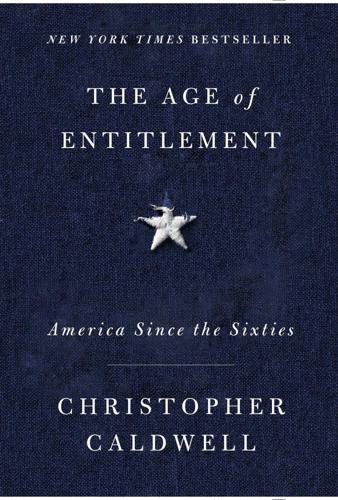
The Age of Entitlement: America Since the Sixties
by
Christopher Caldwell
Published 21 Jan 2020
It give birth to an entire new world-spanning genre: “gangsta” rap, which would echo through the banlieues of Paris and the dusty villages of West Africa; turn Tupac Shakur and Biggie Smalls into symbols of the inner city’s violence but also its romance, wisdom, and swagger; and vie with rock ’n’ roll for a while before rap (more generally understood) supplanted rock as the music of American youth of all races. The crack epidemic was at least as serious a problem as the 1970s heroin spike, with a death-by-overdose rate reaching almost 2 per 100,000. By the time of the 2016 election, which it did much to decide, the opioid epidemic that had begun with OxyContin was killing not 1.5 or 2 but 20 Americans per 100,000. In New Hampshire, Ohio, and Pennsylvania it was killing almost 40 per 100,000, and in West Virginia it was killing 50. Yet until the Republican candidate began to mention it, the airwaves were nearly silent about it.
…
The Gettysburg Address said it was set up for them.White politicians began to convey that they weren’t oblivious to being spoken of this way. A truculent tone unheard in mainstream political oratory since the 1960s crept back in. When Maine governor Paul LePage tried to explain to a mid-winter town hall meeting in Bridgton who the drug dealers were who were profiting from the opioid crisis that was killing the region’s young people, he said: These are guys with the name D-Money, Smoothie, Shifty—these types of guys. They come from Connecticut and New York, they come up here, they sell their heroin, then they go back home. Incidentally, half the time they impregnate a young white girl before they leave, which is a real sad thing because then we have another issue that we’ve got to deal with down the road.
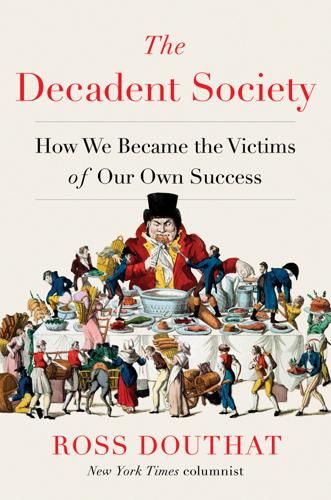
The Decadent Society: How We Became the Victims of Our Own Success
by
Ross Douthat
Published 25 Feb 2020
Sudden crises can have a profound effect: if you have just one child or grandchild (or your neighbor or friend has just one), and he or she dies or gets wounded in a foreign war, gets knocked into bankruptcy or foreclosure by a major recession, or ends up addicted, jailed, or dead during the opioid epidemic, your perspective on the future can be altered more dramatically than someone whose social web is larger, whose ties to the future expand instead of narrow. Another story from the Times in 2017 featured Roger Winemiller, a farmer who lost two adult children to opioid overdoses within nine months.
…
Even the evidence that it sometimes encourages aggression, though, might mean that the drug resembles the Internet in making a small minority more violent but tranquilizing the majority—so that for most people, a stoned society is more likely to be a dreamily contented society than an unstable or angry one, and the spread of pot will make an age of stagnation seem mostly like a chill good time. Then there is the opioid epidemic, which swept across the unhappiest parts of white America without anyone noticing because the drug itself quiets rather than inflames, supplying a gentle euphoria that lets its users simply slip away, day by day and bit by bit, without causing anyone any trouble. It’s not that there aren’t bursts of violence associated with the opioid trade, or addicts willing to commit murder for a fix.
…
“dangerous” categorization of, 141–42 see also pink police state Civil Rights Act (1964), 77 Civil War, US, likelihood of second, 133–34 class war, 173 climate change, 35, 202, 219, 221 catastrophic, 192, 195–97, 200 as consequence of dynamism, 179–80 disproportionate effects in global south of, 174–75, 202 mass migration and, 196–97 sustainable decadence and, 173–75 Clinton, Bill, 71, 77 Closing of the American Mind, The (Bloom), 97 Coates, Ta-Nehisi, 97 Cold War, 181 colleges and universities: civil liberties and, 141–43 conflicting missions of, 142 cultural repetition in, 97–98 sex bureaucracy in, 142–43 Communism, fall of, 103, 112, 114, 162–63 Communist Manifesto, The (Marx and Engels), 219 Communist Party, Chinese, 139 communitarianism, religious, 216 communities, virtuous, 215–17 Confessions of a Born-Again Pagan (Kronman), 224 Congo, Civil War in, 199 Congress, US: abdication of policy making by, 75–76, 194 polarization of, 194 conservatives, conservatism, 206 apocalyptic thinking among, 98 birthrate and, 53 in congressional abdication of policy making, 75–76 cultural repetition and, 97–98 decadence of, 203 nostalgia of, 100 sclerosis as viewed by, 72–76 see also right Constitution, US, as not designed to cope with ideological polarization, 78 convergence, of Western and non-Western decadence, 165–69, 173 Coppola, Francis Ford, 95 Corbyn, Jeremy, 114 corporations, dearth of investment and innovation by, 26 Cortés, Hernán, 189, 190 cosmopolitanism, 206, 217, 218 counterculture, 2 Counter-Reformation, 222, 230 Cowen, Tyler, 12, 28, 33–34, 35, 45, 46 Crash of 1929, 194 credentialism, 35 crime rates, decrease in, 150 Crouchback, Guy (char.), 183 Crowley, Aleister, 231 Cuarón, Alfonso, 65–66 Culture of Narcissism, The (Lasch), 96 culture, repetition in, see repetition culture wars, 97–98 cummings, e. e., vii Days of Rage protests, 129 deBoer, Freddie, 145–46, 149 debt, national, 70 ratio of GDP to, 192, 193 debt, overhang of, 34 decadence, 10 aesthetic definition of, 6–7 author’s definition of, 8–10, 239 Barzun on, 8, 12, 69, 91, 96, 100, 113, 135, 172, 184 birthrate and, see birthrates, decline in convergence of, in West and non-Western world, 165–69, 173 economic, see stagnation, economic as ending in dystopia, 184–85 end of, see decadence, deaths of EU as case study in, 82–86 hope for renewal as possible under, 179 institutions and, 69 Islamic world and, 159 moral definition of, 7 and need for a Messiah, 237–39 opposition to, political and social risks of, 178–80, 182–83 policy limits imposed by, 87 political sclerosis as, see sclerosis, political possible inevitability of, 234–36, 240 repetition as, see repetition seductiveness of, 217 use of term, 6–7 decadence, deaths of, 115, 187–240 catastrophe as, see catastrophe divine intervention scenario for, 239–40 neo-medieval scenario for, 200–203 renaissance scenario for, see renaissance space travel scenario for, 236, 239–40 decadence, sustainable, 115, 117–85, 240 arguments in favor of, 177–85 authoritarian systems in, 137–54; see also pink police state benefits of, 180–82 climate change and, 173–75 comfortable numbness in, 119–36 as contradiction in terms, 179 dystopian elements of, 184–85 management of, 181–83 meritocracy in, 169–73 politics and, 129–36 pornography and, 119–22 prescription drugs and, 126–28 virtual entertainments and, 122–26, 128–29 Deep Throat (film), 119 Defense Department, US, UFO videos released by, 233–34 deficit, investment constrained by, 34 deficit spending, 192–93 DeLong, Brad, 192 Democracy in Europe Movement 2025 (DiEM25), 219 democratic norms, 68–69, 78, 163 Democrats, Democratic Party: 1960s–70s reform in, 77 Senate controlled by, 67 demographic change, weight of, 34, 56–58 religious renewal and, 222–23 stagnation and, 57 see also aging populations Deneen, Patrick, 215–17 Deng Xiaoping, 140 depression, among teenagers, 123 deregulation, 24 despair, declining birthrate and, 61–62 developed world: aging populations of, 34, 56–58, 60, 66 limits to growth in, 32–36 shrinking family size in, 59–60 developing world, emergence of decadence in, 165–69, 173 Didion, Joan, 110, 131 Discovery (space shuttle), 37 disease, spread of, 190–91 Disneyland, 37 dissent, marginalization of, 151–52 divine intervention, as scenario for end of decadence, 239–40 divorce rate, 51, 55 Dobson, James, 119, 120 “Dope Show, The” (music video), 140–41 dot-com bubble, 24 Douthat family, 59–60 Dreamland (Quinones), 127 drone warfare, 150 drugs, prescription: antidepressant, 126 increased use of, 126 opioid epidemic and, 126–27 social upheaval repressed by, 126–27 Dune (Herbert), 229 Dunham, Lena, 95 Durant, Will, 189, 202 Dworkin, Andrea, 120 Dylan, Bob, 110 dynamism, 25, 46, 58, 110 dangers of, 179–80 immigration and, 62, 64 nostalgia for, 206 Dyson, Freeman, 6 dystopias, 3, 47–50, 65–66, 94, 95, 122, 128, 144, 155–56, 179 economic catastrophe, 191–95, 200 economic stagnation, see stagnation, economic economy, declining birthrate and, 56–58 economy, US, deceleration of, 24 education: constraints on, 34–35 productivity and, 34–35 Ehrenreich, Barbara, 224 Ehrlich, Paul, 43 Eisenhower-era America, 2 elections, US: of 2008, 67 of 2016, 162, 182 Emanuel, Rahm, 67 Encyclopædia Britannica, 107 End of History and the Last Man, The (Fukuyama), 112–13 energy revolution, 210 Engels, Friedrich, 219 Enlightenment Now (Pinker), 165 entertainment, politics as, 153–54 entrepreneurship, declining rate of, 25–26 environment: constraints imposed by, 35 see also climate change Erdog˘an, Recep Tayyip, 163 Eurafrica, 198–200, 206–10, 218, 228–29 Christianity revitalized by, 207–8 euro, 82 destructive consequences of, 83–85 Europe, 197 aging population of, 198 economic stagnation in, 25 far right in, 85, 155, 162 left’s scenario for renaissance of, 219 mass migration to, 197–99, 200 nationalism in, 85, 172–73, 218 pink police state in, 143–44 populist resurgence in, 85 US economy vs., 166 US governmental system vs., 82, 83 European Union, 172–73, 217, 219 birthrate in, 50 centralization of authority in, 83, 84–85 financial crisis in, 84, 192 Muslim refugees in, 160 possible collapse of, 194 public distrust of government in, 83 sclerosis in, 82–86 unrealistic assumptions of, 82–83 Euro Tragedy: A Drama in Nine Acts (Mody), 84 evangelical Protestantism, 53, 101, 119, 222 Everlasting Man, The (Chesterton), 238–39 exhaustion, cultural and intellectual, decadence as, 9 expansionism, 3–4 environmental and social cost of, 5–6 exploration: abandonment of, 5–6 ideology of, 3–4, 231–32 Fake News, 153 families, shrinking of, 58–62 far left, 172, 194 far right, 134, 193, 194, 227 in Europe, 85, 155, 162 fascism, 112, 160, 194 feminism, 47, 51, 53, 54, 90, 97, 108, 120, 121, 156, 227 fiction, literary, declining sales of, 91 Fight Club (film), 113, 185 filibuster, 78 finance industry, see Wall Street financial crisis of 2008, 11, 69, 80, 84, 137, 192 Finland: decline of sexual relations in, 55 declining birthrate in, 52–53 Fire Next Time, The (Baldwin), 97 Flynn effect, 35 Flynt, Larry, 120 food production, climate change and, 195–96 Ford, John, 110 Foreign Policy, 133 Fox News, 77 France, 32 immigrants in, 64 pronatalist policies of, 52 protest movements in, 171, 172 Francis, Pope, 103 Freedom Time: Negritude, Decolonization, and the Future of the World (Wilder), 208 free-market policies, 25 free trade, 24, 28, 29 French Revolution, 206 From Dawn to Decadence (Barzun), 8 frontier: closing of, 5, 135 New, 181 space as, 2, 6, 231–32; see also Apollo moon program Turner on importance of, 3–4 Fukuyama, Francis, 12, 83, 112–13, 115, 135, 159 Fyre Festival, 17–18, 21 Game of Thrones (TV show), 95, 96 Garland, Merrick, 78 gay rights, revolution in, 99 gender, wage gap and, 99 genetic engineering, 11, 43, 211, 229, 230 Germany, 192 immigrants in, 64, 85 Germany, Nazi, 225 Germany, Weimar, 129, 131 Gersen, Jacob, 142 Gharbi, Musa al-, 97 Gibson, Mel, 189–90, 202 gig economy, decline of traditional freelancing in, 27 gilets-jaunes, 171 Gingrich, Newt, 77 globalism, 218 global South: climate change and, 174–75, 202 mass migration from, 208 global warming, see climate change God and Man at Yale (Buckley), 97 Goebbels, Joseph, 132 Gordon, Robert, 12, 33, 34, 35, 40–41, 46 government: informal norms of, 78 policy failures of, 71 public distrust of, 75 public expectation of action by, 74–75 uncontrolled sprawl of, 72, 76 Government’s End (Rauch), 72 Graeber, David, 12, 38, 40, 41 Gramsci, Antonio, vii Grantland, 93–94 Great Awakening, 103, 222, 228 Great Britain: Brexit in, see Brexit US technological mastery vs., 165 Great Depression, 30, 109 Great Filter, 234–36, 240 Great Recession, 11, 23, 27, 69, 114, 124, 193, 194 falling birthrate in, 51 Great Society, 77 Great Stagnation, The (Cowen), 33–34, 45 Greece, 84, 85 in 2008 financial crisis, 192 Green New Deal, 221 Green Revolution, 43, 196 growth, limits on, 32–36, 46 Guardian (Australia), 220 Guinea, 206 Habits of the Heart (Bellah et al.), 97 Handmaid’s Tale, The (Atwood), 47–50, 65 Handmaid’s Tale, The (TV show), 95 Hanson, Robin, 234 Harris, Mark, 93–94 Harris, Sam, 224 Hazony, Yoram, 218, 219 health care reform: interest groups and, 73 Obama and, 68, 69–70, 73–74, 76 Heavens and the Earth, The (McDougall), 2 Herbert, Frank, 229 Heterodox Academy, 97 Hinduism, 225 history: end of, 112–15, 135, 163, 177 return of, 129, 183, 195 viewed as morality play, 157 hive mind, 106–7 Holmes, Elizabeth, 18–19, 22 hookup culture, 121 horoscopes, 225 Houellebecq, Michel, 155–57, 159, 160–61, 172, 226, 227 House of Representatives, US, 68 “How the Wealth Was Won” (2019 paper), 26 Hubbard, L.
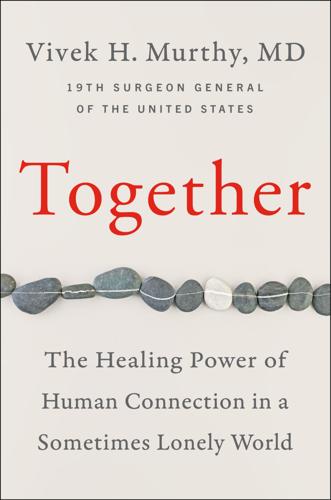
Together
by
Vivek H. Murthy, M.D.
Published 5 Mar 2020
We sat down in small group meetings and large town halls, spending time with parents, teachers, pastors, small business owners, philanthropists, and community leaders. Everywhere we went, we asked a simple question: How can we help? The answers in some cases confirmed what I suspected were major pain points: the opioid epidemic and rising rates of obesity, diabetes, and heart disease, to name a few. Other responses took me by surprise. Teachers in Washington State, for example, told me that children were vaping during class. Kids weren’t allowed to chew gum or smoke in class, yet there were no rules prohibiting the use of e-cigarettes in school.
…
It turned out, the schools were waiting for guidance from the local government, which in turn was waiting for the federal government. These conversations played a central role in guiding the agenda I pursued during my time in office and beyond. They moved me to produce the first surgeon general’s report on the addiction crisis and to launch a national campaign to address the opioid epidemic. And it was those teachers, along with parents, scientists, and policymakers, who inspired me to issue in 2016 the first federal report on e-cigarette use by youth. But one recurring topic was different. It wasn’t a frontline complaint. It wasn’t even identified directly as a health ailment.
…
But they also showed that emotional and physical pain are both processed by the brain in very similar ways. The overlap between physical and emotional pain in the brain sheds light on why people may reach for more powerful and dangerous substances—like opioid painkillers and alcohol—when they experience emotional pain from loneliness. With the opioid epidemic, in particular, we have increasingly appreciated the role emotional pain plays in driving use and overuse. Opioid deaths have been labeled deaths of despair for good reason. While we recognize loneliness and other sources of emotional pain as risk factors for misuse and addiction, we don’t make the connection often enough.

The Ones We've Been Waiting For: How a New Generation of Leaders Will Transform America
by
Charlotte Alter
Published 18 Feb 2020
“I want to see the Interstate Highway Act of this generation,” he said. “The Apollo project for battery technology. “If we don’t have a battery for the twenty-first century,” he added, “everything else is fucking semantics.” He spent his days canvassing the district, talking about the opioid epidemic ravaging the island, transportation infrastructure, and building a sea wall to prepare for another superstorm. He drilled home the fact that his opponent had taken money from the company that makes OxyContin. Later, Max would say that he knew all along that he would win, but he couldn’t have known for sure.
…
He figured this was how America should be solving all its problems—by attacking them from all sides at once, informed by locals on the ground. Max thought America needed what he liked to call a “domestic surge”: a massive investment in government resources to solve problems at home the way the military solved problems abroad. A surge could solve the opioid crisis. A surge could repair American infrastructure. He thought it was bullshit that George W. Bush kept talking about government being the problem at home, but when it came to another country’s challenges, American government was the solution. “We are fucking Americans,” Max liked to say. “And that means we fix stuff

People, Power, and Profits: Progressive Capitalism for an Age of Discontent
by
Joseph E. Stiglitz
Published 22 Apr 2019
See Alan B. Krueger, “Where Have All the Workers Gone? An Inquiry into the Decline of the U.S. Labor Force Participation Rate,” Brookings Papers on Economic Activity 48, no. 2 (2017): 1–87. 37.Abuse of corporate power, the subject of the next chapter, plays a direct role in the story of the opioid epidemic: the drugs were pushed by Purdue Pharma. See Beth Macy, Dopesick: Dealers, Doctors, and the Drug Company that Addicted America (Boston: Little, Brown, 2018). It also plays a role in the obesity epidemic. The Centers for Disease Control and Prevention notes that almost 40 percent of Americans are obese.
…
Twenty years ago, for instance, we didn’t realize the dangers posed by carbon emissions; now we do, and we need regulations to reflect that. Twenty years ago, obesity was not the problem it is today. Now, we need to protect our children from the sweet and salty foods, designed to be addictive, that are contributing to this epidemic. Twenty years ago, we didn’t have the opioid crisis that has in part been manufactured by the pharmaceutical industry. Twenty years ago, we didn’t have a rash of for-profit educational institutions exploiting their students and the government loans for which they qualify.15 The conflict over net neutrality provides a vivid example of the need for regulation and the ways in which corporate interests manipulate the system for their own advantage.
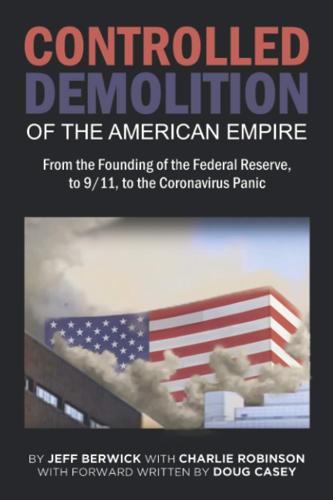
The Controlled Demolition of the American Empire
by
Jeff Berwick
and
Charlie Robinson
Published 14 Apr 2020
Americans must understand that the real reason for this make-believe war was to demolish the inner-cities and put minorities in prison for long stretches, while simultaneously diminishing their ability to ever get a decent job once they get out. It looks like they “won” the war. The New Crack The current opioid epidemic in the Appalachian region of the United States is predominantly a white issue, but the use of drugs in poor areas of the country was established as the norm because of the crack epidemic decades earlier. Is the opioid crisis an accident, or could it be the new crack cocaine push to target the poor white communities? It should be obvious by now that nothing like this happens accidentally, and that the intentional push of these drugs, in association with rampant over-prescribing by medical professionals, is by design.
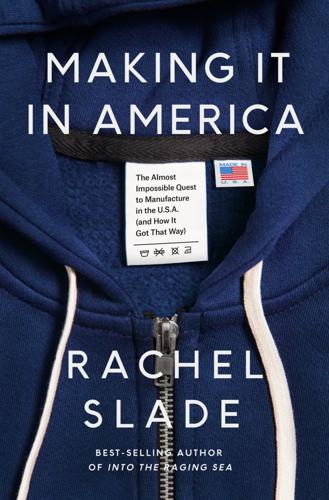
Making It in America: The Almost Impossible Quest to Manufacture in the U.S.A. (And How It Got That Way)
by
Rachel Slade
Published 9 Jan 2024
In early 2004, Lemon put him in charge of organizing the ground game for John Kerry’s presidential campaign for a third of Pennsylvania—from Harrisburg to Lehigh Valley to Reading—that election year. Ben had no idea what he was getting into. The labor movement “was like a funeral. It was like death,” says Ben. “I mean, I touched it and I felt it.” This was early in the opioid epidemic, before anyone really had a handle on what was going on, and addiction was sweeping through former steel cities like Allentown and Bethlehem. Jonathan Burkhardt, who worked alongside Ben during the campaign, says, “I had lived in Third World countries. I knew poverty, but this was just crazy.”
…
Union members’ jobs were also under constant threat of nonunion, and sometimes undocumented, lower-paid workers—people who might have less training and be more willing to put themselves at physical risk. Anyone could wield a paintbrush, right? Jeff was passionate about protecting his union brothers and sisters. Through his organization, they had pensions, health insurance, and annuities so they could retire before their bodies gave out. But the opioid epidemic had hit America’s construction industry particularly hard—workers therein were four times as likely to become addicted than workers in any other realm. When Ben told Jeff what he and Whitney were up to, Jeff wanted to see the hoodie for himself, so Ben sent him a prototype, warning him that it was an untested product.
…
Maisel, The (Amazon series), 119 McAlary, Brian, 218 McDonald’s, 206 McGowen, Amy, 221, 223, 252 McNerney, James, 262 McSwane, David, 213 McVeigh, John, 48 Meader, Derek, 201–2, 207–8 Merchant Marine Act of 1920, 204 Merrow company, Fall River, Massachusetts, 244–45, 247 Merrow family, 40, 244 Mestrich, Keith, 287–88 Mexico American oil exported to, 295 American textile and clothing production in, 18, 27, 139, 263, 264 free trade and, 14, 15 NAFTA and, 18, 25–26, 139 USMCA and, 19, 286n Whirlpool production in, 78–79 workers immigrate to the U.S., 121 Miners for Democracy, 65 Monsanto, 154, 155 Moody, Lemuel, 37 Moonrise Kingdom (film), 119 Moran, James, 213 Morello, Tom, 95 Morris, Jeff, 207–8, 210 N NAFTA (North American Free Trade Agreement), 15–16 American companies closed, jobs lost, 18 American workers’ income decline after, 19 closing of New England’s textile mills and, 45–46 impact on Mexico, 25–26 killing of garment industry, 118 offshoring and, 260, 261, 263 passage of, 192 replaced by USMCA, 19, 286, 286n National Association of Manufacturers, 4 National Child Labor Committee, 134 National Consumers League, 182, 183 Nearing, Helen and Scott, 33–34 Neel, Alice, 59n Negro Motorist Green Book, The, 207 New Balance, 26, 300n New York Times despair in global garment industry, 25 on Fetterman’s hoodie, 139 NFL (National Football League), 288, 288n NFLPA (NFL Players Association), 288–89 Nguesso, Sassou, 246–47 Niekerk, David, 269 Nike, 24, 25, 26–27, 262, 291 9/11 terrorist attacks, 49, 74, 87, 88 Nixon, Richard, 72–73, 147, 184 NLRB (National Labor Relations Board), 54, 57, 58, 108, 112n, 286 Amazon union votes and, 241–42 Noxubee, Mississippi, 152–53 O Obama, Barack, 74, 76, 78, 94 Olsen, Glenn, 163–64 Opower, Inc., 188–89 OPRRE (Office of Public Roads and Rural Engineering), 203 Organized Money (Mestrich), 288 OSHA (Occupational Safety and Health Administration), 108, 112n, 158, 184 Outside Business Journal, 130 OXO, 270 P Painters District Council 35, 217 Pakistan, 156, 263 Parkdale, North Carolina, 170 Patagonia company, 110, 130 Paton, Elizabeth, 25 Pendleton Woolen Mills, 26–27 Pennsylvania J&L Steel and, 54–55, 58–59 labor movement in, 54–59 loss of manufacturing, 20 opioid epidemic in, 61 presidential race (2004), 61 Waxman organizing in, 52–53, 61–62 Perkins, Frances, 183 Peterson, Gary, 162–64, 165, 171 Philadelphia, Pennsylvania, 20, 55, 137n, 142, 195, 207, 274, 303 Pilchman, Ned, 166–71 American Fabrics and, 166–70, 235–36 China cornering the cotton market and, 231–32, 234 partner, Gary, 231–35, 237 pessimism about America manufacturing, 170–71 Pinchot, Gifford, 58 Pinochet, Augusto, 72–73 Polartec, 105 Pollock, Jackson, 59n Portland, Maine, 36–39 Brian Boru pub, 90, 96, 98, 104 Covid pandemic and, 221 Falafel Time restaurant, 294 Greater Portland Immigrant Welcome Center, 126–27 New Americans in, 38–39, 122, 126–27 Portland Adult Education, 120 Portland High School, 36 Portland Observatory, 37 public school system, 51 Waxman family in, 35, 100 PPE (personal protective equipment) American manufacturing and, 211–12 American Roots and, 214–19, 224 China-made masks and, 224 Covid pandemic shortages, 211, 212 hospital buying groups, 211–12 shady brokers in, 212–13 Priest, Matt, xii Prison Policy Initiative report (2017), 130, 130n Prohibition, 184 ProPublica, 213 Public Citizen’s Global Trade Watch, 17–18 Public Eye watchdog group, 20–21 pie chart: “What Makes Up the Price of a Zara Hoodie?
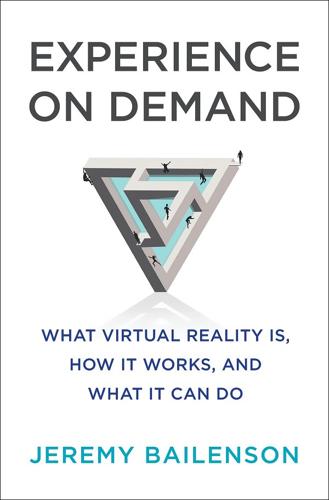
Experience on Demand: What Virtual Reality Is, How It Works, and What It Can Do
by
Jeremy Bailenson
Published 30 Jan 2018
Volkow, “America’s Addiction to Opioids: Heroin and Prescription Drug Abuse,” paper presented at the Senate Caucus on International Narcotics Control, Washington, DC, May 14, 2014, https://www.drugabuse.gov/about-nida/legislative-activities/testimony-to-congress/2016/americas-addiction-to-opioids-heroin-prescription-drug-abuse. 3. Dan Nolan and Chris Amico, “How Bad is the Opioid Epidemic?” Frontline, February 23, 2016, http://www.pbs.org/wgbh/frontline/article/how-bad-is- the-opioid-epidemic/. 4. Join Together Staff, “Heroin Use Rises as Prescription Painkillers Become Harder to Abuse,” Drug-Free, June 7, 2012, http://www.drugfree.org/news-service/heroin-use-rises-as-prescription-painkillers-become-harder-to-abuse/. 5. Tracie White, “Surgeries found to increase risk of chronic opioid use,” Stanford Medicine News Center, July 11, 2016, https://med.stanford.edu/news/all-news/2016/07/surgery-found-to-increase-risk-of-chronic-opioid-use.html. 6.
…
He was no doubt wary due to a growing awareness in the medical community that opioid painkillers—as effective and necessary as they sometimes are—have been overprescribed in recent decades, and with grave unintended consequences. The surge in opioid use began in the mid-1990s, when lower prices and aggressive marketing from pharmaceutical companies led to a sharp increase in the prescription and use of these drugs. The results have been nothing less than catastrophic, as the “opioid epidemic,” as it is now known, has ravaged countries around the globe, and in particular the United States, where deaths among heroin and prescription drug abusers top 27,000 a year. There were nearly 19,000 deaths from opioids alone in 2014, a 369% increase from 1999. In the same period, heroin overdoses increased 439%.
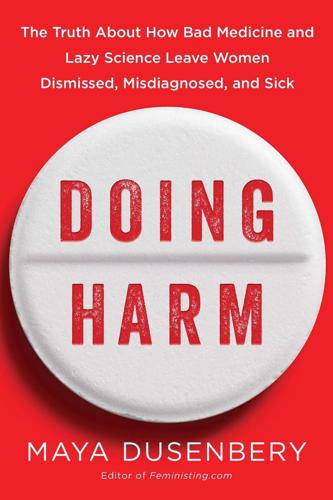
Doing Harm: The Truth About How Bad Medicine and Lazy Science Leave Women Dismissed, Misdiagnosed, and Sick
by
Maya Dusenbery
Published 6 Mar 2018
Binkley had no doubt: “I would be institutionalized if I had not been a physician and been so persistent.” * * * In For Grace’s survey nearly half the respondents thought doctors were more reluctant to prescribe opioid pain medication to them because of their gender. The opioid epidemic has been hovering in the background of a few of the stories in this book so far. With about 33,000 Americans now dying each year from heroin, fentanyl, and prescription opioid overdoses, there’s no doubt that the opioid epidemic is a public health crisis. It’s also clear that as doctors have become increasingly fearful of prescribing opioids, it has led to a heightened atmosphere of distrust surrounding patients’ reports of pain—both chronic and acute—that especially affects certain patients: women, people of color, people with low incomes.
…
As Maggie and Jackie learned, simply seeking care at an ER for pain without an immediately evident cause can be enough to provoke suspicions that you’re “narco-savvy.” Pain experts caution that concern about the real risks of addiction must be balanced with the recognition that, while opioids are not recommended as a first-line option for chronic pain, they are a lifesaving last resort for some patients. They also point out that, while the roots of the opioid epidemic are complicated, some of the blame lies in medicine’s failure to effectively respond to the chronic pain epidemic. As Dr. Sean Mackey, chief of the Stanford Division of Pain Medicine, recently explained to Vox, in the nineties there was growing awareness that pain should be treated, but doctors didn’t have much training on how to do so.
…
In journalist Judy Foreman’s book . . . Judy Foreman, A Nation in Pain: Healing Our Biggest Health Problem (New York: Oxford Univ. Press, 2014). As Dr. Sean Mackey, chief of the Stanford Division of Pain Medicine, recently . . . German Lopez, “A Pain Doctor Explains How He Balances His Patients’ Needs with the Opioid Epidemic’s Lessons,” Vox, May 2, 2017, https://www.vox.com/policy-and-politics/2017/5/2/15440000/sean-mackey-opioids-chronic-pain. According to an estimate by the Chronic Pain Research Alliance (CPRA), vulvodynia . . . Chronic Pain Research Alliance, Impact. One of their concerns was that patients . . .
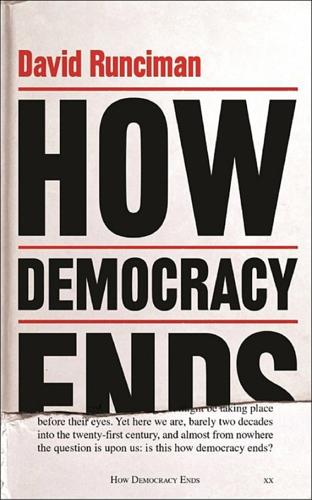
How Democracy Ends
by
David Runciman
Published 9 May 2018
It is possible to live right next to a bloodbath and yet to be more or less immune from it. Chicago-style murder is not the most dramatic outbreak of violence currently sweeping the US. An even greater toll comes from self-harm. The suicide rate is up sharply this decade, notably in rural areas. More Americans currently shoot themselves than shoot others. The opioid epidemic now rampant across parts of America is taking far more lives than gun violence and shows no sign of stopping. Road deaths are also on the rise. As a result, the US is the first country in the developed world that has seen a decline in life expectancy. More than 100,000 Americans died last year either from an overdose or in a road accident.
…
Trump seems able to do almost nothing to reach out to the millions of Americans who are at risk from everyday violence. Yet he is quite capable of destroying millions himself. The long tail of violence is emblematic of the bind democracy is in: the threats it faces are either too big or too small. What the opioid epidemic and the risk of nuclear war with North Korea have in common is the difficulty democratic politics finds in getting a grip on them. The space between the personal and the apocalyptic, which is where democratic politics traditionally plays out, has become a battleground for rival world views which are informed by personal or apocalyptic expectations of the worst that could happen.
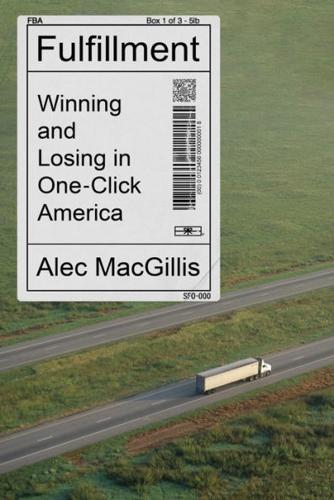
Fulfillment: Winning and Losing in One-Click America
by
Alec MacGillis
Published 16 Mar 2021
The impact killed the deer. It broke Todd’s foot, weakened by a previous injury, in three places. And it totaled his car, an uninsured black 1993 Crown Victoria. * * * The first half of 2017 was also nightmarish for Dayton. Montgomery County had for several years been at the forefront of the opioid epidemic, a status the experts attributed to some unhappy confluence of the county’s location at a major highway juncture (being a logistics hub also meant being a trafficking hub) and the depth of the economic collapse in the area (laid-off manufacturing workers not only were depressed but had legitimate injuries that had helped gain them the painkiller prescriptions that pharmaceutical manufacturers had marketed very heavily across southern Ohio).
…
Crystal City curiosity D’Ambrosio, Charles D’Aniello, Daniel Darman, Richard Daschle, Tom Data Center Alley data centers: cost of building; energy consumption by; as home of the cloud; Northern Virginia consolidation of; Northern Virginia expanding; power demand for; processing capabilities of; renewable energy for; secrecy of; security for; for security of information; as storehouse of the digital soul; tax exemptions for; Virginia Data Center Leadership Awards; see also Amazon Web Services Dayton, Ohio: Amazon sights on; auto industry collapse in; as auto town; coronavirus pandemic in; Dunbar poem about; innovation in; jail-to-shelter circuit in; Kettering of; Lewisburg Container near; logistics industry in; manufacturing job loss in; migration to and from; opioid epidemic hitting; Patterson, J. H., of; Pollard singing about; Pratt Industries near; Project Big Daddy near; as Silicon Valley of its time; slogans; St. Vincent de Paul Gateway Shelter for Women and Families in; Trump and Clinton, H., comparison in; Trump protests in; Trump 2016 presidential campaign in; turnaround in; see also Swallows, Todd death: Baltimore homicide; from coronavirus pandemic; from delivery van accident; from drug overdose; of Floyd; from forklift accidents; of Gray; from heart attacks; by police; from sortation center collapse; of Sparrows Point; from suicide; from tractor accident; from vacant home collapse Dees, Wendy Demmler, Jay Democratic Party demolition: in Baltimore; of Sparrows Point Denver, Colorado Department of General Services (DGS) Dharmic Engineers: agent of; creation of; meetings of Diapers.com Dieter, Dawn Diggs, Louis dignity Dillon, C.
…
.; tech industry involved in; for Trump; Trump era of local/small business: Amazon Day Expo on trade-offs for; Amazon Day Expo promoted as initiative for; Amazon driving out; endeavors in Northern Virginia Lovett, Robert MacLarion, Chris Mailman, Stanley Malek, Fred mall closures Manduca, Robert Marin, Mario Mayer, Jean market valuation Martinez, Bob May Company May Day McCulloch, Bill McGahren, John McGovern Committee Melton, Shayla mental health epidemic Merchant.com Metropolitan Area Exchange-East Microsoft: antitrust prosecution against; civic engagement of; co-founding of; coronavirus pandemic benefiting; Pentagon contract awarded to; recruitment from; Seattle establishment of; total capital spending soar for minority-owned business, see Pencil Cup Office Products Mitchell, Stacy: on online gatekeepers; on private government Mittal, Lakshmi Molinari, Susan monopolies monopsony Monroe, Ohio Moret, Stephen Mosqueda, Teresa: big-business tax support from; New York City warned by Mount Pleasant plantation Myers, Scott: job durations; public transit cuts impacting; Seattle move for; Transit Riders Union co-founded by NAFTA National Cash Register National Defense Authorization Act National Landing: Amazon career day at; changes to area of; naming of Nelsonville, Ohio: Brooks, B., of; Brooks, J., of; Brooks, M., of; chain stores invading; Clinton, H., presidential votes from; coronavirus pandemic in; fork incident near; Hutchison of; industries in early; Obama support from; poverty in; Rocky Shoes & Boots in; shoe industry in; state representative campaign video on; Texas Roadhouse near; Trump presidential votes from; Trump support in; William Brooks Shoe Company in; see also Sappington, Taylor New Albany, Ohio Newman, NaTasha New York City: as Amazon HQ2 headquarters selection; Amazon seizing coronavirus pandemic opportunity in; Amazon shipping congestion across; Bloomberg as former mayor of; Facebook seizing coronavirus pandemic opportunity in; Google headed to; hyper-prosperity issues in; population relocation during coronavirus pandemic; resistance to Amazon HQ2 headquarters in Nides, Tom Nixon, Richard nondisclosure agreements: Amazon employee; AWS community Northern Virginia: Arlington in; AWS in; AWS and Dominion Power protests in; Carver Road community in; Data Center Alley in; data center consolidation in; data center expansion in; Grayson of; Haymarket in; small business endeavors in; Virginia Data Center Leadership Awards in Nuti, Bill Obama, Barack: Amazon praised by; Carney working under; job loss during early presidency of; Nelsonville, Ohio, supporting; Office of Management and Budget under; Sappington endorsement from; Sappington supporting; Swallows job changes during presidency of; Wall Street unaccountable under; Washington, D.C., transformation following election of Obetz, Ohio Ocasio-Cortez, Alexandria Occupational Safety and Health Administration (OSHA): Carlisle, Pennsylvania, Rhodes fatality reported to; Carlisle, Pennsylvania, Rhodes investigation by; Carlisle, Pennsylvania, Shoemaker fatality investigation by; citation manipulation by; forklift hazard warning from; Kilp of Odeh, Khuloud Office Depot office of economic development Office of Management and Budget office supplies: coolofficesupplies.com selling; El Paso Independent School District buying; El Paso Office Products selling; Faber-Castell selling; Pencil Cup Office Products selling; procurement as counterpart to; RFPs for; trade show; Tucker fighting Amazon over Ohio: Amazon employee injuries in; Amazon interest in; Amazon new warehouse plan in; Amazon warehouse approval in; Amazon warehouse openings in; Dublin; Etna; food-stamp recipients in; Hilliard; JobsOhio; Little Cities of Black Diamonds in; mall closures in; Monroe; New Albany; Obetz; sales tax assessment in; state representative race in; tax credits in; tax exemptions in; see also Columbus, Ohio; Dayton, Ohio; Nelsonville, Ohio Ohio Development Services Agency Olah, David Olszewski, Johnny, Jr. opioid epidemic: in Dayton, Ohio; Sappington witness to Orban, Stephen Orszag, Peter OSHA, see Occupational Safety and Health Administration Package Rescue PACs, see political action committees Parikh, Manish Parks, Florence Parrish, Charlie patriotic philanthropy Patterson, Jennifer Patterson, John H.

Green Swans: The Coming Boom in Regenerative Capitalism
by
John Elkington
Published 6 Apr 2020
See also: https://hbr.org/2018/06/25-years-ago-i-coined-the-phrase-triple-bottom-line-heres-why-im-giving-up-on-it. 26.For more details, please see here: https://volans.com/project/tomorrows-capitalism-inquiry/. 27.Anand Giridharadas, Winners Take All: the Elite Charade of Changing the World. New York: Penguin Random House, 2018. 28.Hannah Kuchler, “Tech Entrepreneurs Attack Opioid Crisis,” Financial Times, May 27, 2019. 29.Beth Mole, “DEA Tracked Every Opioid Pill Sold in the US. The Data Is Out—And It’s Horrifying,” Arstechnica.com, July 17, 2019. 30.Hannah Kuchler, “J&J: The Next Target of Anger over America’s Opioid Crisis?” Financial Times, September 5, 2019. See also: https://www.ft.com/content/c4eddc22-cd86-11e9-99a4-b5ded7a7fe3f. 31.Chris McGreal, American Overdose: The Opioid Tragedy in Three Acts.
…
A few months later, Anand Giridharadas published his provocative book, Winners Take All.27 With a reputation for skewering plutocrats, Giridharadas argues that the wealthy are using philanthropy to pretend they are changing the world, while maintaining the status quo. He gave the example of the Sackler family, whose fortune derives from the same drugs that have caused the US opioid crisis. An estimated two million Americans suffer from what is called opioid use disorder, based on addiction to these powerful painkillers.28 Obsessed with their financial bottom lines, opioid drug makers flooded America with seventy-six billion pills between 2006 and 2012 alone.29 Enough to supply every adult and child in the country with thirty-six opioid pills a year—when a ten-day supply can hook one in five people.
…
An estimated two million Americans suffer from what is called opioid use disorder, based on addiction to these powerful painkillers.28 Obsessed with their financial bottom lines, opioid drug makers flooded America with seventy-six billion pills between 2006 and 2012 alone.29 Enough to supply every adult and child in the country with thirty-six opioid pills a year—when a ten-day supply can hook one in five people. Even the fabled Johnson & Johnson, with the “secret sauce” of its ethical “credo,” has been whacked with a $572 million court claim because of its role in causing the opioid crisis.30 Another dark Gray Swan, which a former head of the US Food and Drug Administration has described as “one of the greatest mistakes of modern medicine”:31 Really, what were we thinking? Whereas some might argue that it is better for people like the Sacklers to spend at least a modicum of their wealth on good works rather than luxuries, Giridharadas disagrees, emphatically.
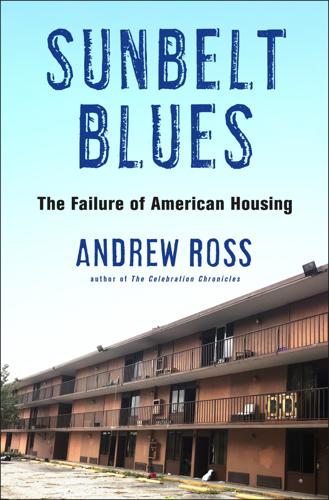
Sunbelt Blues: The Failure of American Housing
by
Andrew Ross
Published 25 Oct 2021
Aric Chokey and Skyler Swisher, “5.6 Billion Opioid Pills Flooded the State,” South Florida Sun Sentinel, July 27, 2019, https://www.sun-sentinel.com/news/florida/fl-ne-opioids-flood-florida-data-20190726-3gltamcwojbltehe45aj73fyoy-story.html. 3. See Beth Macy’s account of the opioid crisis, Dopesick: Dealers, Doctors, and the Drug Company That Addicted America (New York: Little, Brown, 2018). 4. Julia Ochoa, “Florida Fails to Open Methadone Clinics in Opioid Crisis,” WJCT News, January 24, 2019, https://news.wjct.org/post/florida-fails-open-methadone-clinics-opioid-crisis. CHAPTER 4: FORTY-ACRE WOOD 1. Julie Hunter et al., Welcome Home: The Rise of Tent Cities, Allard K. Lowenstein International Human Rights Clinic at Yale Law School and the National Law Center on Homelessness and Poverty, March 2014, https://nlchp.org/wp-content/uploads/2018/10/WelcomeHome_TentCities.pdf. 2.
…
Then at some point it breaks, and they turn their back on family, children, their hygiene, everything, and end up sleeping in the woods because nothing matters anymore except that twenty-dollar rock.” “THE PAIN THEY ALL SEEM SO SCARED OF” The kind of addiction that Hector and Jake see on a daily basis is a staple of motel living across the country, especially in semirural areas hit hard by the opioid crisis. Florida is particularly implicated in the country’s opioid problems. In the first decade of the twenty-first century, its largely unregulated “pill mills” were the primary supplier of oxycodone products to the East Coast and Great Lakes states.1 “Doctor shoppers” drove down and back up Interstate 75 all the way into New England, picking up and delivering pills on a route known as the “Oxy Express.”
…
For many addicts, the ordeal of withdrawal is the thing they most fear, and dopesickness is the condition that reminds them of that pain. As Hector puts it, “The worst ones have already been through withdrawal, and so they have felt the pain they all seem so scared of.” In any event, the state offers very little help: only twenty-six of Florida’s sixty-seven counties have a methadone clinic. Even as the opioid crisis deepened, the Department of Children and Families issued only two licenses for new clinics over the course of five years.4 The economy of peninsular Florida is driven by tourism but also depends on a steady flow of retirees, so it is inseparable from the business of pain care. Medicare and Medicaid are the lifeblood of a state often known as “heaven’s waiting room.”
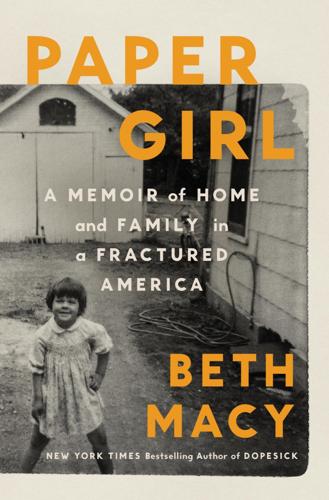
Paper Girl: A Memoir of Home and Family in a Fractured America
by
Beth Macy
Published 6 Oct 2025
Our impasse reminds me of that old carnival ride at our county fair, the Gravitron: The cylinder spins so fast that the floor drops, and before you know it, you’re just stuck there pinned to the wall, immovable. * * * — In my hometown, the number of children living in poverty has more than tripled since I left.[4] The number orphaned by the opioid crisis has tripled just since 2015.[5] After the jobs went away, heroin helped itself to my hometown, followed by fentanyl and meth. The result of that one-two punch has been a preponderance of trauma that is overtaxing every system meant to address it. “Backward mobility,” economists call this devastating trend, exacerbated by the Great Recession.
…
Few in the group had connections to towns like Urbana, where the 2020 stolen-election narrative is so embedded that the town’s community center held showings of the “documentary” 2000 Mules, alleging a vast conspiracy among left-wing nonprofit groups and paid ballot “mules” to steal the 2020 election. Having written three rural-centered books about the aftermath of globalization followed by the parallel whammy of the opioid crisis, I wasn’t sure to what degree our national estrangement was Trump’s fault and to what degree the so-called elite—including newsmakers, the media, and a thoroughly deregulated business class—had brought it on ourselves. I left the roundtable with more questions than answers. And I worried, a lot, about potential violence.
…
This kind of demographic shift has never happened in any democracy in the history of the world.” The 2008 election of the first Black president, Barack Obama, turned up the flames of an already simmering political divide, even though he rarely talked about race. White-identity politics soared as rural white Americans, still suffering from the aftermath of offshoring and hammered by the opioid crisis, watched their majoritarian status diminish. Donald Trump, Steve Bannon, and Tucker Carlson became the new Republican standard-bearers of white-identity politics, with their insistence that it’s okay to be “anti-woke” and to dislike people who are different from you because they’re probably just stealing your tax dollars.
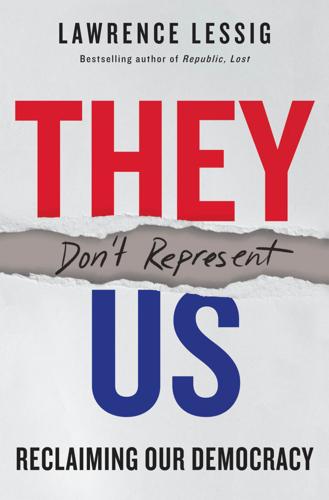
They Don't Represent Us: Reclaiming Our Democracy
by
Lawrence Lessig
Published 5 Nov 2019
From 1999 through 2017, almost 218,000 people have died in the United States from opioid overdoses, with almost 50,000 dying in 2017 alone—about a third higher than the number of people who died in automobile accidents in the same year.93 People talk endlessly about the effect of money in politics. There’s no clearer example—both about the corrupting effect and its dramatic consequences—than the opioid crisis. Our government bent its standards and allowed a completely predictable epidemic to arise because of the enormous amount of money that was made available to the key actors in this tragedy.94 Standing behind the opioid crisis is a single firm, Purdue Pharma. Standing behind that firm is an extraordinarily wealthy family, the Sacklers.95 Most of the money the Sacklers have collected is from the profits on OxyContin.
…
On the general problem of influence with pharmaceuticals, see Lawrence Lessig, America, Compromised (Chicago: University of Chicago Press, 2018), ch. 4; Beth Mole, “Big Pharma Shells Out $20B Each Year to Schmooze Docs, $6B on Drug Ads,” Ars Technica, January 11, 2019, available at link #53. 94.See Chris McGreal, “FDA’s Opioids Adviser Accuses Agency of Having ‘Direct’ Link to Crisis,” Guardian, January 24, 2019, available at link #54. 95.Or at least the part of the Sackler family associated with two of the three original Sackler brothers; Arthur Sackler was not involved in the company when it developed and pushed its opioid, OxyContin. 96.At least in the sense of institutional corruption that I describe in America, Compromised. 97.Except as indicated, the facts in this section are drawn from the extraordinary article by Patrick Radden Keefe, “The Family That Built an Empire of Pain,” New Yorker, October 30, 2017, available at link #55. 98.Ethan Barton, “American Cartel: Here Are the Politicians That Took Opioid Tycoons’ ‘Dirty, Bloody Money,’” Daily Caller, March 14, 2018, available at link #56. 99.Chris McGreal, “How Big Pharma’s Money—and Its Politicians—Feed the US Opioid Crisis,” Guardian, October 19, 2017, available at link #57. 100.For the founding rule on recusal statutes, see Nevada Commission on Ethics v. Carrigan 564 U.S. 117, 122-25 (2011). 101.Nara Pavão, “Corruption as the Only Option: The Limits to Electoral Accountability,” Journal of Politics 80 (July 2018): 996–1010, available at link #58. 102.Dennis F.
…
See advertising; broadcasting; Internet; newspapers Michigan gerrymandering reform, 232–237 Microsoft, 112, [119n113], 291n95, 293n113 money in politics 2016 presidential race, 140 2018 House and Senate contributions, 140 advertisers and information, 91–93, 98–99, 101, 105–107, 120–123, 200–201 campaign contribution regulation, 61, 140–141, 146, 147 campaign donations as favors, 57–62, 224–225 corporation spending, 58, 146 dark money, [59n120], 140, 279n120 democracy coupons, 142–146, 151, 166–167, 296n6 Equal Protection Clause requiring reform, [61n123], 280n123 fining officials who obstruct, 167 First Amendment and, 47–48 fixing campaign contributions, 140–151, 299n18 fundraising and political polarization, 28 gerrymandering reform, 234 incentives to states to increase voting, 166–167 lobbyists, 57–61, 65, 223, 224, 229 more money, more access, [59n118], 278n118 more money, more influence, 57–58, 59, 150 OpenSecrets.org, 140 opioid crisis, 46–48 paying people to learn politics, 200 polarization profitable, 80, 88, 93–98, 107–109 policy results affected, [60n122], 62, 279n122 progress stymied by, 65–66 public vs. private campaign funding, 56–61, 62–63, 65, [146n10], 297n10 representatives’ pay, 228 roll call votes tracking, 27, 272n64 selling Senate seats, 31–32 soft money receipts graph, 148 speech credits, 144–145, 151, 166–167 swing states receiving, 41 vouchers for campaign contributions, 142–146, 151, 166–167, 296n6 Mongolian deliberative poll, 175–177 National Popular Vote Interstate Compact (NPVIC), 161–162, 303n31 New Jersey gerrymandering reform, 241–246 Newberry v.
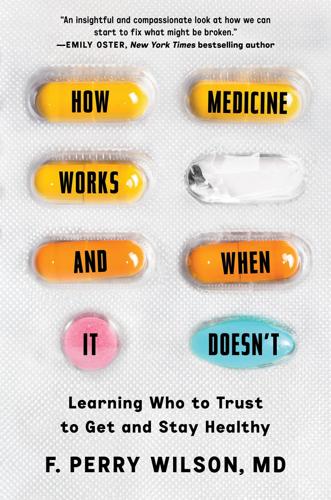
How Medicine Works and When It Doesn't: Learning Who to Trust to Get and Stay Healthy
by
F. Perry Wilson
Published 24 Jan 2023
But lifestyle is inadequate, in my mind, to explain the vast epidemic of so-called “deaths of despair”—suicides, drug overdoses, and deaths from alcoholic liver disease—plaguing the United States right now. Beginning around 2000, epidemiologists noticed an uptick in these particular types of deaths, but the magnitude of the problem was not fully clarified until recent years. While drug overdoses in the setting of the opioid epidemic have driven some of the increase, the last time suicide levels reached as high as they are now was in 1938, during the Great Depression. The last time deaths from alcoholic liver disease reached this level was in 1910. Overdose deaths have never even been close to this high. And while the increase in deaths of despair was first reported among white men, recent research shows similar trends among Hispanic and Black men, and women as well.
…
CHAPTER 11: MOVING TOGETHER 1 Beginning around 2000, epidemiologists: Anne Case and Angus Deaton, “Mortality and Morbidity in the 21st Century,” Brookings Papers on Economic Activity (Spring 2017): 397–476, https://www.brookings.edu/bpea-articles/mortality-and-morbidity-in-the-21st-century. 2 While drug overdoses in the setting of the opioid epidemic: United States Congress, Joint Economic Committee Republicans, “Long-Term Trends in Deaths of Despair,” September 5, 2019, accessed June 16, 2022, https://www.jec.senate.gov/public/index.cfm/republicans/2019/9/long-term-trends-in-deaths-of-despair. 3 Loneliness has a powerful effect: John T.

The Meritocracy Trap: How America's Foundational Myth Feeds Inequality, Dismantles the Middle Class, and Devours the Elite
by
Daniel Markovits
Published 14 Sep 2019
Middle-class American adults are dying from indirect or even direct self-harm, as they—literally—somatize the insult of their meritocratically justified exclusion. The billboards along I-94 East from Detroit to St. Clair Shores prominently include advertisements for Narcan, a medicine used to “stop opioid overdose,” and Macomb County, where St. Clair Shores lies, recorded seven times as many drug-related deaths in 2016 as in 1999. The opioid epidemic extends far beyond St. Clair Shores. Suicides, overdoses, and alcohol abuse (having increased between three and five times faster among less educated than among more educated adults) now kill Americans at rates roughly equivalent to the AIDS epidemic and account for rising mortality overall. In these and myriad other ways, the idleness that the meritocracy trap imposes on an economically superfluous middle class has exacted over a million “deaths of despair” over the past decade.
…
Clinton’s professionalism plugged into one side of the politics, while Trump’s unprofessionalism plugged into the other. The outward anger that elected Trump unsurprisingly also tracked the inward anger behind rising middle-class mortality. Trump recorded many of his biggest advances over Mitt Romney’s vote shares from 2012 in counties worst hit by the opioid epidemic. St. Clair Shores, which in 1960 delivered Kennedy an optimistic 25 percentage point landslide, gave Trump an angry 10 percentage point victory in 2016. Finally, Trumpism—and Trump’s own rise—exposes the incumbent elite’s meritocratic contempt for ordinary citizens and its own disenchanted weakness.
…
See Neera Tanden et al., “Towards a Marshall Plan for America,” Center for American Progress, May 16, 2017, accessed July 24, 2018, www.americanprogress.org/issues/economy/reports/2017/05/16/432499/toward-marshall-plan-america/. outside of (and even in opposition to) work: See Michèle Lamont, The Dignity of Working Men: Morality and the Boundaries of Race, Class, and Immigration (Cambridge, MA: Harvard University Press, 2000), 19–20; Williams, White Working Class, 16–17, 20, 31, 37. worst hit by the opioid epidemic: See Timothy Snyder, The Road to Unfreedom: Russia, Europe, America (New York: Tim Duggan, 2018), 263–66. 25 percentage point landslide: See Board of County Canvassers, Canvass of Votes Cast at the General Election Held on Tuesday, the 8th Day of November, A.D. 1960, November 8, 1960, accessed July 24, 2018, http://clerk.macombgov.org/sites/default/files/content/government/clerk/pdfs/electionresults/1960-11-08-GENERAL-ELECTION.pdf.
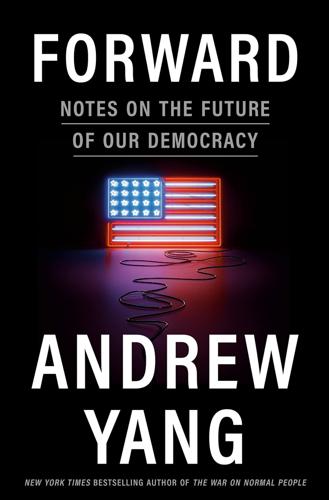
Forward: Notes on the Future of Our Democracy
by
Andrew Yang
Published 15 Nov 2021
That line of thinking ignores that each of these issues has a crushing impact on our economy in addition to its human toll. Our revenue-maximizing cost-driven health-care system has led to the United States spending double that of comparable nations while facing lower life expectancy and higher infant mortality rates. The cost of the opioid epidemic has been estimated at more than $78 billion every year, not to mention the hundreds of thousands of lives lost and families ruined, some of whom I met on the trail every day. Mental health issues at work alone put a $550 billion drag on the economy. Not having a middle class will be devastating for our economy over time, as businesses catering to these consumers shut their doors as their customer base erodes.
…
Bobby Kennedy famously echoed Robert F. Kennedy, “Remarks at the University of Kansas, March 18, 1968,” John F. Kennedy Presidential Library and Museum. Suicides, drug overdoses Sherry L. Murphy et al., “Deaths: Final Data for 2018,” National Vital Statistics Reports 69, no. 13 (Jan. 2021). The cost of the opioid epidemic Curtis Florence et al., “The Economic Burden of Prescription Opioid Overdose, Abuse, and Dependence in the United States, 2013,” Medical Care 54, no. 10 (2016): 901–6. Mental health issues at work “Report: State of the American Workplace,” Gallup, Sept. 22, 2014. And climate change, by the year Frank Ackerman and Elizabeth A.
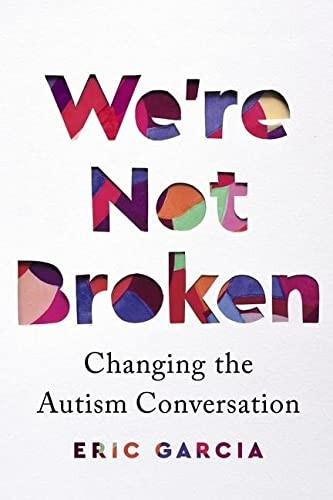
We're Not Broken: Changing the Autism Conversation
by
Eric Garcia
Published 2 Aug 2021
And I don’t know about you all, but where my heart is at is making some history for the Thirty-Sixth District,” she tells the crowd. She doesn’t immediately mention her identities. Rather, she rattles off goals relevant to Democrats in the audience, such as fighting for health care for all, combating the opioid epidemic that has ravaged Pennsylvania, and investing in infrastructure. Only then does Benham mention she is autistic. “I’m going to be the first out LGBTQ woman in the state legislature in Pennsylvania,” she says to applause. “I’m also going to be the first openly autistic woman elected to a state legislature anywhere in this country.”
…
Weeks after the 2018 midterm elections, I joked with one of my Lyft drivers that I was the only political reporter who was not there to cover the election. And I certainly wasn’t there to write one of those god-awful “Trump Country” profiles about “forgotten voters” in Appalachia. National political reporters who cover West Virginia usually write about the decline of the coal industry, the gripping poverty, or the opioid epidemic that has ravaged the state (at one point leading to 41.5 deaths per 100,000 people). These were usually the rationales given for why the state had shifted from voting for Democrats in the twentieth century to voting overwhelmingly for Donald Trump in 2016. Hence I was puzzled when I was interviewing someone at the University of Alabama about its autism students’ program, and Megan Davis, the director of UA-ACTS, mentioned they had modeled their program after Marshall University’s in West Virginia.
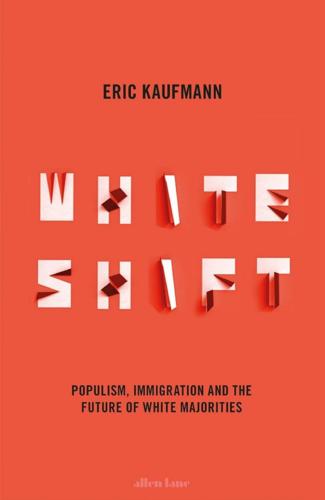
Whiteshift: Populism, Immigration and the Future of White Majorities
by
Eric Kaufmann
Published 24 Oct 2018
As with Brexit, the storyline also works for the right-wing populists themselves because it lends a ‘we are defending the powerless’ David-and-Goliath nobility to their cause. Countless observers point to work by Anne Case and Nobel Prize winner Angus Deaton to stake their claim. These researchers discovered a steady increase in non-Hispanic white suicide rates linked to an opioid epidemic among working-class white Americans.107 Other authors favoured J. D. Vance’s autobiographical and evocative Hillbilly Elegy, about growing up in backwoods poverty in Appalachia. Some tramped the byways of rustbelt Ohio or reported from struggling post-industrial towns to suggest that economic misery explained Trump’s success.
…
The manager of the Oakland A’s baseball team, Billy Beane, in Michael Lewis’s Moneyball showed that large-scale datasets could reveal truths that scouts acting on gut instinct failed to see.5 On-base percentage mattered more than how athletic a batter looked or how many big hits he had. The scouts, like all of us, think in terms of vivid images, which lead us to make what Daniel Kahneman and Amos Tversky term ‘fast-thinking’ decisions.6 These can be misleading. In approaching populism, many have been seduced by stories of ‘left-behind’ working-class whites, the opioid crisis and rusting factories, so we’ve had numerous media ‘safaris’ into Trumpland which tend to simply confirm reporters’ biases.7 Journalists have been mesmerized by election maps. Looking at fine-grained surveys of individual voters produces a different picture, in which values count far more than economics or geography.
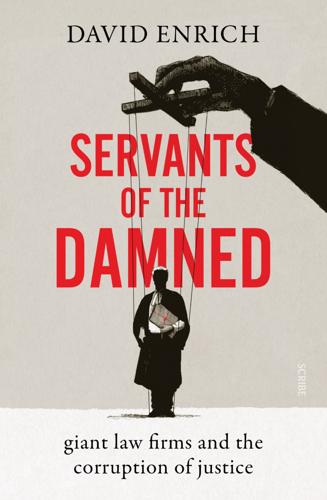
Servants of the Damned: Giant Law Firms and the Corruption of Justice
by
David Enrich
Published 5 Oct 2022
McGahn grins, his teeth bared, appearing uncomfortable. Trump complains about how much money is sloshing around campaigns, how candidates are beholden to special interests. It is a phenomenon that his lawyer helped perpetuate, and now McGahn’s smile vanishes behind pursed lips. Trump bemoans the opioid epidemic ravaging New Hampshire, attributes it to drugs coming across the Mexican border. McGahn, whose employer represents Purdue Pharma, which caused this epidemic, applauds politely. “I am going to be the greatest jobs president that God ever created,” Trump bellows, wagging his index finger, and McGahn seems almost to laugh, like he can’t decide whether to take this guy seriously.
…
And so thousands upon thousands of scripts for dangerous narcotics kept getting filled at Walmart stores nationwide, long after other pharmacy chains had cut off the offending doctors.* [* These are the facts as outlined by the U.S. Justice Department in public court filings. Walmart has denied wrongdoing.] To the prosecutors, the evidence was clear: One of the country’s largest pharmacy chains was fueling the opioid epidemic by, at best, turning a blind eye to illegal activity. What’s more, the DEA had repeatedly reprimanded Walmart for this kind of stuff in the past, and the government’s sundry wrist-slaps had had approximately zero discernible impact on the company’s behavior. Walmart executives and their lawyers soon realized the feds were onto them.
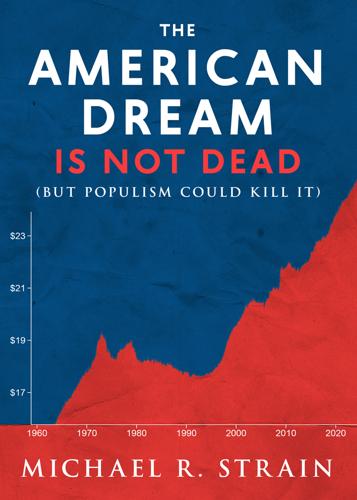
The American Dream Is Not Dead: (But Populism Could Kill It)
by
Michael R. Strain
Published 25 Feb 2020
The United States faces serious economic challenges, including managing the effects of advancing technology, declining workforce participation rates, towns and communities that have been left behind by globalization, failing schools, tempered dynamism and energy, and relatively slow productivity growth. America faces serious social challenges as well, including decaying social capital, increasing socioeconomic fragmentation, “deaths of despair,” the opioid crisis, and a very troubling increase in suicides. But despite these very real challenges, the national conversation about the American Dream is so detached from the underlying reality that it has become incorrect. We are confusing pockets of real struggle in American life with the broader canvas of the American experience.
…
Congress started by Senator Mike Lee and led by social scientist Scott Winship—and my AEI colleagues Charles Murray, Tim Carney, Ryan Streeter, and Yuval Levin are just a few of many analysts and authors who are rightly concerned about the state of American associational life, the institutions of civil society, and the extent of socioeconomic segregation and fragmentation. The opioid crisis and “deaths of despair”—a phrase coined in the important work of economists Anne Case and Angus Deaton—have been much discussed, and their rise has been deeply alarming. The broader conversation about our cultural and social challenges can often be squishy, and one is reasonably left to wonder whether the troubles that many point out are really all that bad.

New Laws of Robotics: Defending Human Expertise in the Age of AI
by
Frank Pasquale
Published 14 May 2020
Cat Ferguson, “Searching for Help,” Verge, September 7, 2017, https://www.theverge.com/2017/9/7/16257412/rehabs-near-me-google-search-scam-florida-treatment-centers. 48. Andrew McAfee and Erik Brynjolfsson, Machine, Platform, Crowd: Harnessing our Digital Future (New York: Norton 2017). 49. David Dayen, “Google Is So Big, It Is Now Shaping Policy to Combat the Opioid Epidemic: And It’s Screwing It Up,” Intercept, October 17, 2017, https://theintercept.com/2017/10/17/google-search-drug-use-opioid-epidemic/. 50. Ferguson, “Searching for Help”; Dayen, “Google Is So Big.” 51. 2017 Fla. Laws 173 (codified at Fla. Stat. §§ 397.55, 501.605, 501.606, 817.0345). 52. Ryan Singel, “Feds Pop Google for $500M for Canadian Pill Ads,” Wired, August 24, 2011, https://www.wired.com/2011/08/google-drug-fine/. 53.
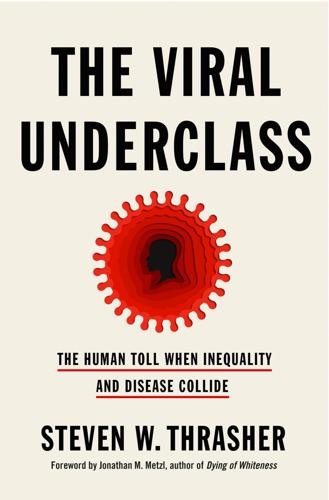
The Viral Underclass: The Human Toll When Inequality and Disease Collide
by
Steven W. Thrasher
Published 1 Aug 2022
AIDS deaths worldwide in 2020: Juan Ambrosioni, José Blanco, and Juliana Reyes-Ureña, “Overview of SARS-CoV-2 Infection in Adults Living with HIV,” Lancet 8, no. 5 (May 1, 2021): E294–E305. the opioid addiction crisis: Zachary Siegel, “The Coronavirus Is Blowing Up Our Best Response to the Opioid Crisis,” New Republic, July 29, 2020, https://newrepublic.com/article/158645/coronavirus-blowing-best-response-opioid-crisis. “infections and the outbreak itself”: Lauren Jackson, “A Conversation with Dr. Anthony Fauci,” New York Times, April 2, 2020, https://www.nytimes.com/2020/04/02/podcasts/the-daily/coronavirus-fauci.html. hospitalization rates correspondingly rose: Alexis C.
…
a total of $84 million: Dee Carden and Christina Carrega, “West Virginia Lands $37M Settlement Against Pharmaceutical Distributor for ‘Massive’ Pill Dumping,” ABC News, May 2, 2019, https://abcnews.go.com/US/west-virginia-lands-37m-settlement-pharmaceutical-distributor-massive/story?id=62781219. death rate to new highs: Nabarun Dasgupta et al., “Opioid Crisis: No Easy Fix to Its Social and Economic Determinants,” American Journal of Public Health 108, no. 2 (2018): 182–86. led to an overdose: Walt Bogdanich and Michael Forsythe, “McKinsey Proposed Paying Pharmacy Companies Rebates for OxyContin Overdoses,” New York Times, November 27, 2020, https://www.nytimes.com/2020/11/27/business/mckinsey-purdue-oxycontin-opioids.html.
…
National Institute of Allergy and Infectious Diseases (NIAID) nationalism National Junior College Athletic Association Wrestling Championships National Park Service Native Americans nativism Nature Nazi Germany Nebraska necropolitics neoliberalism New Deal New Democrats New Jersey “new Jim Crow” New Orleans New Republic Newsom, Gavin New York City New York City Council New Yorker New York Police Department (NYPD) 85 New York Post New York State New York State Senate New York Times Magazine Nguyen, Kimarlee Nixon, Jay norovirus Norplant North Carolina Nott, Josiah Clark nursing homes Oakland Obama, Barack Ocasio-Cortez, Alexandria Occupational Safety and Health Administration (OSHA) Ohio OKCupid Olivarius, Kathryn Onassis, Aristotle Onassis, Jacqueline Kennedy On the Origin of Species (Darwin) opioid crisis organized abandonment othering overdoses ownership mentality Oxfam International OxyContin (oxycodone) Palestinians Parasite (film) parasites, defined Paris Paris Is Burning (film) Pasteur, Louis Patel, Rupa Pathogen Research Database Patient 31 Patient O (“outside”) patient zero “Patient Zero”.
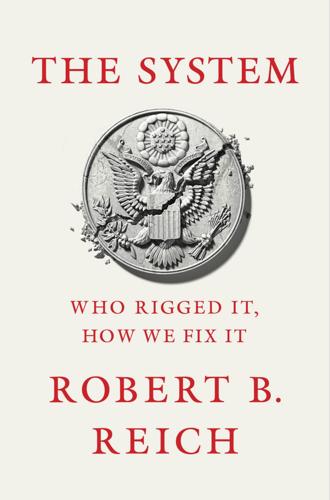
The System: Who Rigged It, How We Fix It
by
Robert B. Reich
Published 24 Mar 2020
McDonald’s CEO Stephen Easterbrook, fired in 2019 for having an inappropriate relationship with an employee, received a severance package of nearly $42 million—more than double the $15.9 million he made in 2018. In 2019, OxyContin maker Purdue Pharma sought bankruptcy protection from lawsuits seeking to hold it accountable for its role in the nation’s opioid epidemic. Yet in the preceding year, the company paid its CEO, Craig Landau, $9 million and board chairman, Steve Miller, nearly $4 million, and five other board members a combined $3.7 million. In 2018, the stock market posted its worst annual performance since the financial crisis. The median shareholder return for the largest five hundred corporations was a negative 5.8 percent.
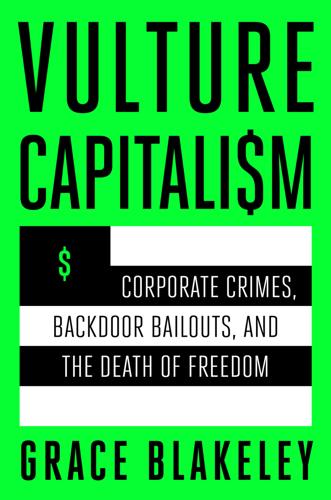
Vulture Capitalism: Corporate Crimes, Backdoor Bailouts, and the Death of Freedom
by
Grace Blakeley
Published 11 Mar 2024
The fact that McKinsey was encouraging this extraordinarily unethical behavior would be scandalous enough, were it not for the fact that MIO was also investing in Valeant via several hedge funds at the same time, and several former McKinsey consultants sat on the company’s management team.89 In 2021, MIO settled a case with the SEC for $18 million over its failure to put in place proper safeguards to prevent information gleaned from McKinsey’s advisory work from being used in the investment decisions made by MIO.90 But perhaps the greatest scandal to hit McKinsey in recent years has involved its role in the opioid epidemic in the US.91 McKinsey advised Purdue Pharma on how it could “turbocharge” sales of the highly addictive drug OxyContin—as well as how the company might push back against regulators attempting to limit the use of the drug, and even how it might “counter the emotional messages from mothers with teenagers that overdosed.”92 Before filing for bankruptcy in 2020, Purdue was given one of the largest fines ever levied against a pharmaceutical company after it was found to have “knowingly and intentionally conspired and agreed with others to aid and abet” medical professionals prescribing its opioids inappropriately.93 Several McKinsey partners had worked for both the pharmaceutical companies and the government agencies that were supposed to be regulating those companies.
…
human capital and, 33 international rules and norms in, 203–4 key stakeholders in, 35–36 managerialism and, 34–35, 84, 100, 108, 216 political vs. economic influence and, 33 post–World War II popularity of, x–xii, 24–26 as regime of “managerial governance,” 34–35 resistance to labor movements, 15, 31, 33–34, 62, 64–65, 77–78, 148, 160, 216–17, 218, 220, 221, 252–53 in South Africa, 203 state as rule-setter vs. planner, 149–52, 165, 204 state role in maintaining market competition, 148 structural adjustment programs (SAPs), 198–202 as term, x vested interests in, 10, 32, 34, 35–36, 52, 56, 119, 120, 151–52, 246, 259, 268–69 violence and coercive power of, 33–34 Neumann, Adam, 109–13 New Deal reforms, 26, 28 New Economics Foundation (UK), 255 New Economy Organisers Network (NEON), 250 New International Economic Order (NIEO), 261 New Taylorism, 100 Nielsen, Juanita, 228 Nine Years’ War (1688–97), 124–25 Nixon, Richard, 241, 242–43 Nkrumah, Kwame, 177, 190, 191, 200, 208 Non-Aligned Movement, 190–92, 193 Norway COVID-19 response, 57 developmentalism and, 137 Nudge (Thaler and Sunstein), 162–63 O Obama, Barack, 41, 251 Occupy movement, 249–50 oligopoly, prices and, 94–95 On the Principles of Political Economy and Taxation (Ricardo), 179–80 OpenSecrets, 43 opioid epidemic, 55–56 Our Lives in Their Portfolios (Christophers), 136 OxyContin, 55–56 P Palmer, Geoffrey H., 43 Paltrow, Gwyneth, 110 Paltrow, Rebekah, 110 Panama, as tax haven, 43, 132 Panama Papers, 43 Panitch, Leo, 31, 198, 210 parliamentary socialism (Miliband), 247 participatory budgeting (PB), 232–33, 235–36, 247, 258–59 Paulson, Henry, 49 Paycheck Protection Program (PPP, US), 41–45 Pelosi, Nancy, 42 People’s Asset Manager (PAM), 257 People’s Grocery Initiative (Mississippi), 237 People’s Republic of Walmart, The (Phillips and Rozworski), 88 pharmaceuticals industry, 55–56 Philip Morris, 194 Philippines, US colonialism and, 173–79 Philippon, Thomas, 87–88 Phillips, Leigh, 14, 88, 264 Pinochet, Augusto, 34, 246 Pistor, Katharina, 131 Platform Cooperative Consortium, 254 Poland Balcerowicz Plan, 201 labor movement and, 78 Polanyi, Karl, 143 Ponzi schemes, 120–21, 156–57 Poulantzas, Nicos, 158–59 Prebisch, Raúl, 184–85, 199 Prince, Erik, 104 Prior, David, 155 prison-industrial complex (US), 33–34 Prison Notebooks (Gramsci), 20 privatization, 32–33 of authority, 102–3 Global South and, 198–99, 206–8 private law and, 130–32 privatized Keynesianism, 117–18 in Russia (former Soviet Union), 201 in the United Kingdom, 218 in Zambia, 206–8 Project Cybersyn (Chile), 245–46, 247, 265, 266 Project on Government Oversight (US), 43 Protocols of the Elders of Zion, The, 19 Puerto Rico, US colonialism and, 173, 174 Pulse nightclub (Florida), 103 Purdue Pharma, 55–56 Putin, Vladimir, 44, 140, 208 Q quantitative easing (QE), 127–28, 129, 136 R Rajan, Raghuram, 114 Raymond, Lee, 139–40 Raytheon Technologies, 219 Reagan, Ronald, 31, 62, 176 Reconstructing the Corporation (Hayden and Bodie), 254 Republican Party (US) deregulation trend, 7 fossil-fuel industry and, 140, 141 Resistance Dairy (Argentina), 234 Ricardo, David, 146, 179–81 Road to Serfdom, The (Hayek), vii, xi, 34, 204 Robison, Peter, 6 Rockwell Collins, 219 Rodney, Walter, 185 Rolling Jubilee, 249–50 Röpke, Wilhelm, 150, 203, 208 Rostow, Walt, 181, 199 Roth, Joseph F., 43 Rothschild, 123–24 Roubini, Nouriel, 114 Roundup, 90, 124 Rozworski, Michal, 14, 88, 264 Ruffalo, Mark, 91 Russia (former Soviet Union) centralized planning and, ix Cold War and, ix, xx COVID-19 response, 57 dependency theory and, 185–86 fossil-fuel industry and, 140 Gosplan central planning agency, 109 privatization in, 201 Ukraine and, 44, 64, 201 World War II and, 181 Ruth’s Hospitality Group, 41 S Sachs, Jeffrey, 201 Sachs-Warner hypothesis, 181–82 Salomon Smith Barney, 120 Sánchez Gordillo, Juan Manuel, 229–30 Sanders, Bernie, 250 Sanofi, 46 Sato, Hajime, 172 Saudi Arabia, 46, 54, 140, 209, 220–21 Sawant, Kshama, 79–80 Schlumberger, 45 Schmidt, Robert, 23–24 Scholar, Tom, 156 Schumpeter, Joseph, 85–88, 94, 95–96, 117 Serageldin, Kareem, 52 service workers, 98–99 Shake Shack, 41 Shanahan, Patrick, 8 shareholder distributions of Boeing, 6 COVID-19 aid to corporations and, 45–47, 59–60, 64 of Ford Motor Company, 28, 29–30, 31 Shaxson, Nicholas, 131–32 Shell, 64 Shock Doctrine, The (Klein), 38, 193, 198 Siegel Group, 45 Silicon Valley Bank, 65 Sinema, Kyrsten, 141 Singapore, developmentalism and, 137 Slobocian, Quinn, 203 Smith, Adam, 14, 85, 103–4, 145–47, 151, 165 Smoke, Ben, 45 social contract theory, 143–52 social democracy cartelization problem, 259–60 democratizing the future and, 264–66 neoliberalism vs., 33–34 post–World War II, 24–25 socialism capitalism vs., 221 centralized planning and, 221 Coase and, 83, 84 COVID-19 pandemic and, xx, 59, 61 dangers of, x democracy as synonymous with (Meiksins Wood), xviii democratic socialism, 216–17, 241–48, 265 expanding collective ownership of firms, 253–55, 257 freedom in, xix Gramsci and, 20 Hayek and, x–xi lack of class divisions in, xix parliamentary (Miliband), 247 socialized capitalism (Galbraith), 97–98 state planning vs., 66 technology in transition to, 265 United Kingdom resistance to, 220, 221 Société Generale, 49 SoftBank, 110–13, 117, 154 Son, Masayoshi, 110–13, 154, 171 South Africa prison torture techniques, 102–3 vulture capitalism and, 202–4 South Korea, structural adjustment programs (SAPs) and, 200 Southwest Airlines, 5, 10, 16 Soviet Union, see Russia (former Soviet Union) Spain Barcelona, Decidim participatory budgeting program, 236, 258–59 labor movement and, 78, 229–30 Spanish Empire, 173 specialization, 180 Stages of Economic Growth (Rostow), 181 stakeholder capitalism, 35–36, 135–36, 148 State and Revolution, The (Lenin), 59 State in Capitalist Society, The (R.
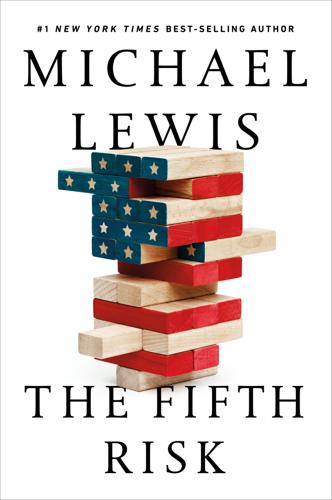
The Fifth Risk
by
Michael Lewis
Published 1 Oct 2018
Most of the answers we have gotten have not come from government. They’ve come from the broad American public who has access to the data.” The opioid crisis was a case in point. The data scientists in the Department of Health and Human Services had opened up the Medicaid and Medicare data, which held information about prescription drugs. Journalists at ProPublica had combed through it and discovered odd concentrations of opioid prescriptions. “We would never have figured out that there was an opioid crisis without the data,” said DJ. The big pools of raw facts accumulated by the federal government are windows into American life.
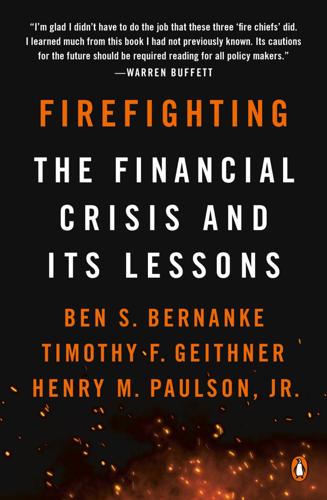
Firefighting
by
Ben S. Bernanke
,
Timothy F. Geithner
and
Henry M. Paulson, Jr.
Published 16 Apr 2019
It will take a long period of less profligate policy choices and benign economic conditions to restore America’s macroeconomic firepower to levels that could help end another emergency. Right now, even a modest recession could leave Washington without much fiscal leeway to respond to a financial crisis, or for that matter to upgrade infrastructure, tackle the opioid epidemic, address climate change, stabilize Social Security, or provide permanent tax relief for hardworking families. America was grappling with rising income inequality, middle-class insecurity, and other economic challenges well before the crisis of 2008, but the crisis made them worse, and unsustainable budget deficits could hobble our ability to deal with them.
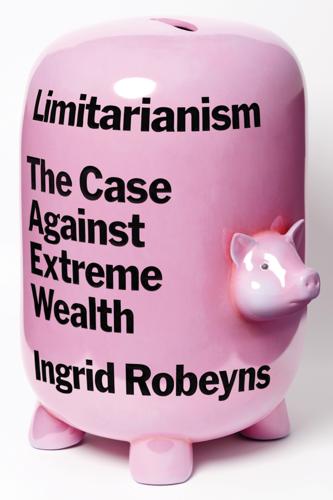
Limitarianism: The Case Against Extreme Wealth
by
Ingrid Robeyns
Published 16 Jan 2024
By 2015, the annual sales of OxyContin came close to $3 billion, while Forbes estimated the Sackler family’s wealth to be at $14 billion.18 The Sacklers became active in philanthropy, in particular giving to major art museums in the UK and USA. Yet with the unfolding of the opioid crisis, which involved several pharmaceutical companies and saw an estimated 500,000 deaths in the US, the Sackler family and Purdue Pharma increasingly came under fire. By 2020, all fifty states had filed lawsuits against Purdue and Sackler family members for their role in the opioid crisis, and Purdue Pharma filed for bankruptcy. In October 2020, Purdue Pharma pleaded guilty to criminal charges concerning the misleading marketing of OxyContin.
…
See equality inflation 28, 34 inheritance 7, 81–82, 121–5, 133, 134, 139, 160, 174, 191, 193, 201, 226–7 tax 8, 68, 82, 121–5, 191, 226–7 Inside Climate News 98 Institute of Economic Affairs 40 Intergovernmental Panel on Climate Change (IPCC) 97, 106 Internal Revenue Service (IRS) 62 International Consortium of Investigative Journalists (ICIJ) 63, 64, 180 International Labour Organization (ILO) 58 International Monetary Fund (IMF) 39 Jacobson, Mark 113 Jong, David de: Nazi Billionaires: The Dark History of Germany’s Wealthiest Dynasties 44 judiciary 52, 76, 94, 199, 219 Kerala, India 21 kerosene 102 Keynes, John Maynard 33 Kiribati 102, 106 kleptocracy 47–52, 70, 76 Koch, Charles and David 89–90 Koch Industries 90 labor Global South and 153, 154 human capital and 216 manual labor, demand for 32 market discrimination 125 platform economy and 210 rights 23, 57, 166 taxing 69, 226 unions see unions wages/pay inequalities see wages Lakner, Christoph 21 Lega 50–51 liberal democracies 73–4, 94, 141, 180, 219, 222 libertarianism xxvii, 55, 77, 90, 120, 169, 173 Liechtenstein 166 life expectancy 18 limitarianism basic income and see basic income class and see individual class name climate change and see climate change defined xiv democracy and see democracy direct cash transfers and see direct cash transfers dirty money and see dirty money economic systems and see individual system name equality and see equality ethical action and xvi ethical limit xix, 12, 15–6, 93, 117, 139, 182, 186 fiscal action and xvi, xvi future of 203–229 inheritance and see inheritance limitarian ethos xvi, 186 markets and see markets philanthropy and see philanthropy political limit xix, 15–6, 25, 116, 126, 161, 228 poverty and see poverty regulative ideal xiv, 214 riches line and see riches line tax and see tax structural action xv super-rich and see super-rich wages see wages literacy 18, 21 living wage 142, 160, 223 lobbying 56, 70, 84–5, 166, 167, 178, 203 Loblaw 58 London 9 homelessness in 143 living standards in 10 real-estate prices 13 refugees in 79 study into riches line in 11–2, 15, 41, 200 lower-middle class 5, 10, 25, 111 luck 14, 75, 82, 122, 129–130, 131, 139, 148, 155, 161, 174, 191, 200, 201, 212, 217 Lutheran Church 149 Machin, Dean 95 Madoff, Bernie 196–7 Malleson, Tom: Against Inequality 64, 162 Malm, Andreas 115–6 Malta 9, 78, 79, 80 Mangue, Teodoro Nguema Obiang 47–8 Marcos, Imelda 48–9 markets xii abolition of 208 big government and 169 climate change and 177 constraints on xix failures, uncorrected 134–5, 145 ideologies see individual ideology name non-market economy 213–4 regulation 209, 211, 213 rent-seeking and 128–9 as social institution 118–22 Marshall Islands 106 maternal mortality rates 18 Mathisen, Ruben 83 Mayer, Jane 88–9, 89–90 Mazzucato, Mariana Mission Economy 159 The Entrepreneurial State 137, 159 Mbappé, Kylian 126 media outlets, super-rich acquire 52, 86–9 meritocracy 141 Messi, Lionel 64 middle class climate change and 100, 108, 110, 111, 114–5, 143 definition of 10–11, 29 energy prices and 96 global inequalities and 93–4 income tax and 185–6 inequality and xv, xxv–xxvi, 2, 3 inheritance cap and 227–8 savings and 4 “self-made” super-rich and 5, 6 trickle-down effect and 38 wages and 189 wealth-defense industry and 70 wealth of 25, 45 win-win narrative and 21, 22 working class and 217–8 migration 23, 79, 94, 127, 150, 155 Milanovic, Branko 21 military infrastructure 172 Mill, John Stuart 146 Millionaires for Humanity 6 miners strike, Britain (1984) 33 Minimum Income Standard 10 minimum wage xiv, 160, 174, 176, 211, 224 mixed economy 33–4, 209, 210–211 Monbiot, George 98, 232; Regenesis 108 “moonshot” strategies 114, 159 morality 106, 148 climate change and 103–4, 106, 110, 115–6 democracy and 72, 75, 81 dirty money and see dirty money ethical limit see ethical limit full determinism and 131 inheritance and 122, 125, 134, 226 philanthropy and 165–6, 168, 173, 176–7, 181, 184, 185, 186 riches line and 15 wealth inequality and xiii, xiv, xvii, xxiv, xxvi, 15, 16, 24, 31, 34, 36, 118, 120, 122, 125, 131, 134, 135–6, 138, 148, 161, 187, 188, 193, 194, 196, 197–8, 199, 212, 223–4 mortgage 11, 37, 61, 121, 227 Mossack Fonseca 63–4 Murdoch, Rupert 86–9 Murphy, Liam 120 Musk, Elon xi, 9, 181, 199, 212–3 Nagel, Thomas 120 narcissism 174 national parks 210–11 national public service 218–9 natural lottery 130 Nazi atrocities 43–5 Nembwaya, Frida 151 neoclassical economic theory 111–2 neoliberalism xxv, 38, 38–9, 54–5, 187 atomized individuals and 144–5, 200 climate change and 114 consumer and 191, 202 democracy and 90, 94 deserving poor and 151 dismantling 215–8 distrust of government and 172–3 entrepreneurs and 159 “greed is good” mantra 162 philanthropy and 165–6, 171, 172, 179–180 poverty in affluent nations and 156 progressive parties and 190 “self-made” super rich and 143 spread of 34, 191 tax rates and 146, 221 welfare state and 171 network effects 129 News of the World 87 New York Times 91, 198 Nielsen, Lasse xxii non-financial incentives 162–3 Norton, Michael 204 Obama, Barack xx, 88, 90 Obermayer, Bastian 63–4 Obiang, Theodore 47, 47 obliviousness 174–5 Occupy movement xii, 9 oil 47, 83, 96, 98, 103, 211 oligarchy 9, 10, 73, 78, 79 O’Neill, Jessie: The Golden Ghetto 194–5 opioid crisis 53–4 Oportunidades (Opportunities) 152 Optimist, The 18 Orbán, Victor 73 Organization of Economic Cooperation and Development (OECD) 36, 155, 225–6 Ortega, Amancio 135–6 Osnos, Evan 89 Otele, Olivette 46–7 Otjivero, Namibia 149–52, 178, 226–7 Our World in Data 18–19 Oxfam report on inequality 3, 17 OxyContin 53–4 Page, Benjamin 83 Page, Larry 137 Panama Papers 63–4, 180 Paris Climate Agreement (2015) 104 Patagonia xxiii, 180 Patriotic Millionaires 6, 12, 69, 169, 172, 188 Payne, Erica 12; Tax the Rich!

Enlightenment Now: The Case for Reason, Science, Humanism, and Progress
by
Steven Pinker
Published 13 Feb 2018
Keisling, “Why We Need to Take the ‘Fire’ out of ‘Fire Department,’” Governing, July 1, 2015. 53. Most poisonings are from drugs or alcohol: National Safety Council 2016, pp. 160–61. 54. Opioid epidemic: National Safety Council, “Prescription Drug Abuse Epidemic; Painkillers Driving Addiction,” 2016, http://www.nsc.org/learn/NSC-Initiatives/Pages/prescription-painkiller-epidemic.aspx. 55. Opioid epidemic and its treatment: Satel 2017. 56. Opioid overdoses perhaps peaking: Hedegaard, Chen, & Warner 2015. 57. Age and cohort effects in drug overdoses: National Safety Council 2016; see Kolosh 2014 for graphs. 58.
…
Overdoses of both the legal and illegal opioids have become a major menace, killing more than 40,000 a year and lifting “poison” into the largest category of accidental death, exceeding even traffic accidents.54 Drug overdoses clearly are a different kind of phenomenon from car crashes, falls, fires, drownings, and gassings. People don’t get addicted to carbon monoxide, or crave taller and taller ladders, so the kinds of mechanical safeguards that worked so well for environmental hazards will not be enough to end the opioid epidemic. Politicians and public health officials are coming to grips with the enormity of the problem, and countermeasures are being implemented: monitoring prescriptions, encouraging the use of safer analgesics, shaming or punishing pharma companies that recklessly promote the drugs, making the antidote naloxone more available, and treating addicts with opiate antagonists and cognitive behavior therapy.55 A sign that the measures might be effective is that the number of overdoses of prescription opioids (though not of illicit heroin and fentanyl) peaked in 2010 and may be starting to come down.56 Also noteworthy is that opioid overdoses are largely an epidemic of the druggy Baby Boomer cohort reaching middle age.
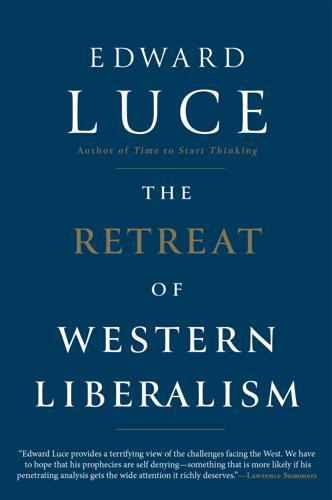
The Retreat of Western Liberalism
by
Edward Luce
Published 20 Apr 2017
In the last decade, America’s share of people in full-time jobs has dropped to European levels, which used to be written off as a sclerotic consequence of the continent’s over-regulated labour markets. Now the US rate is bang on the European average. In some respects it is worse. There is now a higher share of French males in full-time jobs than Americans – a statistic that reflects poorly on America, rather than well on France.19 America’s opioid epidemic is another warning light. Émile Durkheim, the father of modern sociology, said that when societies hit a civilisational break the suicide rate soars. Deaths from drug overdoses have tripled since 2000: America’s opioid-heroin epidemic now rivals HIV-Aids at its peak. Some of the deaths are accidental.
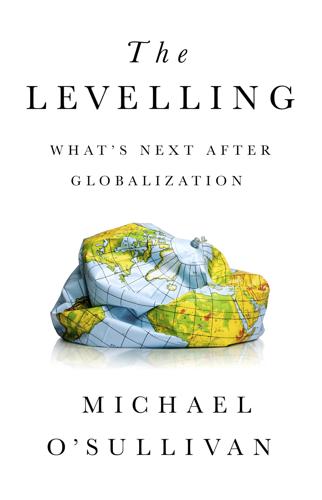
The Levelling: What’s Next After Globalization
by
Michael O’sullivan
Published 28 May 2019
Janet Currie, also at Princeton University, has, together with other researchers, shown that public policy can make a difference to health- and mortality-related inequalities.28 Effectively, an American from a disadvantaged background would be healthier if he or she moved to France at birth (or before!). In coming years health-care inequality in the United States may get worse. One particularly troubling development is the opioid crisis, which is claiming tens of thousands of lives and is estimated by the Council of Economic Advisers to have cost 3 percent of US GDP in 2015 alone.29 Another more detailed example of health-care inequality is in dental care. Mary Otto’s book Teeth shows the startling differences in dental health across social classes and reports that they spring from differences in education, diet, and upbringing.
…
Second, and more important, Detroit was a city deprived of intangible infrastructure, and it was obvious that the elements of intangible infrastructure—such as the prospect of a university in Detroit, better schooling, more attention to both physical and mental health, reskilling of workers displaced by technology, and more apt local institutions—were exactly the factors needed to get the city thriving again. A similar example that reinforces this is the locally focused network of drug courts across the United States, which have an impressive track record of rehabilitating victims of America’s opioid crisis.38 For Katherine Chidley, the lesson of Detroit is to resist being drawn to the conference rooms of the IMF and the groupthink of policy making and to spend some time with the people who voted for her, listening to the gritty details of the economic problems they face. In recent weeks she has learned a lot.
…
Khatya Chhor, “French Students Most Affected by Social Inequality, OECD Finds,” France 24, December 14, 2016, https://www.france24.com/en/20161207-french-students-most-affected-socioeconomic-disadvantages-oecd-pisa-study. 27. Data collected at Centers for Disease Control and Prevention, Data & Statistics, https://www.cdc.gov/datastatistics/index.html. 28. Currie, Schwandt, and Thuilliez, “When Social Policy Saves Lives.” 29. Council of Economic Advisers, “The Underestimated Cost of the Opioid Crisis,” November 2017, https://www.whitehouse.gov/sites/whitehouse.gov/files/images/The%20Underestimated%20Cost%20of%20the%20Opioid%20Crisis.pdf. 30. Add Health: The National Longitudinal Study of Adolescent to Adult Health, UNC Carolina Population Center, http://www.cpc.unc.edu/projects/addhealth. 31.
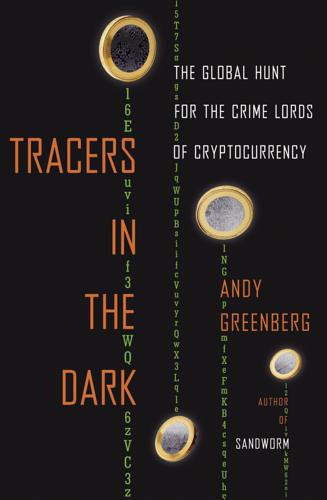
Tracers in the Dark: The Global Hunt for the Crime Lords of Cryptocurrency
by
Andy Greenberg
Published 15 Nov 2022
GO TO NOTE REFERENCE IN TEXT One RTP official named Thitisan Utthanaphon: Jonathan Head, “Joe Ferrari: The High-Rolling Life of Thailand’s Controversial Ex–Police Chief,” BBC, Sept. 6, 2021, bbc.com. GO TO NOTE REFERENCE IN TEXT highest “alfresco” dining in the world: Sirocco website, lebua.com. GO TO NOTE REFERENCE IN TEXT The American opioid crisis: Bureau of International Narcotics and Law Enforcement Affairs, “Addressing the Opioid Crisis,” U.S. State Department, state.gov. GO TO NOTE REFERENCE IN TEXT CHAPTER 28: TUNAFISH “No level of blockchain analysis”: Forfeiture Complaint, United States of America v. Alexandre Cazes, Justice Department, July 19, 2017, justice.gov.
…
* * * · · · Jen Sanchez was no more experienced in dark web investigations than the Thais; she had never used Tor, never visited the Silk Road. But as she began to get a sense of the full extent of the massive commerce in hard drugs AlphaBay now facilitated on a daily basis, she became incensed. The American opioid crisis was, by that time, in full swing; forty-two thousand Americans had died of opiate overdoses in 2016, more than in any year on record. That surge in fatalities was due in part to an influx of fentanyl, an opium derivative as much as a hundred times stronger than morphine. And here this twenty-five-year-old French Canadian was running a massive open-air heroin and fentanyl bazaar in public view?
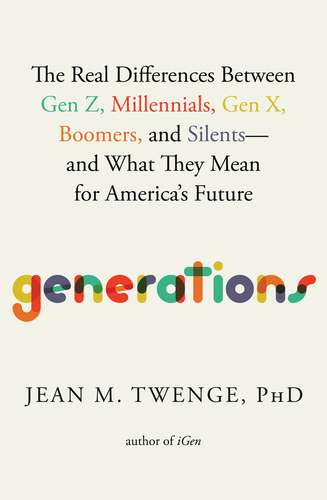
Generations: The Real Differences Between Gen Z, Millennials, Gen X, Boomers, and Silents—and What They Mean for America's Future
by
Jean M. Twenge
Published 25 Apr 2023
If the cause was anxiety over school shootings, the increases would have begun in the late 1990s and accelerated in the mid-2000s, when several high-profile school shootings occurred, but instead depression was steady during this time and did not rise until after 2012 (see Figure 6.34 on depressive symptoms). If the cause were worries about the environment, depression would have gone up starting in the early 1990s, when attention to that issue was at all-time highs (see the Gen X chapter), but it did not. The rise of the opioid epidemic fits based on timing, but it primarily impacted older people, not teens, and only in some areas of the U.S., while the rise in depression appeared across all regions. Negative feelings around Trump’s presidency also fails the timing test, as the rise in depression begins four years before he was elected (though this could explain some of the continuing rise after 2017).
…
Virginia, 40, 42 Lukianoff, Greg, 218, 385 Lyon, Phyllis, 215 M Mahaffey, Shar’Ron, 119 Maher, Bill, 360 Mandel, Lily, 437, 438 M&M’s, 509–10 Manilow, Barry, 48 Mannheim, Karl, 5 Manning, Jason, 430 marijuana, 64–65, 96–101, 100, 313–14, 313, 374 marriage, 13, 90, 137, 237, 279, 279, 280, 376, 376, 461 age of, 5, 50, 51, 52, 166, 167, 278, 278, 288, 290 Boomers and, 52, 55, 94, 96 delaying, 278–80 depression and, 339, 340 divorce and, see divorce Gen X and, 165, 166, 168–69 Gen Z and, 375–78 happiness and, 137, 339–40 interracial, 40, 41, 42 living together instead of, 167–68, 168, 290 rates of, 52, 52, 54 remarriage, 55 same-sex, 2, 6, 13, 28, 48, 121, 213–17, 216 sex before, 79, 89–91, 90, 288, 292, 295, 296 Silents and, 50–56, 69–70, 94 Martin, Del, 215 Martin, James, 298 Martin, Trayvon, 315, 388, 389, 500 Martinez, Shannon Foley, 164 Mason-Hyde, Audrey, 351 McConnell, Michael, 47–48, 214 McCrea, Nicole, 181 McWhorter, John, 207 medicine, trust in, 201–3, 202 mental health issues, 23, 67, 129–30, 129, 130, 141, 183, 194, 328, 329, 332, 333, 333, 335, 335, 461 anxiety, 70, 71, 393, 403, 405, 412, 447–50, 447, 448, 460–61, 460, 473, 508 Boomers and, 127–38, 144, 145, 193–95, 328–29 college education and, 143–44, 144, 334 COVID-19 pandemic and, 446–50, 459–61 depression, see depression in Gen X, 193–95 in Gen Z, 392–416, 478 in girls, 414–16 Greatests and, 67, 68 in liberals, 438–39 Millennials and, 324–42 in Norway, Sweden, and the Netherlands, 404–5, 406 PTSD, 68–69 self-harm, 398, 398, 401, 403, 415, 418, 459 sex and, 371 Silents and, 67–71, 129–31, 144 suicide, see suicide work and, 472–73 Merola, Julia, 387 #MeToo movement, 118, 428 Miami Herald, 111 middle class, 12, 141, 184 Millennial Makeover (Winograd and Hais), 302 Millennials, 2, 231–344 Black, 270–71, 298 children and, 233, 260, 264, 273, 281–88, 476–77 college loan debt of, 265, 273–75, 333 as digital natives, 232, 254–56 education of, 256–59, 271–72 expectations of, 275–76, 334–36 famous, 235–36 Generation Y label for, 247, 345 Hispanic, 270–71 home ownership by, 265–66, 275, 505–6 housing costs and, 268–69 iGen label for, 2, 345 income of, 140, 259–77, 333–34, 456 individualism of, 301, 312–13, 339 mental health of, 324–42 narcissism in, 248–54 “OK, Boomer” insult of, 3, 23, 29, 80, 260, 311–12, 515 perceptions of poverty among, 140, 267–77, 333–34 political involvement of, 232, 302–14 political polarization and, 336–39 popular first names of, 234 population in 2020, 234 racial consciousness in, 315–24 relationship commitments and, 278–80 religion and, 295–302, 339–40 self-confidence in, 231–32, 236–48 sexual activity and, 288–95 slow-life strategy and, 233, 266, 278, 284, 285, 290, 375 socializing of, 340–42 work and, 247, 467–69 Xennials, 24, 150 Zoomers label for, 2, 345 Millennials Rising (Howe and Strauss), 295, 302 misinformation, 496, 497 Mitchell, George, 62 Moll, Heather, 13 Monitoring the Future, 439 Moore, Michael, 140–41 movies, 185, 189 MTV, 208 murders, 186–88, 187, 188, 418 Murphy, Dannie Lynn, 480–81 Murrar, Sohad, 501 Murray, Patty, 118 Murray, Stephanie, 481 music, 184–86, 208 digital, 254–55 N Napster, 155, 254–55 narcissism, 175, 243, 248–54, 326 Narcissistic Personality Inventory (NPI), 250, 252, 253, 253 National Assessment of Education Progress (NAEP), 245 National Health Interview Survey, 448, 459–60 National Organization for Women (NOW), 42, 109 National Survey on Drug Use and Health, 374, 396 NAXALT fallacy, 24 negative filtering, 424 negativity, 422, 437, 438 pessimism, 418–24, 420, 450 on social media, 495–97 Nelson, Rob, 211 New England Journal of Medicine, 91 New Rules (Yankelovich), 172 news media, 423, 488 trust in, 200–201, 201 Newsom, Gavin, 214 New York Post, 341 New York Times, 42, 109, 111, 113–14, 169, 177, 186, 218, 220, 241, 343, 463, 482 New York University (NYU), 500, 501 Nike, 511–12 9/11, see September 11 terrorist attacks Nine Ladies (Moll), 13 Nixon, Richard, 54 nonbinary people, 3, 349, 351, 352, 353, 354, 355, 356, 357, 362, 365, 367, 474, 475, 476, 486 North Sentinel Island, 1, 4, 6 NPR, 435 nuclear war, 5, 150, 483 O Obama, Barack, 99, 100, 102, 107, 120, 122, 205, 309, 332, 336, 435, 441, 485, 498–99 Obergefell, Jim, 213–14 Obergefell v. Hodges, 214, 215 Ocasio-Cortez, Alexandria (AOC), 256, 275, 306, 307 Occupy Wall Street, 228, 229, 256 O’Connor, Sandra Day, 45–46 Office Space, 469 Ohanian, Alexis, Sr., 452 Ohanian, Alexis Olympia, Jr., 452 opioid epidemic, 134, 330, 403 O’Rourke, P. J., 78 Ortiz, Alejandro Agustin, 383 Osaka, Naomi, 392 Ossoff, Jon, 306, 307 overweight and obesity, 416, 417, 418, 458–59, 458 P Page, Elliot, 358, 362 Panel Study of Income Dynamics, 265, 268 Parkland shooting, 435–36 patriotism, 19, 65, 422 Patterson, Bruce Woods, 72 Pelosi, Nancy, 53 Pennebaker, James, 238 People, 84 People for Equality, Acceptance, Cooperation, & Empathy (PEACE), 437 pessimism, 418–24, 420, 450 Peters, Lucia, 325 Petersen, Anne Helen, 334, 341 pets, 482, 510 Pew Research Center, 261, 276, 301, 312, 321, 346, 401, 435, 438, 477 Philadelphia, 281 phrases in books, see words and phrases in American books phubbing, 293 Pinder, Duwain, 500 Poitier, Sidney, 41–42 Polars, 2, 451–61 Alpha label for, 2, 451 childhood injuries and, 454–55, 459 COVID-19 pandemic and, 451, 452, 455, 457–61 famous, 453–54 name of, 451 multiracial people in, 452 popular first names of, 453 population in 2020, 453 screen media and, 456–59 police, attitudes toward, 389–90, 391 political ideologies age and, 62–63, 124–27, 308, 310, 484–87 of Boomers, 124–27 businesses and, 510–12, 511 education level and, 434, 491–92 free speech and, 379, 382, 383, 384 individualism and collectivism and, 11, 84 party affiliations and, 65–66 religion and, 504 social media use and, 444, 444 transgender identification and, 360, 361 unhappiness and life dissatisfaction and, 439, 440, 441 workplace and, 470–72 see also conservatives; liberals political involvement, 303, 303, 469 Boomers and, 119–20 Gen X and, 208–12 Gen Z and, 435–38 high school seniors and, 120, 121 Millennials and, 232, 302–14 voter turnout, 120, 208–12, 209, 210, 225, 304–5, 304, 436–38, 436, 486 political leadership, 305–6 Blacks and, 102–3, 104, 107 Boomers and, 120–23, 140, 223–24 Gen X and, 222–25 Gen Z and, 435 governors, 60, 60, 122, 122, 224, 225, 305 senators, 60, 61, 122–23, 123, 223, 223, 224, 305, 306 Silents and, 59–62, 122 U.S. representatives, 60, 123, 223–24, 224, 305–6, 305, 430 women and, 111–12, 112, 118 political parties college education and, 311 ideologies and, 65–66 progressive views and, 487–90, 488 see also Democrats; Republicans political polarization, 30, 229, 308–11, 337, 346, 437, 451, 471, 491–96 COVID-19 pandemic and, 493–94 Gen Z and, 430–35 Millennials and, 336–39 pornography, 293, 369, 371 positives, discounting, 424 poverty, 105, 105, 264, 264, 455, 456 Blacks and, 105–6, 105 Millennials and, 140, 267–77 presidential elections of 2016, 138, 141, 143, 310, 332, 432, 437 of 2020, 70, 432, 436, 493 pregnancy abortion and, 91, 92, 231, 286, 313, 313, 314, 314, 437, 480 birth control and, 79, 92, 231, 286, 480 reproductive technology and, 13, 91, 480 unmarried, 90–91 press, trust in, 200–201, 201 Pride and Prejudice (Austen), 13 Problem with Everything, The (Daum), 165 Program for International Student Assessment, 407 pronouns, 350, 353–54, 361, 362, 475–76 Prozac Nation (Wurtzel), 160, 192 Psychology Today, 137 PTSD (post-traumatic stress disorder), 68–69 Purdy, Sam, 465–66 Q Quindlen, Anna, 113 R race, see Blacks rap and hip-hop, 185–86, 208, 209 Raspberry, William, 186 Reagan, Ronald, 200, 220, 221, 432, 485, 490 real estate, see housing Recession, Great, see Great Recession recycling programs, 212 religion, 297, 298, 300, 502, 503 free speech and, 381, 382 future of, 502–4 Millennials and, 295–302 reminiscence bump, 78 Reno, Janet, 114 reproductive technology, 13, 91, 480 Republicans, 11, 65, 66, 66, 216, 221, 221, 222, 305, 308, 311, 312, 484–87, 491 Boomer, 124–27 Gen X, 220–21 Millennial, 307 police as viewed by, 390, 391 progressive views among, 487–90, 488 racial issues as viewed by, 318–20, 318, 319, 320, 390–92, 391, 488, 489 Trump and, 307, 307, 431, 431 retirement, 482 Rhetoric for Radicals (Del Gandio), 437 Robertson, Derek, 306 Rodger, Elliot, 290 Rodrigo, Olivia, 396 Rodriguez, Polly, 471 Roe v.

Too Much and Never Enough: How My Family Created the World's Most Dangerous Man
by
Mary L. Trump
Published 13 Jul 2020
We talked about how his reputation as a faded reality star and failed businessman would doom his run. “Does anybody even believe the bullshit that he’s a self-made man? What has he even accomplished on his own?” I asked. “Well,” Maryanne said, as dry as the Sahara, “he has had five bankruptcies.” When Donald started addressing the opioid crisis and using my father’s history with alcoholism to burnish his anti-addiction bona fides to seem more sympathetic, both of us were angry. “He’s using your father’s memory for political purposes,” Maryanne said, “and that’s a sin, especially since Freddy should have been the star of the family.” We thought the blatant racism on display during Donald’s announcement speech would be a deal breaker, but we were disabused of that idea when Jerry Falwell, Jr., and other white evangelicals started endorsing him.
…
Campbell Funeral Chapel, 165–66 Frankenstein (Shelley), 14 Frontline, 185 Gallagher, Eddie, 201 Gargiulo’s, 100 Germany, 28–29, 159 Giuliani, Rudolph, 166 Glass House, 149 Gotti, John, 101 Graff, Rhona, 14–15, 145, 147 Grand Hyatt New York, 105, 114–15, 133, 135, 136, 138, 141, 196 Grau, Elizabeth Trump, 1, 2, 9, 45, 50–51, 60, 84, 95, 96, 113, 161, 173, 177, 182–83 childhood of, 26, 28, 32, 33 deprivation of, 82–83 and Donald’s attempt to control Fred’s estate, 143–44 family finances and, 190, 192–93 father’s death and, 164 at father’s funeral, 166 father’s will and, 170, 173–76 Freddy’s death and, 121–23, 125 mother’s health problems and, 24 and sale of father’s estate, 192–93, 196 watch gift and, 156–57 Grau, James, 2 Great Depression, 35 Guccione, Bob, 109–10 Harder, Charles J., 190 Harrah’s, 134 health care, 15 Highlander, 57, 67, 76–77, 85, 86, 169, 189 Hofstra Law School, 94 Hopper, Hedda, 61 Hospital for Special Surgery, 132 House, the, 21, 27, 28, 33–34, 36, 41, 43, 44, 51, 66, 71, 74, 94–97, 127, 157, 158, 161, 162, 167, 175, 181, 195, 198, 202 basement of, 96–97 Christmas at, 106, 108–11 Freddy’s stay in attic of, 93–94 library of, 94–95 Mary, Fritz, and David at, as children, 95–96 wooden Indian statues in, 96 Hughes, Howard, 61 immigration, 30 Inside Edition, 185, 198 Jamaica Estates, 33, 34, 54, 83, 95 Jamaica Hospital, 21, 77, 121, 124 Jews, 51 Johanna (girlfriend of Freddy Trump), 104, 105 John, Elton, 164 Johnson, Philip, 149 Justice Department, 90, 100–101 Kelly, John, 108 Kew-Forest School, 22, 49, 116–17 Khan family, 10 Kid Rock, 8 Kim Jong-un, 101, 189, 200 King, Martin Luther, Jr., 210 Kovaleski, Serge, 9 Kushner, Charles, 181–82 Kushner, Jared, 4, 6, 7, 181–83 Laurino, Lou, 174–76 Le Club, 34, 100, 138 LeFrak, Sam, 166 Long Island Jewish Medical Center, 163, 176 Luerssen, Amy, 99–100 Madonna, 147 Mafia (Mob), 35, 133 Manhattan Psychiatric Center, 12 Maples, Marla, 132, 137, 150, 151, 162, 184 Mar-a-Lago, 134, 137, 148–51, 153, 154, 160 Marble Collegiate Church, 37, 111, 166, 177 Marblehead, Mass., 61–63, 65–67, 76 McCarthy, Joseph, 100 McCarthy, Kevin, 12 McConnell, Mitch, 12, 200 McCray, Antron, 204 media, 11, 114, 133–34, 138, 141, 195–98, 200, 203 Meese, Ed, 134 Metropolitan Museum of Art, 133, 184 Mexican border, 195, 201, 207 Midland Associates, 98, 169–71 mirroring, 23 Mitchell-Lama Housing Program, 89 Mitnick, Jack, 143, 193 Mob, the, 35, 133 Montauk Airport, 73 Mother Jones, 185 Mount Holyoke College, 50 Mulvaney, Mick, 108 Murdoch, Rupert, 101 Muslim travel ban, 15 National Guard, 53, 54–55, 65, 84 New York City, 208 economy in 1970s, 89 Fred Trump’s Manhattan aspirations, 89, 102–3 press in, 114, 131, 141, 195, 197 see also Brooklyn New York Military Academy (NYMA), 47, 49–50, 52–53, 56, 63, 64, 71, 74–75, 95, 96, 97, 132 New York Post, 149, 198 New York Times, 9, 107, 165, 176, 204 exposé on Trump family finances in, 185–91, 193–94 Nolan, James, 72 Nugent, Ted, 8 Obama administration, 209 Omni, 109–10 opioid crisis, 9 Palin, Sarah, 8 parenting and child development, 23 attachment in, 23, 25 Parsons, Louella, 61 Pataki, George, 166 Peale, Norman Vincent, 37–38, 40–41, 42, 92 Pence, Mike, 3, 4 Penthouse, 110 Peter Luger Steak House, 161–62 Piedmont Airlines, 67 Pierce, Charles P., 14 pilots, 58, 59, 61 Freddy’s career, 52, 53, 56, 57–59, 60–68, 78, 84, 88 Politico, 189 Pompeo, Mike, 12 Power of Positive Thinking, The (Peale), 37 presidential election of 2016, 14–15, 204 Putin, Vladimir, 8, 101, 200 Queens Hospital Center, 121 racism, 9, 15, 200, 204 housing discrimination lawsuit, 90, 100–101 Random House, 147, 151–52 Reagan, Ronald, 134 Republican National Convention, 10 Republican Party, 11–12, 109, 200, 203 Reserve Officer Training Corps (ROTC), 51–52, 53, 66 Richardson, Kevin, 204 Rivers, Joan, 166 Rodman, Dennis, 189 Roman Catholic Archdiocese of New York, 101 Roosevelt, Franklin D., 32 Russia, 8 Ryan, Paul, 3 Salaam, Yusef, 204 Salvation Army, 121 Santana, Raymond, 204 Schron, Ruby, 192 Schumer, Chuck, 3 Schwartz, Tony, 146 Serwer, Adam, 200 Shapiro, Joe, 72 Shelley, Mary Wollstonecraft, 14 Shore Haven, 25, 28, 34, 54, 171 Sigma Alpha Mu, 51, 52, 53 Slatington Flying Club, 51 Sly Fox Inn, 158 sociopathy, 24, 26, 43 Spanish flu epidemic, 29, 30, 36 Steeplechase Park, 67–68, 72–76, 78–79, 87, 88, 89, 102, 141 Sunnyside Towers, 94, 97, 98, 103, 169 Sunshine, Louise, 114 Surviving at the Top (Trump), 132, 136, 146 Swifton Gardens, 91 Taj Mahal, 132, 135, 136, 149 Tosti, Matthew, 85–86, 104–5, 127 Trans World Airlines (TWA), 58, 59, 61, 65–68, 78, 84, 88 Trump, Barron, 184 Trump, Blaine, 110, 122, 148, 162, 164 Trump, Donald: Access Hollywood tape of, 10 The Apprentice, 11, 182, 196 The Art of the Comeback, 145–49, 151–52, 162–63 The Art of the Deal, 94–95, 146 authoritarian rulers and, 101 bankruptcies of, 9, 11, 132, 136, 143, 197 banks and investors and, 11, 124, 132, 134–38, 140, 142, 148, 184, 196–97 baseball playing of, 97 birth of, 33 Brooklyn as viewed by, 89–90 casinos of, 35, 132, 134–36, 142, 151, 201 The Celebrity Apprentice, 166 chiefs of staff of, 108 childhood of, 7, 11, 24–28, 42–46, 47–51, 101–2, 198, 202 childhood home of, see House, the COVID-19 crisis and, 13–14, 201–2, 204, 207–10 cruelty of, 15, 45, 75, 200, 201, 207 debts of, 134–36 early forays into Manhattan market, 102–3 ego of, 17, 136, 138, 198, 201 elected president, 14–15, 204 empathy lacking in, 209–10 extravagant lifestyle and spending of, 98, 107, 136, 137, 142, 191 father and, 11, 25–27, 42, 43, 47–50, 52–53, 63, 72, 83–84, 100, 102–3, 108, 114, 115, 132, 133–35, 137–38, 140–42, 144, 157–58, 188, 195, 202, 203, 204, 211 father’s estate sold by, 192–93, 196 father’s loans to, 107, 190, 197 father’s promotion to president of Trump Management, 88–90, 200 father’s role in real estate ventures of, 84, 91, 102–3, 107, 133, 134, 140–42, 191, 196–97 father’s will alteration attempted by, 143–44, 190, 193 father treated with contempt by, 157 on fishing outing, 64 at Fordham University, 71, 72, 74 Freddy and, 7, 45–46, 47, 48, 52, 63–65, 72, 75, 84–85, 98–99, 102, 201, 209 Freddy’s death and, 121–25, 127 gift-giving of, 106, 109 golf club of, 115, 181 golfing of, 154 housing discrimination lawsuit against, 90, 100–101 immigration and, 30 impeachment of, 205 income of, 91, 107, 190 Ivana’s divorce from, 137, 138 Ivana’s marriage to, 98, 111 Ivana’s prenuptial agreement with, 107 knowledge claims of, 133, 202–3 Linda and, 65, 148 lying of, 11–12, 14, 15, 40, 90, 103, 141, 197, 198, 200, 203, 205 Mar-a-Lago estate of, 134, 137, 148–51, 153, 154, 160 Mary enlisted as ghostwriter for book of, 145–49, 151–52, 162–63 Mary given gifts by, 106, 109 Mary story invented by, 163 Maryanne and, 60 media and, 11, 114, 133–34, 138, 141, 195–98, 200, 203 Mexican border and, 195, 201, 207 at military academy, 47, 49–50, 52–53, 56, 63, 64, 71, 74–75, 95, 96, 97, 132 money-oriented worldview of, 15–16, 38 mother and, 24, 25, 44, 45, 48–50 mother’s mugging and, 131–32 Muslim ban of, 15 narcissism of, 12, 198 pathologies of, 11–13, 200 powerful men and, 34, 101, 200 presidential campaign of, 9–11, 203, 204 presidential campaign announced by, 8–9, 11 press briefings of, 203 racism of, 9, 15, 300, 204 real estate career of, 1, 8–9, 11, 35, 84, 90–91, 102–3, 107, 111, 114–15, 133–38, 140–43, 192, 196–99, 201 as reality television star, 8, 11, 182, 196 Robert and, 6–7, 44–45 at school, 43–44, 47, 49–50, 52–53, 56, 58, 63, 64, 71, 74–75, 95, 96, 97, 132 self-esteem of, 44 self-promotion and self-aggrandizement of, 90–91, 103, 137, 198 as shielded from reality, 13, 16, 199 “strategies” of, 17, 203–4 Surviving at the Top, 132, 136, 146 taxes and, 34 at University of Pennsylvania, 72, 74, 75, 83 White House dinner for family of, 1–8, 45 at Trump Management, 71–72, 83, 84, 88, 112, 155 as Trump Management president, 88–90, 200 Trump, Donald “Donny,” Jr., 4, 6, 7, 122, 169 Trump, Elizabeth (sister of Donald), see Grau, Elizabeth Trump Trump, Elizabeth (sister of Fred), 29, 193 Trump, Elizabeth Christ (mother of Fred), 28, 29, 31, 34, 41, 89, 126 E.

Doppelganger: A Trip Into the Mirror World
by
Naomi Klein
Published 11 Sep 2023
In an era when whole cities like Flint, Michigan, have had their water poisoned; when gas companies tell you that fracking is safe, never mind the earthquakes and flammable tap water; when Monsanto lobbies ceaselessly against attempts to ban its herbicide Roundup despite it having been credibly linked with cancer; and when Big Pharma peddled the drugs that set off the opioid crisis, it is entirely rational to be skeptical toward monopolistic power. Johnson & Johnson, one of the major vaccine makers, not only is caught up in the opioid lawsuits but also has been ordered to pay out billions in legal settlements in recent years over alleged harm caused by several of its prescription medications and even its ubiquitous talcum powder (found to have contained asbestos).
…
Monsanto lobbies ceaselessly … linked with cancer: Zach Boren and Arthur Neslen, “How Lobbyists for Monsanto Led a ‘Grassroots Farmers’ Movement Against an EU Glyphosate Ban,” Unearthed, October 17, 2018; “IARC Monograph on Glyphosate,” WHO International Agency for Research on Cancer; “Roundup Weedkiller ‘Probably’ Causes Cancer, Says WHO Study,” The Guardian, March 21, 2015. Johnson & Johnson: Edward Helmore, “Lawsuits, Payouts, Opioids Crisis: What Happened to Johnson & Johnson?,” The Guardian, October 18, 2019. rare cases of heart inflammation: “Myocarditis and Pericarditis After mRNA COVID-19 Vaccination,” Centers for Disease Control and Prevention, September 27, 2022, https://www.cdc.gov/coronavirus/2019-ncov/vaccines/safety/myocarditis.html.
…
Klein MSCHF MSNBC Muirhead, Russell Mulllins, Garth multiplayer gaming multiple personality disorder Murdoch, Iris Musk, Elon Muslims Mussolini, Benito MyPillow Nakba naming systems Naomi: author’s feelings about name; in Old Testament NASA Nation, The National Health Service (NHS) National Institute of Allergy and Infectious Diseases nationalism, inclusive National Security Agency Native Americans; see also Indigenous people Natural Causes (Ehrenreich) Nazi Germany; Austria annexed by; autistic people in; children as viewed in; class solidarity replaced with racial solidarity in; colonialism and; disabled people in; Gemüt concept in; health culture in; Hitler in; IBM and; lands and people conquered by; Paris’s liberation from; vaccine programs in; Volk collective in Nazi Germany, Jews in; anti-Semitic conspiracy theories and; Covid mandate analogies to; “eternal Jew” caricature and; Kristallnacht and; Nuremberg Laws and; yellow stars worn by; see also Holocaust Nazis, neo- neoliberalism Nestlé Netflix neurodiversity Neurotribes (Silberman) New Deal New Democratic Party (NDP); Avi Lewis as candidate of Newman, Kevin New Republic, The Newsmax New Statesman, The New York City New Yorker, The New York Post New York Times, The Next Revolution, The Nicholas II Nike 9/11 attacks 1984 (Orwell) NoiseCat, Julian Brave No Logo (Klein) Northern Ireland Northrup, Christiane NPR Nunes, Rodrigo Obama, Barack Obama, Michelle O’Brien, Kate Occupy Wall Street (OWS) oil Old Testament; Naomi in oligarchy One Day at a Time On Property (Walcott) Operation Shylock (Roth) opioid crisis Orbán, Viktor Organisation for Economic Co-operation and Development Origins of Totalitarianism, The (Arendt) Orwell, George O’Shea, Brian othering Ottawa Otto, Mike Ottoman Empire Our Bodies, Ourselves (Boston Women’s Health Book Collective) Outrages (Wolf) Oxford Union Paglia, Camille Pakistan Palestinians “Pandemic Is a Portal, The” (Roy) pandemics; Covid, see Covid pandemic Paradise Lost (Milton) Parasite Parks, Rosa Parler Patel, Raj patents Patreon Patriot Act patriotism pattern recognition PayPal PBS Peck, Raoul pedophilia Peele, Jordan Pegasus Pelosi, Nancy and Paul Pennycook, Gordon People’s Party Peters, Tom Pew Research Pfizer pharmaceutical companies; Pfizer; see also Covid vaccines; vaccines Philippines Picture of Dorian Gray, The (Wilde) Pim, Bedford Pinochet, Augusto pipikism Plandemic plutocracy Poe, Edgar Allan pogroms police murders of Black people Poor People’s Campaign populism Portnoy’s Complaint (Roth) Potter, David poverty powell, john a.

Artificial Unintelligence: How Computers Misunderstand the World
by
Meredith Broussard
Published 19 Apr 2018
Other users post emojis of pills or hypodermic needles. Trees or leaves or the phrase “cutting grass” typically signify marijuana transactions. Some of these are jokes, and some are actual horticultural payments, of course. Either way, it’s a little shocking to see the volume of transactions as the country struggles with an opioid crisis.13 Illegal drugs are popular. They’ve always been popular. Most people would argue that illegal drug use is not good, at least not for society as a whole—so when tech is being used to facilitate and distribute them, tech is being used in a way that’s counterproductive for cultural good. Yet this is the logical outcome when tech is produced according to libertarian values with a willful disregard for application.
…
FEC, 180 McIntyre, Tim, 170 McNamee, Roger, 138 Mercedes, 144 Merideth, Willie, 68 Meyer, Philip, 43 Microsoft, 25, 157 Minimum viable product (MVP), 189–190 Minsky, Margaret, 79 Minsky, Marvin, 69–75, 79–80, 81, 84, 89, 129, 132, 145, 193 MIT Artificial Intelligence Lab, 70 Mitchell, Tom M., 92 MIT Media Lab, 70, 72, 195 MIT Tech Model Railroad Club (TMRC), 69–70 Models, mathematical, 94 Monty Python, 89 Moore School of Engineering, 196–198 Morais, Betsy, 167 Mortensen, Dennis, 132 Motor vehicle traffic-related injury mortality, 137–138 Mullainathan, Sendhil, 155–156 Munro, Randall, 87 Murdoch, William, 116 Musk, Elon, 142, 143–144 Naming problem, 88–89 Natanson, Hannah, 84 National Highway Traffic Safety Association (NHTSA), 133–134 Natural resources homework, 51–52 Navy, U.S., 137 Neumann, John von, 71 Neural networks, 33 Neville-Neil, George V., 92–93 New Communalism movement, 5 Newman, Barry, 152 Newspapers, 152 New York Times, 152 NeXt cube, 5 NICAR conference, 196 Nineteenth Amendment, 78 Northpointe, 155–156 Norvig, Peter, 93, 118 Nutter, Michael, 53 NVIDIA, 140–141 Obama Administration, 147, 194 Object, 97 O’Neil, Cathy, 94 One Laptop Per Child (OLPC) initiative, 65 oN-Line System (NLS), 25 OpenBazaar, 159 Operating systems, 24–25 Opioid crisis, 158–160 O’Reilly, Tim, 81 OSX, 25 Otto, 142 Overview Project, 52 Page, Carl Victor, Sr., 72–73 Page, Larry, 72–73, 131, 151 PageRank, 72, 151–152 Palantir, 83 Panama Papers, 196 Pandas library, 97 Paperclip theory, 89–90 Papert, Seymour, 72, 73 Pasquale, Frank, 115 Pattis, Richard, 129 PayPal, 83, 159 Pearson, 53–54 Penn and Teller, 70 Pennsylvania System of School Assessment (PSSA), 52, 53–54 Pereira, Fernando, 118 Personal computer revolution, 5, 24 Philadelphia School District, 53–60, 65–66 Physicians, sexual abuse by, 42–43 PillyPod, 173 Pinker, Stephen, 90 Pinkerton, Emma, 164 Pizzafy, 165, 168–174 Policing quantitative methods to enhance, 155 racial disparities found by Stanford Open Policing Project, 43 speeding, 43 PolitiFact, 45–46 Popular vs. good, 149–152, 160 Poverty and differential pricing, 116 Prater, Vernon, 155 Predictive analytics, 33 Price discrimination, 46 Price optimization, 114–115 Privacy, right to, 68, 195 Programmers accountability for, 154 bias, 155–158 competence, developing, 169–170, 174 drug use, 158–159 ethical training, 145 income, 170–171 safety, attitudes toward, 73–74 social conventions, 74–75 Programming.
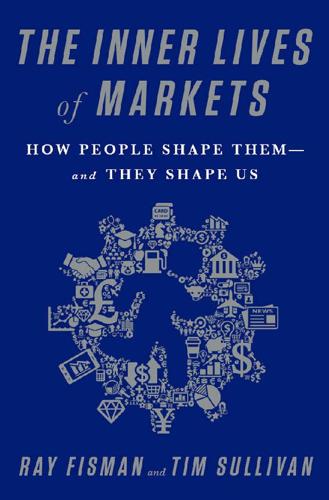
The Inner Lives of Markets: How People Shape Them—And They Shape Us
by
Tim Sullivan
Published 6 Jun 2016
INTRODUCTION TERMS OF SERVICE At 109 Lincoln Street in Rutland, Vermont, stands a dilapidated yellow clapboard building. Rutland was incorporated in the late nineteenth century, flush with money from the marble quarries just outside town. But the past few decades haven’t been kind to the city, notable these days as much for its opioid epidemic (the subject of several New York Times stories), as for the nearby mountains, which still draw leaf peepers in the fall and skiers in the winter. To one side of 109 Lincoln is an empty parking lot. Across the street stands the former Lincoln Elementary School, which now houses Rutland Area Christian School, private and interdenominational, serving pre-K through grade twelve.

Give People Money
by
Annie Lowrey
Published 10 Jul 2018
But those reductions mostly reflected the elderly and those caring for dependents stepping back—outcomes to cheer, in other words. Okay, so maybe people would continue to work. But wouldn’t people waste the money? What if they squandered it all on alcohol, drugs, and cigarettes, thus reducing its intended antipoverty effect? It sounds like something the United States, in the grip of an opioid epidemic, would worry about. The concern turns out to be cross-cultural. In Nicaragua, a senior government official worried that with funds going out from a transfer program, “husbands were waiting for wives to return in order to take the money and spend it on alcohol.” Again, there turns out to be plenty of evidence to the contrary.

The Smartphone Society
by
Nicole Aschoff
In 2018, household mortgage, student, auto, and credit card debt increased for the fifth year in a row, yet the majority of Americans don’t have enough money in the bank to cover one month of household expenses.58 Despite low official unemployment, one in five children live in families eking out an existence on an income below $25,750, which is the federal poverty line for a family of four.59 These economic divides drive a broad crisis of faith in the status quo—a legitimacy crisis that germinated in the aftermath of the 2008–10 financial crisis and its resolution skewed in favor of elites. Increasingly, American society is plagued by a widespread sense of alienation and despair evident in myriad ways: the nationwide opioid epidemic, rising rates of suicide, and historically low levels of trust in the US government. According to a study by the Pew Charitable Trust, only 18 percent of Americans say they trust the government to do what is right “just about always” (3 percent) or “most of the time” (15 percent).60 The Rand Corporation’s recent report Truth Decay found that popular distrust and wariness had spread far beyond people’s feelings about the government.
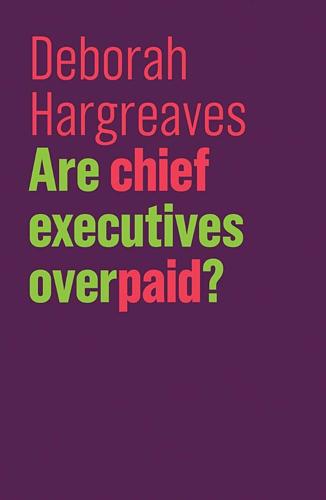
Are Chief Executives Overpaid?
by
Deborah Hargreaves
Published 29 Nov 2018
Mr Hammergren, who has been in charge since 2001 and also chairman since 2002, has received some $692 million from the company in the past 10 years, including his share stake and bonuses. His package for 2017 was $20 million which was less than the $23 million in the previous year. But shareholders – including some of America’s biggest pension funds – are concerned about the company’s role in the current opioid crisis that is gripping the country, and its financial exposure over lapses in its distribution chain. The company agreed to a settlement of $150 million with several US states for not keeping a firm enough grip on its drugs distribution. It is not clear whether Mr Hammergren will get his $20 million as the investor vote against it is only advisory.
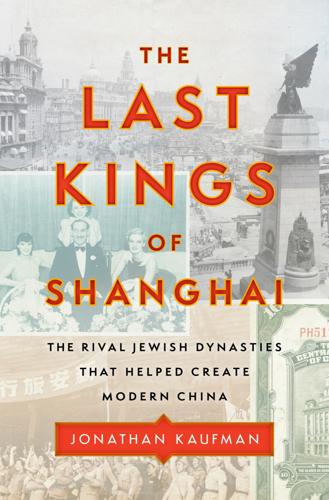
The Last Kings of Shanghai: The Rival Jewish Dynasties That Helped Create Modern China
by
Jonathan Kaufman
Published 14 Sep 2020
Even as the British pressed the emperor to let ships in to sell watches, clocks, and weapons, opium addiction had become a massive social problem. By the early nineteenth century, one out of every ten Chinese was addicted. (By contrast, about 3 percent of Americans misused or were addicted to hard drugs such as prescription opioids, cocaine, and heroin at the height of public concern over the opioid crisis and the “war on drugs” in the United States.) The Chinese official charged with eliminating the opium trade appealed directly to one of King George’s successors, Queen Victoria. “Where is your conscience?” Lin Zexu asked in an impassioned official letter. The products China exported to Great Britain—tea, silk, handicrafts—were all beneficial, he declared.
…
P., 129 Morgenthau, Robert, 185 Moses, Gerhard, 192 Muslims, 60, 98 Nanjing, 142 Nanjing Road, 251 Nanyang Cotton Mill, 233 Napoleon, 10 Nationalists, 96, 97 Nazi Germany, 145–49, 151, 158, 160, 168, 170, 171, 197, 198 Austria invaded by, 145–48, 171 French surrender to, 172 Gestapo of, 168–69, 171 Holocaust, 4, 196–97; see also Jewish refugees Japan and, 168, 171 Jewish refugees from, see Jewish refugees Kristallnacht in, 160, 164 Poland invaded by, 172, 196 Protocols of the Elders of Zion and, 151 Shanghai Jews and, 171 SS of, in Shanghai, 189–90 Nebuchadnezzar, King, 4, 5 Netanyahu, Benjamin, 289 New China News Agency, 259 New Deal, 228 New Territories, 127, 226, 236, 238–40, 246, 258, 262, 265–67, 269, 279, 283 New York, New York, 85, 121 Lower East Side, 58, 93 New Yorker, xii, 107, 130–32, 181, 294 New York Times, 97, 123 New Zealand, 159 Nixon, Richard, xx, 260, 261 North-China Herald, 49–50 North China News, 131 nuclear power, 261–62, 267–68 Daya Bay plant, 268, 276–78, 281, 284 Three Mile Island accident, 268 Observer, xii, 102–4 Ohel Leah Synagogue, 160 opioid crisis, 18 opium, 17, 18, 40–41, 45–46, 134 legalization of, 37–38, 39, 45 opium trade, 17–20, 27–28, 30, 36–41, 45–47, 99, 297 efforts to limit or ban, 41 end of, 45–46, 112 prices in, 38–39, 40 Sassoon family in, 28, 36–41, 45–47, 104, 122, 291, 297 Opium Wars, xxii, xxv, 19, 36, 37, 52, 66, 67, 137, 258, 295 Ottoman Turkish Empire, 5, 7, 15, 69 Ovadia, Lucien, 206, 214–15, 218, 247–48, 296 Palestine, 92, 150, 159, 226 Zionism and, see Zionism Palmerston, Henry John Temple, Lord, 10 Pan Guang, 278 Paris, 85 Patten, Christopher, 278–79 Patterson, J.
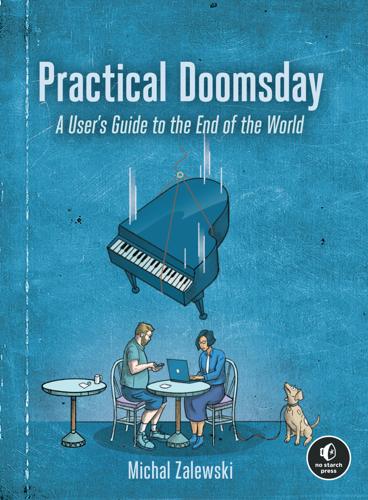
Practical Doomsday: A User's Guide to the End of the World
by
Michal Zalewski
Published 11 Jan 2022
Beth Braverman, “The 10 Most Dangerous Jobs in America,” CNBC, December 28, 2019, https://www.cnbc.com/2019/12/27/the-10-most-dangerous-jobs-in-america-according-to-bls-data.html. 10. Dennis Thompson, “More Than 1 in 3 Americans Prescribed Opioids in 2015,” CNBC, August 1, 2017, https://www.cbsnews.com/news/more-than-one-third-americans-prescribed-opioids-in-2015/. 11. “Opioid Crisis Statistics,” Department of Health and Human Services, February 12, 2021, https://www.hhs.gov/opioids/about-the-epidemic/opioid-crisis-statistics/index.html. 12. “How Opioid Addiction Occurs,” Mayo Clinic, February 16, 2018, https://www.mayoclinic.org/diseases-conditions/prescription-drug-abuse/in-depth/how-opioid-addiction-occurs/art-20360372/. 13. William M.
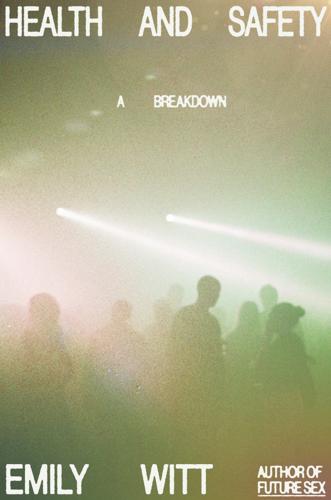
Health and Safety: A Breakdown
by
Emily Witt
Published 16 Sep 2024
And at the first mention of Hillary Clinton they screamed “Lock her up,” even though Clinton had been in the dustbin of history since 2016. In every instance Trump would pause and step back from the podium and beam. He told us that the Republicans would bring the high-paying jobs and rising wages and a booming economy, and $6 billion to fight the opioid epidemic, and the Space Force, and the travel ban. He told us that for the sake of our children we are going to fight and we are going to work and we will not bend, we will not break, we will always fight on to victory because we are America and our hearts bleed red, white, and blue and we are one people, one family, and one glorious nation under God and together we will make America wealthy again, we will make America strong again, we will make America safe again and we will…And here the crowd again knew what to say and they chanted, “Make America Great Again.”

The New Urban Crisis: How Our Cities Are Increasing Inequality, Deepening Segregation, and Failing the Middle Class?and What We Can Do About It
by
Richard Florida
Published 9 May 2016
And in San Francisco, urban and suburban homes started off at around $150 per square foot in 1997, but by 2015 urban homes were valued at almost $700 per square foot, as opposed to less than $500 per square foot in the suburbs.10 Once areas of safety and serenity, the suburbs today are being hit with rising crime rates as their economies falter and populations shift. The TV series Breaking Bad made suburban meth dens as iconic as the urban street corners where drug dealers plied their trade in The Wire. The recent opioid epidemic has deep roots in the suburbs. Furthermore, the violent crime rate—which has been declining across the United States—fell three times faster in America’s primary cities than it did in their suburbs between 1990 and 2008. Murders actually rose by 16.9 percent in the suburbs between 2001 and 2010, while falling by 16.7 percent in cities.11 And the suburbs have been the sites of many, if not most, of America’s mass shootings, from Columbine to Sandy Hook.
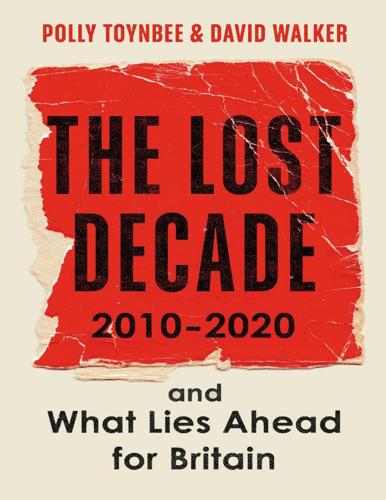
The Lost Decade: 2010–2020, and What Lies Ahead for Britain
by
Polly Toynbee
and
David Walker
Published 3 Mar 2020
Serota would find it very hard to generate a sense of shame, and the UK rich could not even be bribed: tax reliefs produced only marginal increases in giving. Besides, some money was tainted. Among the most generous donors to the arts had been the Sackler family, their name adorning the Serpentine Gallery and other good causes. However, after much litigation relating to the role of the family’s pharmaceutical companies in the US’s opioid epidemic, the Sackler name became almost as toxic as their medicine. As the climate emergency regained its hold on public and political consciousness in 2018 and 2019, Oscar-winning actor Mark Rylance spearheaded the campaign against fossil-fuel use and greenwashing by resigning from the Royal Shakespeare Company in protest at BP’s sponsorship.
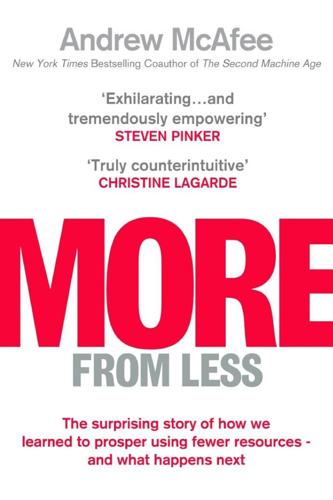
More From Less: The Surprising Story of How We Learned to Prosper Using Fewer Resources – and What Happens Next
by
Andrew McAfee
Published 30 Sep 2019
Spaulding and George Simpson (Abingdon, UK: Routledge, 2005), 346. “Unlike in Europe, where cities and towns existed long before industrialization”: Andrew Sullivan, “Americans Invented Modern Life. Now We’re Using Opioids to Escape It,” New York, Intelligencer, February 20, 2018, http://nymag.com/intelligencer/2018/02/americas-opioid-epidemic.html?gtm=bottom. “What our data show”: Case and Deaton, “Mortality and Morbidity.” gives voice to their perceptions: Arlie Russell Hochschild, Strangers in Their Own Land: Anger and Mourning on the American Right (New York: New Press, 2016), Kindle, location 139. The famous Elephant Graph, drawn by economists Branko Milanovic and Christoph Lakner: Christoph Lakner and Branko Milanovic, Global Income Distribution: From the Fall of the Berlin Wall to the Great Recession (Washington, DC: World Bank, 2013), http://documents.worldbank.org/curated/en/914431468162277879/pdf/WPS6719.pdf.
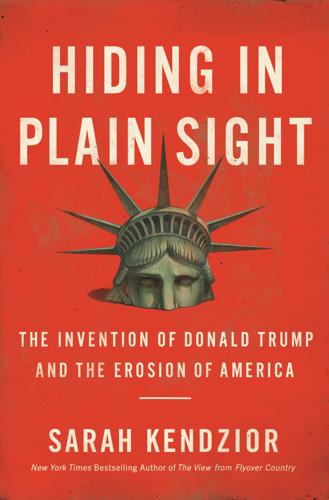
Hiding in Plain Sight: The Invention of Donald Trump and the Erosion of America
by
Sarah Kendzior
Published 6 Apr 2020
As restrictions on regulations have loosened, the casualties have soared: gun homicides rose 43 percent between 2014 and 2016, the most recent statistic available.34 When I wake up to stories of slaughter, it is with increased alarm—because the gun deaths speak to a more frightening problem, a lack of oversight that is literally murderous. It is mirrored in the opioid epidemic, which has also grabbed disproportionate hold of Missouri and has devastated communities.35 It’s the sense of having a government that seems to welcome death; a government that has abdicated even the pretense of working for its citizens or caring if they live or die. * * * I live in Missouri, a state plunged into darkness: dark money, dead bodies, disappearing information, and disputed votes.
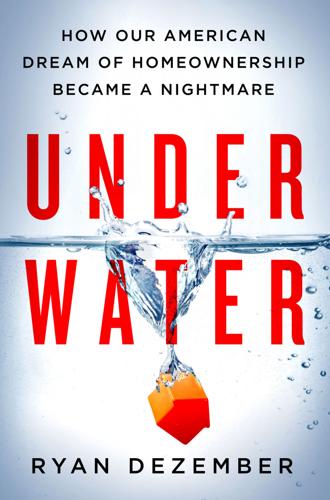
Underwater: How Our American Dream of Homeownership Became a Nightmare
by
Ryan Dezember
Published 13 Jul 2020
At its depths, more than twelve million Americans were “underwater,” meaning their homes were worth less than the balances remaining on their mortgages. Some estimates put the number north of fifteen million. The collapse pounded Alabama’s Gulf Coast, where an anything-goes building boom gave way to an economic malaise prolonged by hurricanes, the Deepwater Horizon oil spill, and the opioid epidemic. In Audubon Place, my subdivision of starter homes, close to a third of the 109 houses were foreclosed. One of them twice. Among underwater homeowners, I was fortunate. The house was modest and so was the mortgage. I was in the early stages of my career, with greater earnings potential ahead.
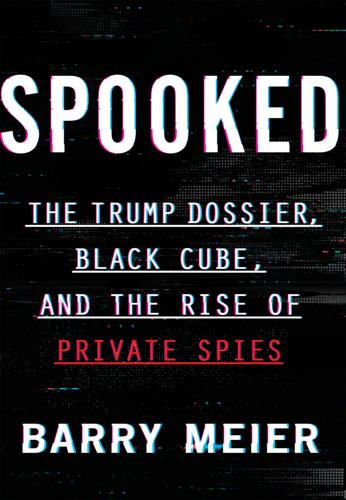
Spooked: The Trump Dossier, Black Cube, and the Rise of Private Spies
by
Barry Meier
Published 17 May 2021
Prior to joining the Times in 1989, he worked for The Wall Street Journal and New York Newsday. He is also the author of Pain Killer and Missing Man. Meier lives in New York City. Discover great authors, exclusive offers, and more at hc.com. Also by Barry Meier PAIN KILLER: AN EMPIRE OF DECEIT AND THE ORIGIN OF AMERICA’S OPIOID EPIDEMIC MISSING MAN: THE AMERICAN SPY WHO VANISHED IN IRAN Copyright SPOOKED. Copyright © 2021 by Barry Meier. All rights reserved under International and Pan-American Copyright Conventions. By payment of the required fees, you have been granted the nonexclusive, nontransferable right to access and read the text of this e-book on-screen.
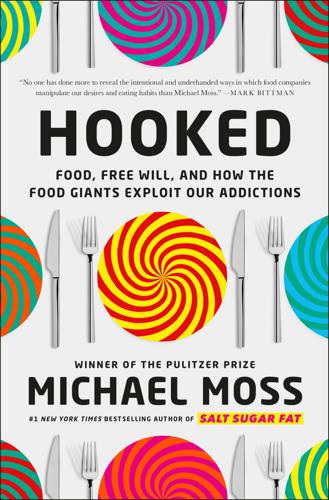
Hooked: Food, Free Will, and How the Food Giants Exploit Our Addictions
by
Michael Moss
Published 2 Mar 2021
For everyone, not just football players, the number of people taking opioids for chronic pain who end up becoming addicted averages slightly more than one in ten people, a 2015 research review indicates. More than eleven million Americans are misusing pain relievers, which gives some context for the scope of today’s opioid epidemic. On the other hand, this research is showing that the majority of people are able to use opioids as prescribed medicine without losing control, which is a compelling circumstance for thinking about drug treatment strategies. Who is this much larger group of people who can avoid addiction?
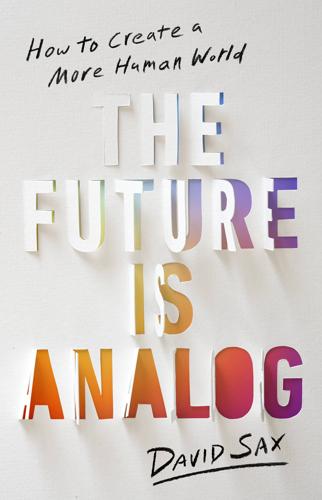
The Future Is Analog: How to Create a More Human World
by
David Sax
Published 15 Jan 2022
Lee Vinsel and Andrew Russell, professors of technology and history who cowrote the book The Innovation Delusion, told me that innovation today has become shorthand for digital as the default solution. “We treat innovation as an end in itself because it’s assumed to be good,” Vinsel said. But crack cocaine was an innovation, as was OxyContin, which led to the opioid epidemic. “Osama bin Laden was an entrepreneur, and al-Qaeda was an organizational innovation,” Russell echoed, but when it came to digital technology, the myth of innovation just got supercharged. When we focused exclusively on inventions, we missed the problems that new gadgets and ideas invariably caused.

Stolen Focus: Why You Can't Pay Attention--And How to Think Deeply Again
by
Johann Hari
Published 25 Jan 2022
This, he explained, has very worrying implications for the development of young people’s brains—particularly all the young people he sees using them so they can study longer and longer hours. “The pushing of all these amphetamines for these kids reminds me of the opioid crisis, except nobody’s talking about it,” he said. “When I was a kid, if people gave me amphetamines, sold them to children, they would go to jail. But just like the opioid crisis…nobody does anything about it. It’s a dirty little secret in our society.” Most of the scientists I interviewed in the U.S.—and I talked with a lot of the most prestigious experts on ADHD—told me that they believe prescribing stimulants is safe and provides a lot of benefits that outweigh the risks.
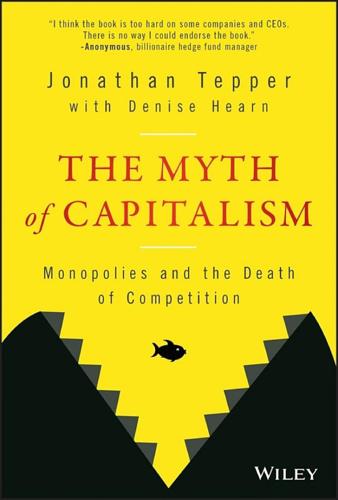
The Myth of Capitalism: Monopolies and the Death of Competition
by
Jonathan Tepper
Published 20 Nov 2018
Pharmaceutical Care Management Association, “That's What PBMs Do” (Washington, DC: PCMA, March 14, 2016). 76. http://prospect.org/article/hidden-monopolies-raise-drug-prices. 77. https://www.fiercepharma.com/special-report/big-3-distributors. 78. https://www.marketwatch.com/story/growing-share-of-big-three-drug-wholesalers-gets-attention. 79. https://www.forbes.com/sites/nathanvardi/2017/11/06/states-focus-on-incentives-of-wholesalers-and-pharmacies-in-drug-price-fixing-probe/#3dd205ba402b. 80. https://www.drugabuse.gov/related-topics/trends-statistics/overdose-death-rates. 81. https://www.dailykos.com/stories/2017/12/18/1725603/-The-Corporations-That-Created-The-Opioid-Epidemic-Continue-To-Evade-Responsibility. 82. https://www.theguardian.com/global-development/poverty-matters/2011/jun/02/abcd-food-giants-dominate-trade. 83. https://www.avclub.com/the-writers-guild-is-not-happy-about-the-disney-fox-dea-1821301494. 84. htt/medium.com/@PeterGonzalezNY/how-technology-is-transforming-the-title-insurance-market-739e23b0503. 85. https://www.forbes.com/forbes/2006/1113/148.html#10b59ec45266. 86. http://www.gao.gov/new.items/d07401.pdf. 87. https://www.nytimes.com/2015/05/12/opinion/the-title-insurance-scam.html. 88.
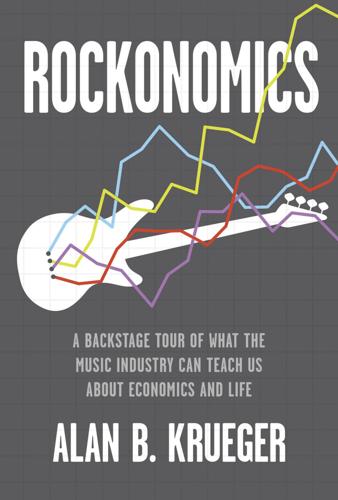
Rockonomics: A Backstage Tour of What the Music Industry Can Teach Us About Economics and Life
by
Alan B. Krueger
Published 3 Jun 2019
An alarming 11.8 percent of musicians reported entertaining “thoughts that you would be better off dead or hurting yourself in some way” in at least several days in the last two weeks, compared with 3.4 percent for the general population.*1 In 2017, 72,306 Americans died of drug overdoses according to the Centers for Disease Control, up 14 percent from the preceding year. The opioid epidemic, in the form of heroin, struck musicians long before it spread to the general public. As in many cases, problems in American society began earlier and are amplified in the music industry. Rise Up: Family Backgrounds of Top Musicians Historically, music has provided an avenue for upward mobility for individuals from disadvantaged backgrounds, and a means to effect cultural influence.
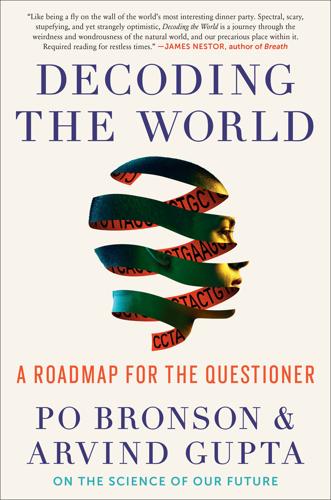
Decoding the World: A Roadmap for the Questioner
by
Po Bronson
Published 14 Jul 2020
Another 84 million people in the United States have prediabetes, a condition that if not treated leads to type-2 diabetes. Technically, 25 percent of them will have diabetes in five years. Seventy percent of them will get diabetes eventually. Which means we’re sitting on a time bomb of trouble, financially. In just five years, we should have 50 million people with diabetes. It’s going to make the opioid epidemic look puny. Prediabetes is like the methane stored in the permafrost. If we keep polluting our bodies with carbon, prediabetes will turn to diabetes ahead of schedule. The real reason that health insurance premiums are skyrocketing is quite simple. The number of sick people is increasing. Human movement has fundamentally shifted from one carbon source to another: We used to flex our muscles and burn calories to get from one place to another.
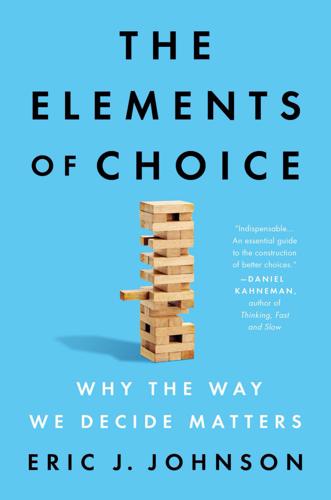
The Elements of Choice: Why the Way We Decide Matters
by
Eric J. Johnson
Published 12 Oct 2021
American Journal of Public Health 105, no. 5 (2015): e11–24. doi:10.2105/ajph.2015.302570. Lopez, German. “Purdue Pharma Pleads Guilty to Criminal Charges in $8 Billion Settlement with the Justice Department.” Vox, October 21, 2020. https://www.vox.com/2020/10/21/21526868/purdue-pharma-oxycontin-opioid-epidemic-department-of-justice. Low, How-Cheng, Maureen Da Costa, Krishnan Prabhakaran, Manjit Kaur, Aileen Wee, Seng-Gee Lim, and Chun-Tao Wai. “Impact of New Legislation on Presumed Consent on Organ Donation on Liver Transplant in Singapore: A Preliminary Analysis.” Transplantation 82, no. 9 (November 15, 2006): 1234–37. doi:10.1097/01.tp.0000236720.66204.16.

Water: A Biography
by
Giulio Boccaletti
Published 13 Sep 2021
The plant was not indigenous to these countries—it probably originated in western Asia and was likely brought to India and China by Arab traders. But the British opium trade fueled mass adoption, leading to a damaging opioid crisis. When the Chinese emperor attempted to outlaw it, the British used it as an excuse for the First Opium War. The subsequent Treaty of Nanking forced open the Chinese market to foreign imports at punitive conditions. Things got worse. The war, the opioid crisis, the competition of foreign industry, and the loss of silver all resulted in aggressive increases in domestic taxation which put further pressure on the Chinese population.
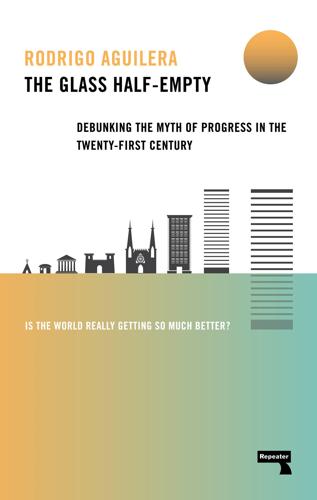
The Glass Half-Empty: Debunking the Myth of Progress in the Twenty-First Century
by
Rodrigo Aguilera
Published 10 Mar 2020
The categories considered essential (by the author) are the following, with their CPIH code in parenthesis: Food and non-alcoholic beverages (01), clothing and footwear (03), housing and utilities (04), furniture, household equipment (05), health (06), transport (07), communication (08), and education (10). Source: Office of National Statistics. As life in the West involves more of a struggle to meet basic needs, it is not surprising that many indicators of well-being have been worsening, perhaps most shockingly the decline in life expectancy in the US. This has been mostly due to the ongoing opioid epidemic, itself a very avoidable consequence of the country’s profit-driven healthcare system, but improvements in US life expectancy have been lagging many of its Western peers since the 1980s (Figure 3.7). Life expectancy in the UK has also stagnated in recent years, with some suggestions that Tory-imposed austerity is at least partly to blame due to cuts on healthcare services (ironically, mostly for older adults who tend to overwhelmingly vote Tory).24 In a nutshell, if you are a young professional in the Western and especially the Anglo-Saxon world without the benefits of a trust fund or a generous grandfather’s loan to kick start your real estate ambitions, you have a right to be angry.
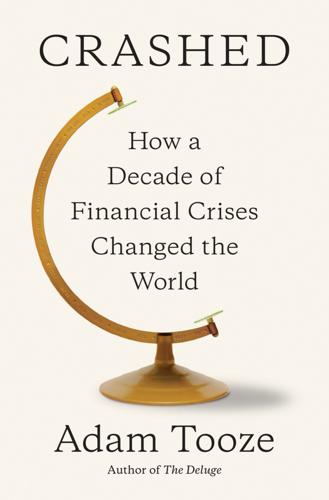
Crashed: How a Decade of Financial Crises Changed the World
by
Adam Tooze
Published 31 Jul 2018
By 2015 the share of the top 1 percent in the recovery was down to 52 percent. Gary Burtless, “Income Growth Has Been Negligible But (Surprise!) Inequality Has Narrowed Since 2007,” Brookings, July 22, 2016. 18. Politico staff, “President Obama on Inequality (Transcript),” Politico, December 4, 2013. 19. G. Beauchamp and L. Nelson, “The Opioid Epidemic: A Brief History,” June 2017, PainandPSA.org. 20. Centers for Disease Control and Prevention, “Vital Signs: Overdoses of Prescription Opioid Pain Relievers—United States, 1999–2008,” Morbidity and Mortality Weekly Report 60 (2011): 1487–1492. 21. A. Case and A. Deaton, “Rising Morbidity and Mortality in Midlife Among White Non-Hispanic Americans in the 21st Century,” Proceedings of the National Academy of Sciences 112, no. 49 (2015), 15078–15083. 22.
…
See National Economic Council (NEC) neoliberalism, 10, 396–97 Netherlands, 167, 193, 421 New Century Financial, 144 New Deal, 279, 280, 372 New Democracy, 323–24, 425, 429, 435, 516 9/11 terrorist attacks, 28, 115–16 Nissan, 558 Nixon, Richard, 11, 30–31, 44, 92 Norilsk, 223 North American Free Trade Agreement (NAFTA), 123, 158, 457, 571, 591, 592–93 Northern Rock, 145–46, 541 Noyer, Christian, 406 NSA, 484, 499 Nuland, Victoria, 497 Obama, Barack, 18, 35, 265, 267, 446, 565 bank CEOs meet with, 296 on bank nationalization, 293–94 Brexit and, 551 Hamilton Project appearance of, 25, 26–27 on decay of American dream, 456 economic team of, 200–201 election of, 200, 277 Eurogroup-Syriza debt restructuring confrontation and, 523–24 eurozone crisis and, 384, 412–13, 433, 434 fiscal responsibility and, 351–52 G20 Cannes meeting and, 412–13 G20 London summit and, 268, 271 reelection of, 445 on Trump election, 576 Obama administration budget compromise with Republicans, 390–92 China containment strategy of, 486–89 contingency plans for bond market panic, 284–85 debate bank nationalization, 294–95 eurozone crisis, 2010–12 and, 335–36, 338–39, 344–45, 365, 384–85, 394, 404–5, 412–13, 433–35, 440–41, 523-24 fiscal responsibility and, 350–53 home-owner relief, failure to provide, 281, 321 partisan hostility to, 278 Russian “reset” and, 488 stimulus package, passage of, 277–79, 280–82, 289–90 Obamacare. See Affordable Care Act Occupy Wall Street, 394–95, 459 oil and commodity price collapse of 2008, 222–23 of 2014, 503–4, 601 OMT. See Outright Monetary Transactions (OMT) 1Malaysia Development Bank (1MDB), 259–60 O’Neill, Paul, 36 opioid epidemic, deaths from, 457 Orban, Viktor, 492 originate-to-distribute mortgage lending system, 48 Orszag, Peter, 25, 26, 29, 30, 35, 200, 284, 290, 352, 461, 464 Osborne, George, 348–49, 350, 405, 550 Outright Monetary Transactions (OMT), 441, 442 Pàf, 535–36 Palin, Sarah, 3, 175, 368 Panasonic, 159 Pandit, Vikram, 197, 198 Papademos, Lucas, 410, 425 Papandreou, George, 325, 409–10 Papoulias, Karolos, 340, 409 PASOK, 323–24, 330, 357, 376, 409, 428, 435, 516 passporting agreements, 548–49, 558 Paul, Ron, 217 Paulson, Hank, 41, 137, 138, 162, 573, 609 Fannie Mae/Freddie Mac bailout and, 172–73 Lehman collapse and, 176, 177 TARP and, 180–81, 183, 195, 196, 197 Paulson, John, 379 PDCF.
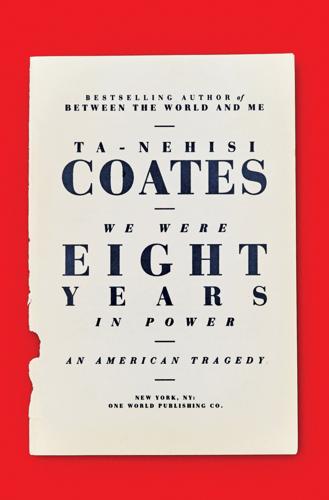
We Were Eight Years in Power: An American Tragedy
by
Ta-Nehisi Coates
Published 2 Oct 2017
But the argument that America’s original sin was not deep-seated white supremacy but rather the exploitation of white labor by white capitalists—“white slavery”—proved durable. Indeed, the panic of white slavery lives on in our politics today. Black workers suffer—if it can be called that—because it was and is our lot. But when white workers suffer, something in nature has gone awry. And so an opioid epidemic is greeted with a call for treatment and sympathy, as all epidemics should be, while a crack epidemic is greeted with a call for mandatory minimums and scorn. Op-ed columns and articles are devoted to the sympathetic plight of working class whites when their life expectancy approaches levels that, for blacks, society simply accepts as normal.

Human Frontiers: The Future of Big Ideas in an Age of Small Thinking
by
Michael Bhaskar
Published 2 Nov 2021
Think of medical progress, and how society exacerbates the breakthrough problem here. It is subject to the Idea Paradox. Easier-to-treat conditions, obvious compounds and drugs, clear public policy health wins: they've been taken. What's left are more complex and intractable diseases like Alzheimer's, or new public health crises like the opioid epidemic or small particulate pollution. But societal context doesn't help. A combination of perverse incentives, flawed models and burdensome (but in many cases irreplaceable) bureaucracy creates friction. Incentives for drug discovery are skewed: companies are disincentivised from targeting conditions that will, thanks to their intervention, quickly clear up.

Siege: Trump Under Fire
by
Michael Wolff
Published 3 Jun 2019
The president’s wife, in a voice-over, speaking in her carefully enunciated, accented English, introduced the themes she would focus on as First Lady. For seventeen months the White House had been uncertain about what Melania Trump’s message or purpose should be. So here it was: she would advance the interests of children, alert people to the dangers of social media, and help bring attention to the opioid epidemic. The First Lady’s initiative was called, oddly emphasizing her constricted English, “Be Best.” A week later, Melania entered Walter Reed National Military Medical Center. The White House was almost wholly unprepared for this event. No one seemed to have a plan for how to announce or characterize her hospitalization; no one appeared to know how to deal with the natural questions that might arise for what was described as a “benign kidney condition,” a designation that satisfied no one.

Deep Medicine: How Artificial Intelligence Can Make Healthcare Human Again
by
Eric Topol
Published 1 Jan 2019
The orthopedist’s lack of compassion was palpable: in all the months after the surgery, he never contacted me once to see how I was getting along. The physical therapist not only had the medical knowledge and experience to match my condition, but she really cared about me. It’s no wonder that we have an opioid epidemic when it’s a lot quicker and easier for doctors to prescribe narcotics than to listen to and understand patients. Almost anyone with chronic medical conditions has been “roughed up” like I was—it happens all too frequently. I’m fortunate to be inside the medical system, but, as you have seen, the problem is so pervasive that even insider knowledge isn’t necessarily enough to guarantee good care.

There Is Nothing for You Here: Finding Opportunity in the Twenty-First Century
by
Fiona Hill
Published 4 Oct 2021
Americans without a college degree tended to be concentrated in rural areas, traditional Black communities, and urban areas that had lost the previous mainstays of their economies, where the tax base and house values plummeted and educational, health, and other basic services were degraded. The North East of England had a parallel experience when I was growing up in the 1970s and 1980s and the major industries closed. Just as I had seen drugs and alcohol consume Britain and Russia in the 1980s and 1990s, the United States was engulfed by the opioid crisis after mass closures hit the U.S. coal, steel, and manufacturing sectors. As the basic welfare provisions and safety net—initially enshrined in President Franklin Delano Roosevelt’s New Deal to reconstruct the U.S. after the Great Depression of the 1930s—were steadily chipped away, colleagues at the Brookings Institution and leading American economists catalogued the “deaths of despair” from the loss of personal identity tied to meaningful jobs and the death toll from poor access to basic medical care.
…
/Russia) and, 235–36 Reagan-Gorbachev summit (1988), 85–87, 90, 197, 227, 235 Trump and, 197, 198–99, 227, 235 See also specific agreements Obama, Barack economic policies and, 154 Hill and, 3, 8, 193 Lilly Ledbetter Fair Pay Act and, 139–40 Nobel Peace Prize, 216 Trump and, 178, 181, 198–99, 249 UK/Buckingham Palace and, 214 Obama, Michelle, 2 Office of the Director of National Intelligence (ODNI) creation, 143, 302 Office of the Parliamentarian, 259 Ofqual (UK), 298–99 oil embargo (1970s), 20 Olusoga, David, 308 OPEC (Organization of Petroleum Exporting Countries), 20 Open Society Foundation (OSF), 246–47 opioid crisis, 157 opportunities creating, 357–61 disadvantaged students and, 136–37, 161–64 following World War II, 148–49 Hill and (summary), 12, 148, 353, 355 infrastructure of opportunity, 11–12, 13, 36, 46, 55, 59, 97, 120, 123, 136, 148, 151, 166, 176, 302, 305, 309, 311, 316, 320, 323, 325, 328, 332, 334, 337, 339, 340, 347, 348, 350, 357 students from richest families and, 166 summary on, 136–37 time/generation and, 148 work needs and, 11–12 See also equality of opportunity; specific individuals opportunity/place (summary) as antidote to populism, 350–51 building on local assets, 342–44 development plan for rural America, 338, 339–40 importance, 328 leaving/brain drain and, 330–31, 354 private/individual aid and, 340–42, 347–50 relocating/health care and, 333 relocation support, 332–33 safety networks and, 336–37 starting from scratch and, 330–33 tourists/museums, 346–47 transportation, 344–46 See also equality of opportunity; specific places/individuals Orbán, Viktor meetings with Trump, 219–20, 228, 250 political campaign and, 248 Soros and, 248, 250 Trump envious of, 220, 221 Trump/White House “first” visit and, 246 Organization of Petroleum Exporting Countries (OPEC), 20 Orwell, George, 26, 69, 250 O’Sullivan, Meghan, 130 Our Kids: The American Dream in Crisis (Putnam), 150–51 Outer Hebrides, Scotland, 213 Oxbridge, 58, 63, 66–67, 75, 89, 103, 320 Oxbridge and feeling “out of my league,” 66–67 Oxford Hill feeling “out of my league,” 66 student statistics, 66 P Packer, Asa, 346 pandemics influenza pandemic (1918), 173, 264 See also COVID-19 pandemic Pape, Robert, 292 Paris Climate Agreement/Accord, 177, 216 Parnas/Fruman attacking Yovanovitch, 239–40 as businessmen working in Ukraine, 239 Giuliani and, 239 Trump/manipulating Trump, 239, 240, 242, 250 wanting “dirt” on Joe/Hunter Biden, 239 Parnas, Lev.
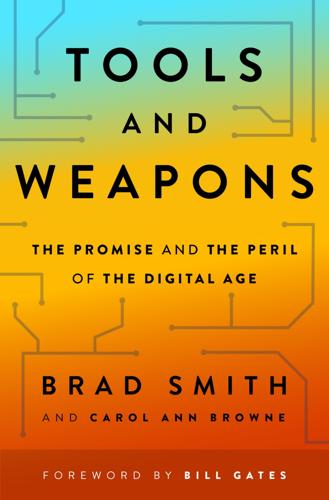
Tools and Weapons: The Promise and the Peril of the Digital Age
by
Brad Smith
and
Carol Ann Browne
Published 9 Sep 2019
To turn this group of skeptics into supporters, the Trump team created Project Alamo in Parscale’s hometown of San Antonio to consolidate fund-raising, messaging, and targeting, especially on Facebook. They communicated to these voters repeatedly with messages on topics that the data said were likely to be important to them, like the opioid epidemic and the Affordable Care Act. The Republican team described what their data operation revealed as the election approached. Ten days before the election, they estimated that they were down two points to Clinton in key battleground states. But they had identified 7 percent of the population that was still undecided about whether it would vote.
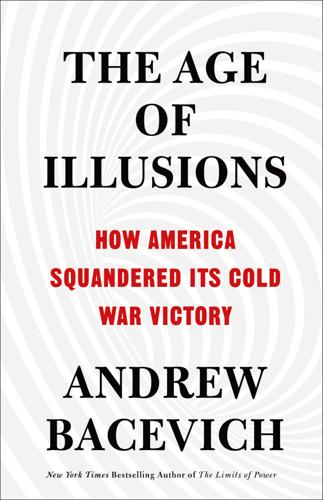
The Age of Illusions: How America Squandered Its Cold War Victory
by
Andrew J. Bacevich
Published 7 Jan 2020
See globalized neoliberalism neo-populism Neptune Spear, Operation New Deal New Hampshire primary New Orleans, Battle of New Republic new world order Bill Clinton and Buchanan and Bush Jr. and Bush Sr. and globalization and Wilson and New York Daily News New York Times Niebuhr, Reinhold Nixon, Richard Nobel Peace Prize Noriega, Manuel North American Free Trade Agreement (NAFTA) North Atlantic Treaty Organization (NATO) North Korea Novak, Robert nuclear arms Iran and North Korea and Nuremberg tribunal Obama, Barack accomplishments of Afghanistan and bin Laden and economy and election of 2008 and freedom and Hillary Clinton and Iraq and Nobel Prize and primaries of 2016 and ranking of RMA and Trump and Obamacare Obergefell v. Hodges Occupational Safety and Health Administration (OSHA) Occupy Movement opioid crisis Oslo Peace Accords Paine, Thomas Pakistan Panama Paris Accord on climate change Partisan Review Pataki, George patriarchy Paul, Rand Pax Americana globalized capitalism and policing of peace dividend peace-through-dominion Pearl Harbor attacks pensions People Perot, H. Ross Perry, Rick Persian Gulf War (1990–91) Philippines Poland Politico Polk, James poor populism post–Cold War (Emerald City) consensus Bill Clinton and Buchanan and Bush Jr. and Bush Sr. and climate change and dawn of as elite-managed democracy failure of failure of, and American condition in 2016 failure of, and elections of 1992 freedom and Fukuyama’s “end of history” and globalization and Hillary Clinton and militarism and military service and normalization of war and Obama and Perot and presidential power and primaries of 2016 and reframing conversation on Trump of 2000 and Trump’s election as rejection of Powell, Colin power elite Presbyterians preschool, universal presidential supremacy unitary executive and preventive war Princeton University privacy Progressive movement progressives Project for a New American Century Protestant, Catholic, Jew (Herberg) Puritanism Putin, Vladimir race and racism Bill Clinton and Bush Jr. and Obama and Trump and Rather, Dan Reagan, Ronald Farewell Address Gorbachev and “Star Wars” and Rector, Ricky Ray Reed, Donna Reform Party religion Republican Party Bush Jr. and McCain and primaries of 2016 Trump and retirement savings Revolution in Military Affairs (RMA) Rice, Condoleezza Rio Pact (1947) Roe v.
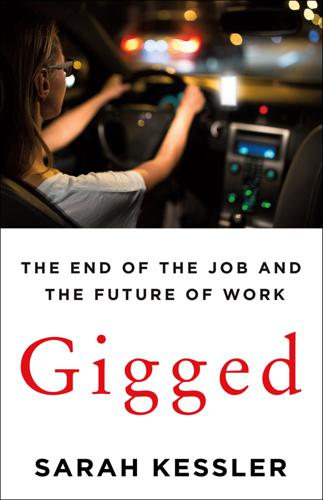
Gigged: The End of the Job and the Future of Work
by
Sarah Kessler
Published 11 Jun 2018
The tech incubator Y Combinator had recently committed to running a UBI experiment in California to understand how it worked. Facebook cofounder Chris Hughes endorsed UBI in a book. Terrence Davenport, though, was not a fan. He was nearly exasperated at what he saw as the ignorance inherent in the idea. “Do you know about the opioid crisis in this country?” he said. “Do you know that poor people in my community don’t know how to budget?” He told me that he felt Silicon Valley was a place full of “the leaders of our country” who don’t know anything about it. At the time, the other most prevalent idea for ensuring Americans better income came from Donald Trump, who had campaigned for the presidency on an “America First” ideology, which implied that sending immigrants home would help Americans get jobs.
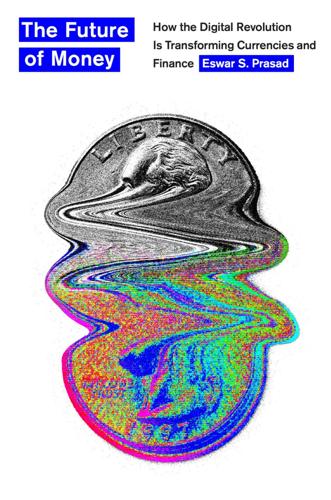
The Future of Money: How the Digital Revolution Is Transforming Currencies and Finance
by
Eswar S. Prasad
Published 27 Sep 2021
For instance, in 2019 the military wing of the militant Palestinian group Hamas developed a campaign to raise money from anonymous donors using Bitcoin. The US government has also identified Bitcoin as a financing channel that facilitates the cross-border trafficking of fentanyl and other synthetic opioids that have fueled the devastating opioid crisis in the United States. In parallel with the decline in Bitcoin’s use as a medium of exchange and its rising status as a speculative asset, the share of Bitcoin transactions accounted for by illegal activities has fallen over time. One set of researchers estimates that nearly 80 percent of all Bitcoin transactions in 2012, measured by both volume and value, were accounted for by illegal transactions.
…
See also “Acting Assistant Attorney General Mythili Raman Testifies before the Senate Committee on Homeland Security and Governmental Affairs,” US Department of Justice, November 18, 2013, https://www.justice.gov/opa/speech/acting-assistant-attorney-general-mythili-raman-testifies-senate-committee-homeland. On the linking of Bitcoin with the opioid crisis in the United States, see “Advisory to Financial Institutions on Illicit Financial Schemes and Methods Related to the Trafficking of Fentanyl and Other Synthetic Opioids,” White House, August 21, 2019, https://www.whitehouse.gov/wp-content/uploads/2019/08/Fentanyl-Advisory-Money-Tab-D.pdf. The research cited here appears in Foley, Karlsen, and Putnins (2019).

The Great Wave: The Era of Radical Disruption and the Rise of the Outsider
by
Michiko Kakutani
Published 20 Feb 2024
“To say that war brings benefits and can help to build stronger, even fairer, societies is not to defend it,” MacMillan adds. “Of course we would rather improve our world, help the weak and unfortunate, or have advances in science and technology in a state of peace. Yet finding the will and the resources to make great advances is harder in peacetime; it is all too easy to put off doing something about poverty, the opioid crisis or climate change until another day. War concentrates our attention and, like it or not, has done so throughout human history.” It’s an argument that echoes ideas articulated by the Austrian-born economist Joseph Schumpeter in 1942, in the wake of the Great Depression. Crises, he asserted, could become cradles for innovation by catalyzing the process he called “creative destruction”: In freeing up capital, the destruction of old companies could lead to the development of transformative new industries and breakthrough products, while the pressures of an economic downturn could incentivize inventors and outsiders to find creative solutions to old and new problems.
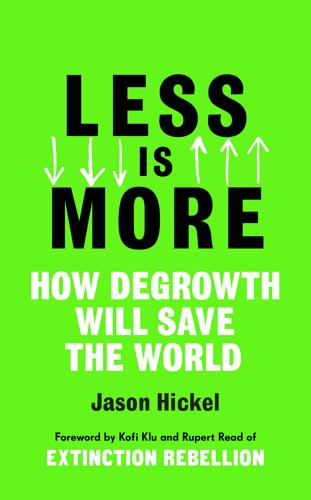
Less Is More: How Degrowth Will Save the World
by
Jason Hickel
Published 12 Aug 2020
Somehow we have to add the equivalent of another British economy next year, on top of what we are already doing, and then add even more than that the following year, and so on. Where can this quantity of growth possibly be found? The pressures become enormous. It’s what is driving the pharmaceutical companies behind the opioid crisis in the United States; the beef companies that are burning down the Amazon; the arms companies that lobby against gun control; the oil companies that bankroll climate denialism; and the retail firms that are invading our lives with ever-more sophisticated advertising techniques to get us to buy things we don’t actually want.
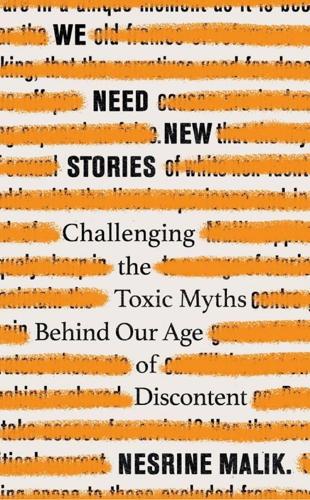
We Need New Stories: Challenging the Toxic Myths Behind Our Age of Discontent
by
Nesrine Malik
Published 4 Sep 2019
But white elite guilt could also not countenance that their own were part of this nationalist movement; it had to be the other whites, the poor ones, those going through some terrible crisis, and so the economic deprivation reasoning again won. Adam Serwer of the Atlantic calls this ‘the Calamity Thesis’, the belief that ‘Trump’s election was the direct result of some great, unacknowledged social catastrophe – the opioid crisis, free trade, a decline in white Americans’ life expectancy – heretofore ignored by cloistered elites in their coastal bubbles.’ ‘The irony’, he points out, is that ‘the Calamity Thesis is by far the preferred white-elite explanation for Trumpism, and is frequently invoked in arguments among elites as a way of accusing other elites of being out of touch.’
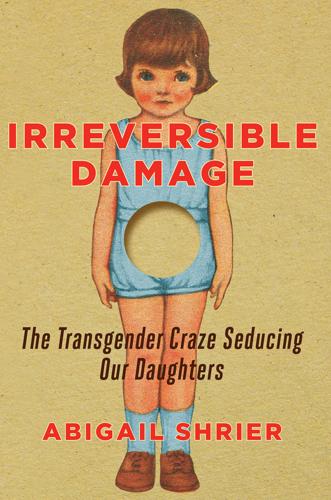
Irreversible Damage: The Transgender Craze Seducing Our Daughters
by
Abigail Shrier
Published 28 Jun 2020
The shop owner lives by the conceit that the customer is always right; the physician trains to acquire a critical understanding of a patient’s needs. Giving in to a patient’s request is appropriate only when it coincides with his professional judgment. The erasure of this distinction has arguably enabled and accelerated the opioid crisis, with doctors behaving like vendors, rushing to meet an existing demand rather than evaluating its appropriateness and sometimes frustrating it. “You’re in pain? Here’s some Percocet.” “You’re feeling dysphoric? Here’s a script for testosterone. Here’s a letter for surgery.” It isn’t hard to see parallels between the medical professionals in both instances: much like physical pain, gender dysphoria leans heavily on a patient’s claim about herself.
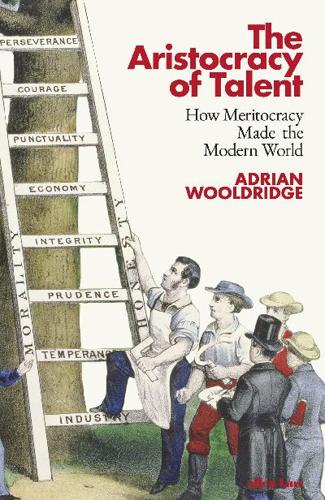
The Aristocracy of Talent: How Meritocracy Made the Modern World
by
Adrian Wooldridge
Published 2 Jun 2021
In France, Gilles Le Gendre, president of Macron’s party in the National Assembly, told an interviewer that the government had probably been ‘too intelligent, too subtle, too technical’ in explaining its policies to the French people.19 In Britain, Janan Ganesh, a Financial Times columnist, wrote that liberal Londoners, like their confreres in other sophisticated cities, ‘look at their domestic stragglers and feel … shackled to a corpse’.20 In America, David Rothkopf, a professor of international relations and a former member of Bill Clinton’s administration, has described Donald Trump’s supporters as ‘threatened by what they don’t understand and what they don’t understand is almost everything’. Late-night comedians got easy laughs by making fun of working-class Americans even as that class was ravaged by ‘deaths of despair’ and the opioid epidemic. In Britain, the Brexit vote gave many liberals pause about the merits of democracy. Richard Dawkins, the author of The Selfish Gene (1976), said that ‘it’s unfair to thrust onto unqualified simpletons the responsibility to take historic decisions of great complexity and sophistication’. Nick Cohen, a columnist on the Observer, described the Brexit campaign as ‘a know-nothing movement of loud mouths and closed minds’.21 Writing about Clacton, a seaside town that voted heavily for Leave, Matthew Parris, a former Conservative MP and Times columnist, declared that ‘this is Britain on crutches.
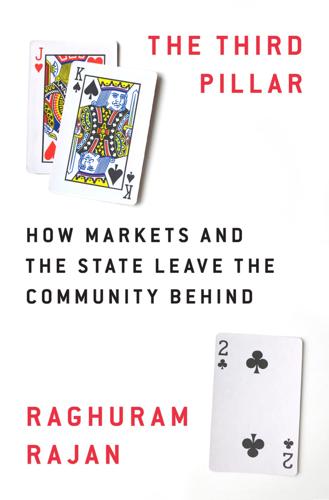
The Third Pillar: How Markets and the State Leave the Community Behind
by
Raghuram Rajan
Published 26 Feb 2019
In the United States, minority and immigrant communities were hit first by joblessness, which led to their social breakdown in the 1970s and 1980s. In the last two decades, communities in small towns and semirural areas, typically white, have been experiencing a similar decline as large local manufacturers close down. The opioid epidemic is just one symptom of the hopelessness and despair that accompanies the social breakdown of once-healthy communities. The technological revolution has been disruptive even outside economically distressed communities. It has increased the wage premium for those with better capabilities significantly, with the best employed by high-paying superstar firms that increasingly dominate a number of industries.
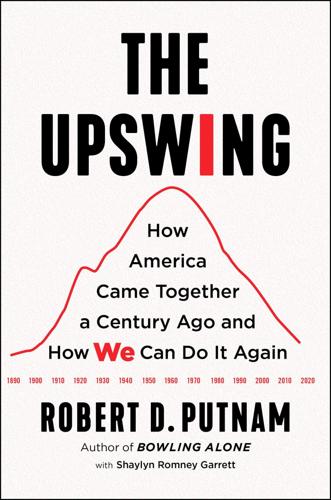
The Upswing: How America Came Together a Century Ago and How We Can Do It Again
by
Robert D. Putnam
Published 12 Oct 2020
In the last few years, however, that line not only stopped ascending, but began to descend.10 This unfortunate change can be largely attributed to sharp rises in fatalities due to drugs, alcohol, or suicide—more commonly known as “deaths of despair.”11 In their 2020 book, Deaths of Despair and the Future of Capitalism, economists Anne Case and Angus Deaton offer powerful evidence of the growing incidence of deaths of despair and trace the origins of this trend to deep-seated social inequities.12 Drug overdoses, in particular, have recently spiked, reflecting an opioid epidemic related to social strife, impediments to economic mobility, and lethal misconduct by the pharmaceutical industry.13 While these deaths of despair afflict the entire nation, they especially affect rural communities, working-class individuals, and young adults.14 The emergence of deaths of despair in recent years is important not merely because of the human tragedies they reveal, but because they are a warning signal that the broader social trends discussed in this book may bring yet more calamities.

Calling Bullshit: The Art of Scepticism in a Data-Driven World
by
Jevin D. West
and
Carl T. Bergstrom
Published 3 Aug 2020
In 1980, two researchers published a brief hundred-word note in The New England Journal of Medicine, reporting a low rate of addiction to narcotic painkillers based on medical records of hospitalized patients. Following the release of the opioid painkiller OxyContin, this paper was widely cited in the medical literature as evidence that opioids rarely cause addiction—a massive overstatement of its findings. Some scholars go so far as to ascribe a portion of the ongoing opioid crisis to the uncritical use of the paper to minimize concerns about addiction. In 2017, the editors of the New England Journal took the highly unusual step of issuing a warning that now appears atop the article. While the warning does not question the paper’s findings, it cautions: “For reasons of public health, readers should be aware that this letter has been ‘heavily and uncritically cited’ as evidence that addiction is rare with opioid therapy.”
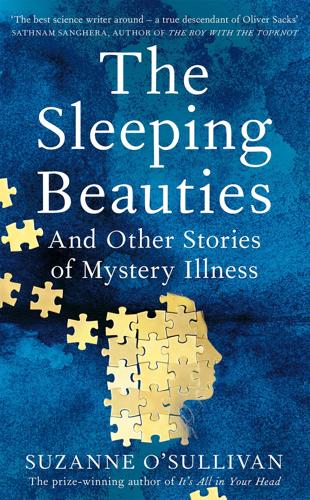
The Sleeping Beauties: And Other Stories of Mystery Illness
by
Suzanne O'Sullivan
Published 31 Mar 2021
Some have implied there may be a darker reason why doctors like to diagnose, thinking it a means of social control. Giving something a medical label makes it a doctor’s business. I still truly believe that most, although certainly not all, scientists and doctors are working for the greater good – but we are not always as clever as we think we are, and are certainly slow to learn from our mistakes. The opioid crisis and the problem of antibiotic overuse leading to antibiotic resistance do not seem to have done anything to dampen our enthusiasm for over-medicalization. In the field of functional neurological disorders, doctors see the end result of embodied disease labels and it can be a grim sight. Sienna is now in her late twenties and has so many chronic medical problems, all without proven pathology, that she will never be able to live in the world normally.
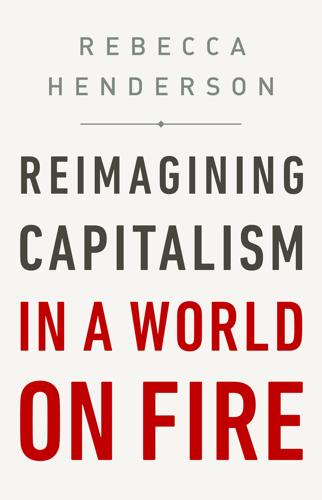
Reimagining Capitalism in a World on Fire
by
Rebecca Henderson
Published 27 Apr 2020
Gretchen Morgenson, “Defiant, Generic Drug Maker Continues to Raise Prices,” New York Times, Apr. 14, 2017, www.nytimes.com/2017/04/14/business/lannett-drug-price-hike-bedrosian.html. 19. Joyce Geoffrey et al., “Generic Drug Price Hikes and Out-of-Pocket Spending for Medicare Beneficiaries,” Health Affairs 37, no. 10 (2018): 1578–1586. 20. Danny Hakim, Roni Caryn Rabin, and William K. Rashbaum, “Lawsuits Lay Bare Sackler Family’s Role in Opioid Crisis,” New York Times, Apr. 1, 2019, www.nytimes.com/2019/04/01/health/sacklers-oxycontin-lawsuits.html. 21. “Big Oil’s Real Agenda on Climate Change,” Influence Map, 2019, https://influencemap.org/report/How-Big-Oil-Continues-to-Oppose-the-Paris-Agreement-38212275958aa21196dae3b76220bddc. 22. Anne Elizabeth Moore, “Milton Friedman’s Pencil,” The New Inquiry, Apr. 18, 2017, https://thenewinquiry.com/milton-friedmans-pencil/. 23.
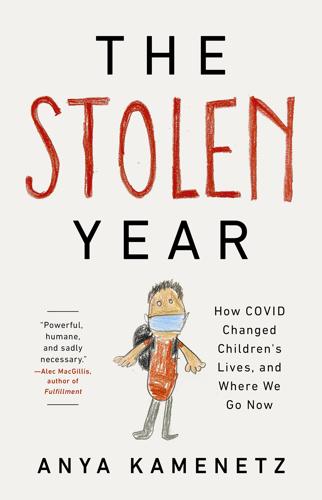
The Stolen Year
by
Anya Kamenetz
Published 23 Aug 2022
One in four children in the United States is living in a single-parent household, the highest percentage in the world. In five out of six cases, that parent is the mother. That does mean 3.25 million children live with only their father. And grandparents, 2.7 million of them, are raising their grandchildren—a number that’s risen in some places over the past decade because of the opioid crisis. There’s an estimated 114,000 same-sex couples raising children in this country. Trans and gender-nonconforming parents and caregivers have distinct experiences as well, though there isn’t much research about them. More and more people each year feel comfortable telling pollsters about their gender identity, so estimates of the size of the trans and gender-nonconforming population keep rising.
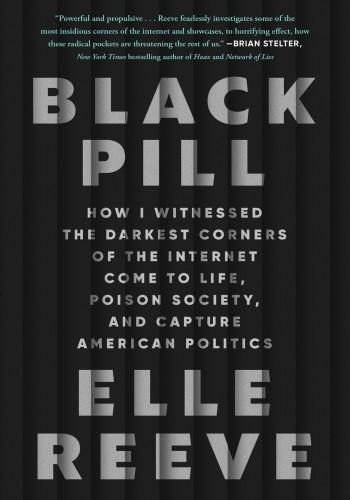
Black Pill: How I Witnessed the Darkest Corners of the Internet Come to Life, Poison Society, and Capture American Politics
by
Elle Reeve
Published 9 Jul 2024
McLaren thought a young impressionable person searching for an excuse to stay in the movement could look at Parrott and ask, How could a good person be involved in a bad thing? How could a person have nine parts good, but one part very, very, very bad? In the course of her treatment, Connie had become addicted to painkillers. She was not unusual: the opioid crisis had been in full swing for a decade, when opioid prescription sales quadrupled. By 2014, the CDC was warning doctors to carefully check patients’ records, because the people most at risk of opioid overdose tended to get them from a doctor’s prescription. And then, Parrott said, Connie overdosed.
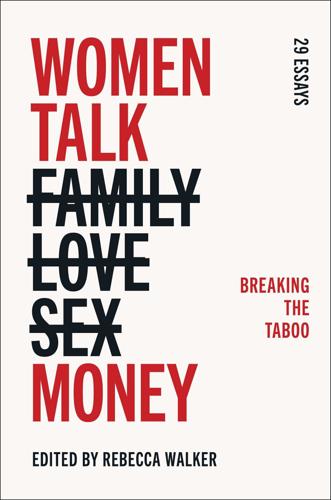
Women Talk Money: Breaking the Taboo
by
Rebecca Walker
Published 15 Mar 2022
And, over the past few months, I haven’t been able to stop thinking about all the ways the choices she made during her life have shaped mine. This obsession with Lucy began at a retreat in Palm Springs last May. It was a small gathering where women and nonbinary folks met in the desert to eat and dance and talk about things that matter: from sex and parenthood to the opioid crisis and climate change. I’d been to the retreat once before, and everyone I met was so smart and warm and curious that I promised myself I would go back. But when the invitation arrived, I wavered. Spending a thousand dollars for three days in the California desert felt wildly self-indulgent. I’d just turned thirty-eight and, after two years of deliberating, I’d finally decided to quit my job.
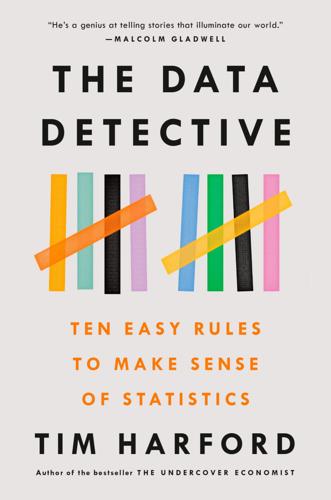
The Data Detective: Ten Easy Rules to Make Sense of Statistics
by
Tim Harford
Published 2 Feb 2021
Does Facebook tend to make us happy or sad, and can we predict why different people react in different ways? How many species are in danger of extinction, is that a big proportion of the total, and is the cause climate change, the spread of human agriculture, or something else entirely? Is human innovation speeding up, or slowing down? How serious is the impact of the opioid crisis on the health of middle America? Is teenage drinking becoming less common—and if so, why? I grew increasingly uneasy when fans of More or Less complimented the way we “debunked false statistics.” Sure, we did that, and it was fun. But slowly, learning on the job, I came to appreciate that the real joy was not in shooting down falsehoods but in trying to understand what was true.

Architects of Intelligence
by
Martin Ford
Published 16 Nov 2018
We will get there, but it’s a question of whether we get there peacefully through a universal agreement or whether there are riots on the street and people getting killed. I don’t know the method, but I don’t see any other ending. MARTIN FORD: You could argue that technology is already having an impact of that sort. We do have an opioid epidemic in the US at the moment, and automation technology in factories has likely played a role in that in terms of middle-class job opportunities disappearing. Perhaps opioid use is tied to a perceived loss of dignity or even despair among some people, especially working-class men? GARY MARCUS: I would be careful about making that assumption.

The Bill Gates Problem: Reckoning With the Myth of the Good Billionaire
by
Tim Schwab
Published 13 Nov 2023
And American philanthropy has always had a particularly rich tradition of scandal and controversy. In recent years, we’ve learned that convicted sex offender Jeffrey Epstein used charitable donations to build a network of influence that immunized him from public scrutiny. The Sackler family, whose profiteering from the sales of OxyContin helped drive an opioid epidemic in the United States, leaned hard into philanthropy to distract polite society from looking too closely into the source of their wealth. Lance Armstrong built a reputation as a humanitarian through his charitable work with the Livestrong foundation even as he faced accusations—later confirmed to be true—that his dominant cycling career had been fueled by performance-enhancing drugs.
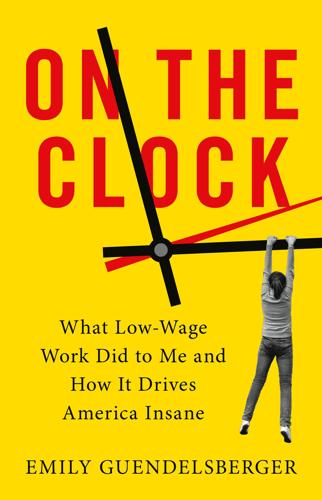
On the Clock: What Low-Wage Work Did to Me and How It Drives America Insane
by
Emily Guendelsberger
Published 15 Jul 2019
It’s as if I have a set amount of willpower each day, and I use it all up just putting one foot in front of the other all day. I get so panicked about my lack of progress that I force myself to set up a phone interview with an expert on opioid addiction, hoping this baby step will prime the writing pump. I can’t overemphasize the presence of the opioid crisis in the Louisville area. It’s everywhere—from the front page of every newspaper to the billboards along my commute to the bed I sleep in. It used to belong to Katie’s younger brother, who’d gotten addicted to Oxycontin after a difficult brain surgery and made the classic transition to heroin after his prescriptions ran out.
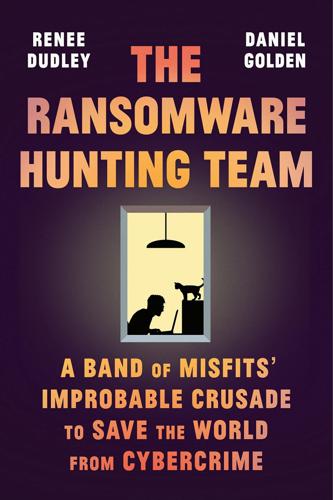
The Ransomware Hunting Team: A Band of Misfits' Improbable Crusade to Save the World From Cybercrime
by
Renee Dudley
and
Daniel Golden
Published 24 Oct 2022
“He would be very difficult to replace.” The Gillespies arrived early at the FBI’s Hoover Building on a sunny April morning. The award ceremony began, and honorees from each field office approached FBI director Christopher Wray individually to receive their awards. They were chosen for their work fighting the opioid crisis, teen violence, human trafficking, poverty, and hate crimes. Michael, the youngest, was one of two recipients that year who battled cybercrime. Wearing a dark suit that swallowed his slender frame, Michael beamed with pride as he accepted his award and shook hands with Wray. In a press release, the FBI cited Michael for creating ID Ransomware and for “having cracked and decrypted multiple ransomware strains himself.”
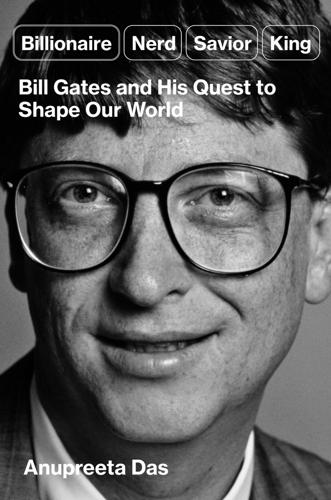
Billionaire, Nerd, Savior, King: Bill Gates and His Quest to Shape Our World
by
Anupreeta Das
Published 12 Aug 2024
Grand philanthropic gestures acted at least partly as a shield for the Sackler family even as they knowingly fed an opioid addiction crisis around the country, and made billions off selling Oxycontin through their company, Purdue Pharma.26 For years, the Sackler name graced museum wings and art institutes, endowed university chairs, supported medical research and more, and family scions were often seen talking about their family’s philanthropic traditions. (In 2021, following the growing outrage at Purdue’s role in the opioid crisis, the Metropolitan Museum of Art scrubbed the Sackler name from some of its exhibition halls.)27 Many billionaires also give money away because of the diminishing marginal utility of wealth. The media often casts big donations within the framework of selfishness and generosity; a billionaire who chooses to give money when he could have been buying yachts and mansions is seen as having taken the morally correct path.
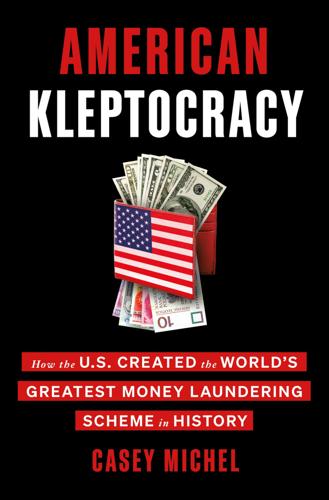
American Kleptocracy: How the U.S. Created the World's Greatest Money Laundering Scheme in History
by
Casey Michel
Published 23 Nov 2021
* * * BY THE MID-2010S, the U.S. had rolled into a new chapter, both in terms of its politics and its antikleptocracy efforts, that few could have seen coming. In the Senate, following nearly four decades of service, Carl Levin finally retired, bringing to a close a career that arguably did more than any other in Washington to highlight the spiraling threats of modern kleptocracy. The PSI continued on, diving into cybersecurity and the opioid crisis and healthcare fraud. But the focus on money laundering and on kleptocracy—despite the U.S.’s passage of legislation like the Magnitsky Act, which specifically sanctioned corrupt Russian officials—waned. In the White House, the Obama administration watched Russia bulldoze into Crimea, and watched a regime in Syria bulldoze antigovernment protesters.
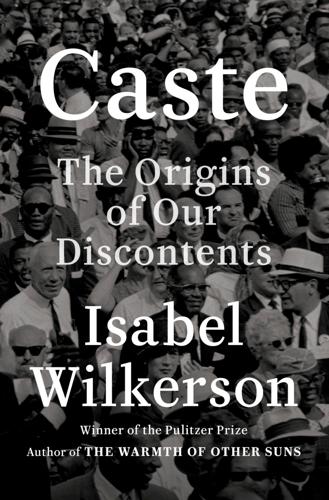
Caste: The Origins of Our Discontents
by
Isabel Wilkerson
Published 14 Sep 2020
Just as pollutants don’t confine themselves to the air around a factory, this single caste inequity has spared no one. The undertreatment of the subordinate caste leaves them to suffer needlessly, and the overtreatment of the dominant caste may have contributed to the rising mortality rate for white Americans who become addicted to opioids. Worse still, society was less prepared for the opioid crisis than it might have been had it not missed the chance to build a comprehensive framework for dealing with substance abuse in the 1990s, when it was the subordinate caste that was in need of help. The crack cocaine epidemic of that era was dismissed as an urban crime problem rather than addressed as a social and health crisis, considered a black problem rather than a human one.
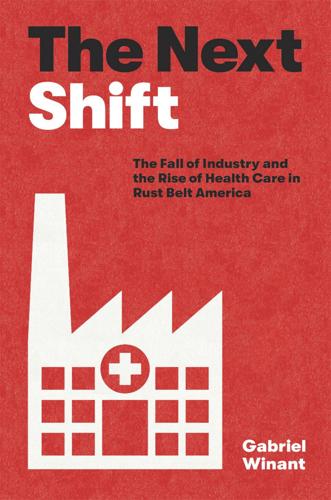
The Next Shift: The Fall of Industry and the Rise of Health Care in Rust Belt America
by
Gabriel Winant
Published 23 Mar 2021
Bradley and Lauren A. Taylor, The American Health Care Paradox: Why Spending More Is Getting Us Less (New York: PublicAffairs, 2013); Richard (Buz) Cooper, Poverty and the Myths of Health Care Reform (Baltimore: Johns Hopkins University Press, 2016); Nicolas P. Terry, “Structural Determinism Amplifying the Opioid Crisis: It’s the Healthcare, Stupid!” Northeastern University Law Review 11, no. 1 (2018), 315–371. 5. Ruth Wilson Gilmore, Ruth Wilson Gilmore, Golden Gulag: Prisons, Surplus, Crisis, and Opposition in Globalizing California (Berkeley: University of California Press, 2007). 6. Gerard F. Anderson, Uwe E.
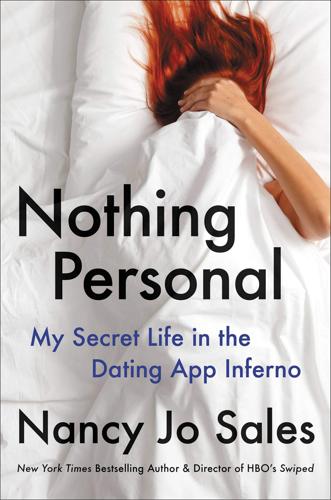
Nothing Personal: My Secret Life in the Dating App Inferno
by
Nancy Jo Sales
Published 17 May 2021
When researchers talk about this tragic phenomenon, they cite various factors that could be causing it, including the pressures on women working outside the home and taking care of children at the same time; the rise in single-parent households headed by women; and a challenging economy. Some talk about alcohol abuse and the opioid crisis. But this always sounds to me like only part of the story. What about the lack of societal support for women? And what about having to live in a world where to be a woman or a girl means to experience inequality, often sexual harassment and assault, domestic violence, casual menace, dismissiveness, and disregard?
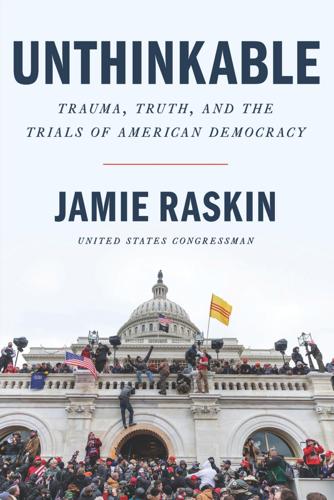
Unthinkable: Trauma, Truth, and the Trials of American Democracy
by
Jamie Raskin
Published 4 Jan 2022
Madam Speaker, my family suffered an unspeakable trauma on New Year’s Eve a week ago. But mine was not the only family to suffer such terrible pain in 2020. Hundreds of thousands of families in America are still mourning their family members. Many families represented in the Congress are still mourning their family members who have been taken away from us by COVID-19, by the opioid crisis, by cancer, by gun violence, by the rising fatalities associated with the crisis in mental and emotional health. Enough, my beloved colleagues. It is time for America to heal. It is time for our families and communities to come together. Let us stop pouring salt in the wounds of America for no reason at all.
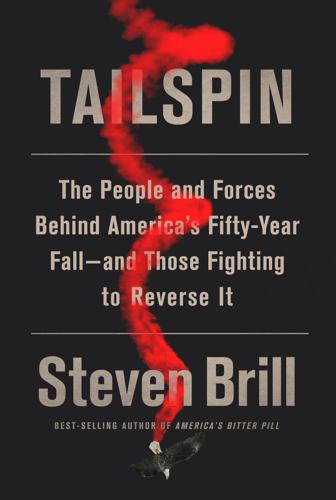
Tailspin: The People and Forces Behind America's Fifty-Year Fall--And Those Fighting to Reverse It
by
Steven Brill
Published 28 May 2018
“offered one or another”: “The Financial Crisis: Why Have No High Level Executives Been Prosecuted?” New York Review of Books, January 9, 2014, http://www.nybooks.com/articles/2014/01/09/financial-crisis-why-no-executive-prosecutions/. McKesson Corporation: Gretchen Morgenson, “Hard Questions for a Company at the Center of the Opioid Crisis,” New York Times, July 21, 2017, https://www.nytimes.com/2017/07/21/business/mckesson-opioid-packaging.html; “Consumers, but Not Executives, May Pay for Equifax Failings,” The New York Times, September 13, 2017, https://www.nytimes.com/2017/09/13/business/equifax-executive-pay.html. The job of enforcing: Trump nominated David Zatezalo to be the assistant secretary of labor for mine safety and health on September 2, 2017: https://www.whitehouse.gov/the-press-office/2017/09/02/president-donald-j-trump-announces-intent-nominate-personnel-key.

Coders: The Making of a New Tribe and the Remaking of the World
by
Clive Thompson
Published 26 Mar 2019
For Christmas he made a bot that you could text with a picture of a loved one; it used AI to analyze the person’s surroundings and recommend a gift to buy on Amazon. (When a friend sent the bot a picture of a musician playing guitar, it recommended a retro-style record player.) Michael riffed on political events, too: When the opioid crisis was in the news, he began working on a messaging app that could refer people to the nearest addiction-help services. When he woke up on Martin Luther King Jr. Day he was dismayed to see people posting hostile messages on Twitter. “I thought of making a bot to yell at them,” he says, “but then it might just be my Martin Luther King bot yelling at a Russian bot.”
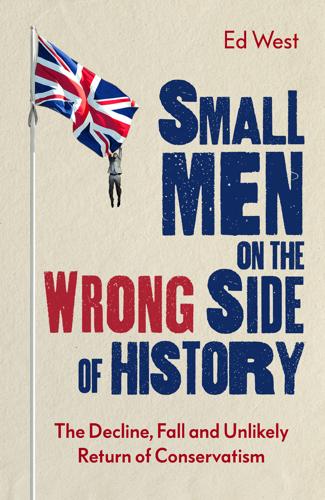
Small Men on the Wrong Side of History: The Decline, Fall and Unlikely Return of Conservatism
by
Ed West
Published 19 Mar 2020
I’d trust them to raise my children if we ever died in a plane crash, perhaps with the proviso that they promised to make them watch Kenneth Clark’s Civilisation. Yet the outrage machine is dividing thousands of similarly good people in a completely needless way, and as society has become more individual-orientated so more people have turned to the hit of political outrage to fill the void. Perhaps politics is just a drug for atomised people, the opioid crisis for elites; delivered straight to the brain via our iPhone, the most easily available addictive material around.20 Political partisanship is addictive, and like most addictions not just personally destructive, but also socially corrosive, inflaming the same sense of moral outrage and righteousness that once inspired sectarian conflict in Europe.

The Technology Trap: Capital, Labor, and Power in the Age of Automation
by
Carl Benedikt Frey
Published 17 Jun 2019
So in 2015, when two Princeton economists, Anne Case and Angus Deaton, winner of the Nobel Prize in Economics, shockingly found that annual death rates among middle-aged whites had risen since the turn of a century after decades of improvements, they naturally suggested that the reversal might reflect the long-standing process of diminishing opportunity in the labor market for working-class whites, whose departure from the middle of society’s spectra has come with so much distress.18 Rising mortality, they found, was not caused by typical killers like heart disease and diabetes but by suicide and substance abuse.19 Reports on subjective well-being, it is true, have consistently shown that people who experience unemployment are significantly less happy, even when a wide range of factors (including income and education) are controlled for.20 Men fare the worst mentally from unemployment, especially if it occurs in their prime years.21 One widely cited study even found that “joblessness depressed well-being more than any other single characteristic, including important negative ones such as divorce and separation.”22 But while there is compelling evidence to suggest that health and well-being are closely related to labor market outcomes, to what extent the loss of jobs due to technology and trade can account for the recent upsurge in the “deaths of despair” documented by Case and Deaton remains an open question. The growing misuse of and addiction to opioids has turned into a serious national crisis that affects public health and social welfare. America’s opioid crisis is certainly part of the story, but part of it might also be the consequence of rising joblessness. What is beyond question is that disappearing middle-income jobs have caused much material and emotional suffering, which has had a devastating impact on a broad swath of the middle classes. The Geography of New Jobs The drifting apart of American society is about more than unequal gains.
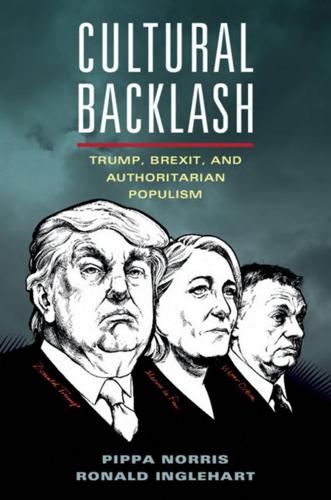
Cultural Backlash: Trump, Brexit, and Authoritarian Populism
by
Pippa Norris
and
Ronald Inglehart
Published 31 Dec 2018
This situation is believed to have made the less secure strata of society susceptible to the anti-establishment, nativist, and xenophobic scare-mongering exploited of authoritarian-populist movements, parties, and leaders, blaming ‘Them’ for stripping prosperity, job opportunities, and public services from ‘Us.’ In this view, Trump’s base is attracted by his Make America Great Again promises to restore blue-collar jobs lost in factories, mills, and mines, to attack the opioid crisis devastating local communities, to rebuild America’s crumbling infrastructure of roads and 350 Trump’s America bridges, to scrap or renegotiate free trade deals like NAFTA and TPP, to reduce the costs of healthcare insurance, and to implement massive tax cuts for the less well-off. The contemporary version of the economic grievance argument links globalization directly with rising mass support for populism, which is understood to reflect divisions between the winners and losers from labor markets.37 In this argument, economic vulnerability is conducive to in- group solidarity, rigid conformity to group norms, and rejection of outsiders.